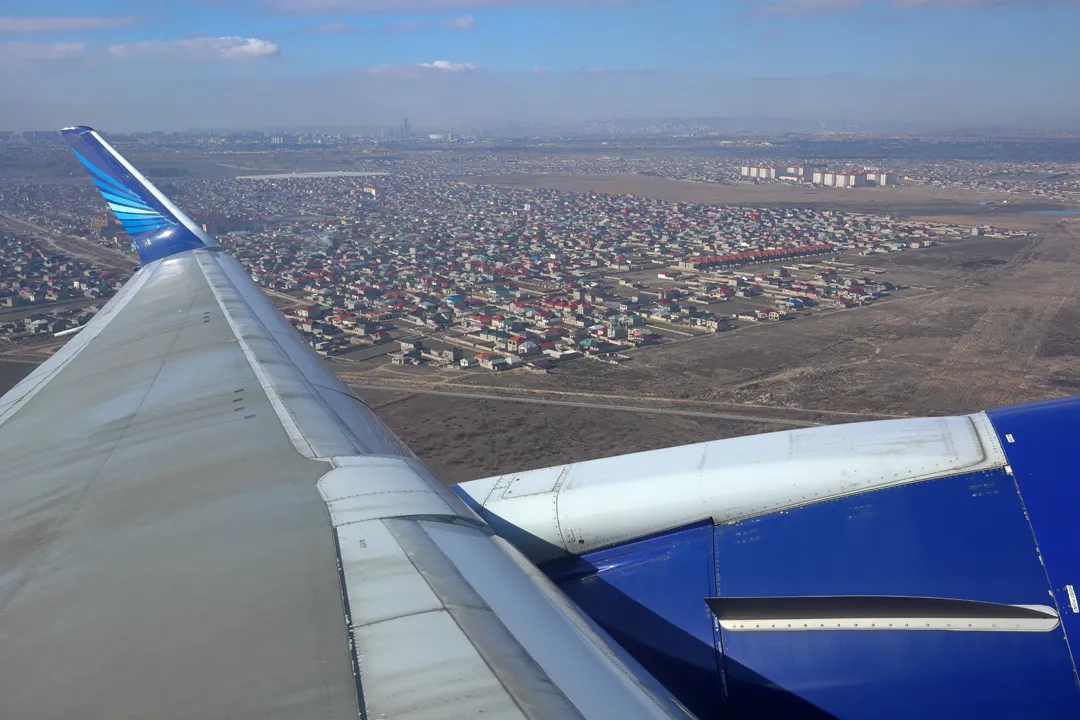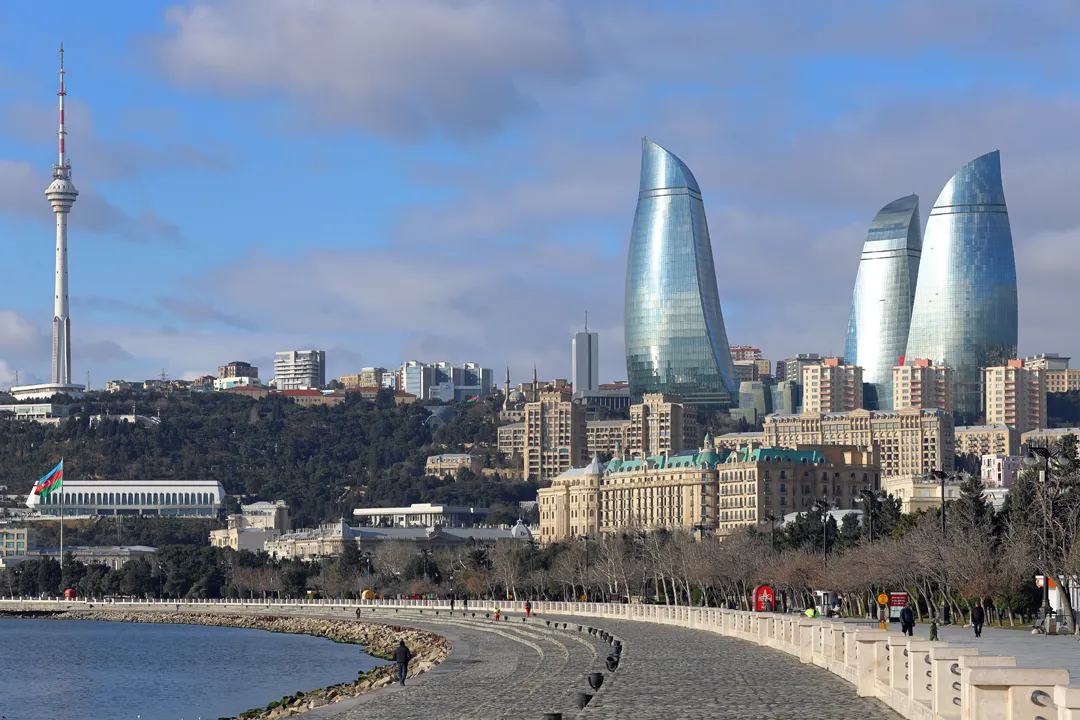- Travelling to Azerbaijan
- The Old City, medieval core of Baku
- National Carpet Museum and Palace of Happiness
- Baku Boulevard, where the city meets the Caspian Sea
- Heydar Aliyev Center, Azerbaijan’s most comprehensive museum
- A closer look at the Flame Towers
- Museum of Modern Art and departure from Azerbaijan
Travelling to Azerbaijan
Centuries ago in the time of the Silk Road, the region which is now Azerbaijan occupied a prime location at the middle of the legendary trade route. Today, the situation is different, as the country of 10 million is unenviably sandwiched between Russia and Iran, making it an unattractive destination for major European or Asian airlines. In other words, it is not convenient to travel there. After getting all the way to Dubai, we were only 1100 km away from Baku. This is a relatively short hop, equivalent to the distance between Beijing and Tokyo, but the only option not involving a low-cost airline is the single daily flight operated by the flag carrier, Azerbaijan Airlines.
Like all other foreign airlines in Dubai, Azerbaijan Airlines uses Concourse D of Terminal 1, a generic white, boxy structure crammed into the airport’s western corner. To compensate for the bland architecture, some unusual aircraft can be seen here. We passed by an Airbus A310, an obsolete model which has been phased out worldwide except in Iran and Afghanistan.
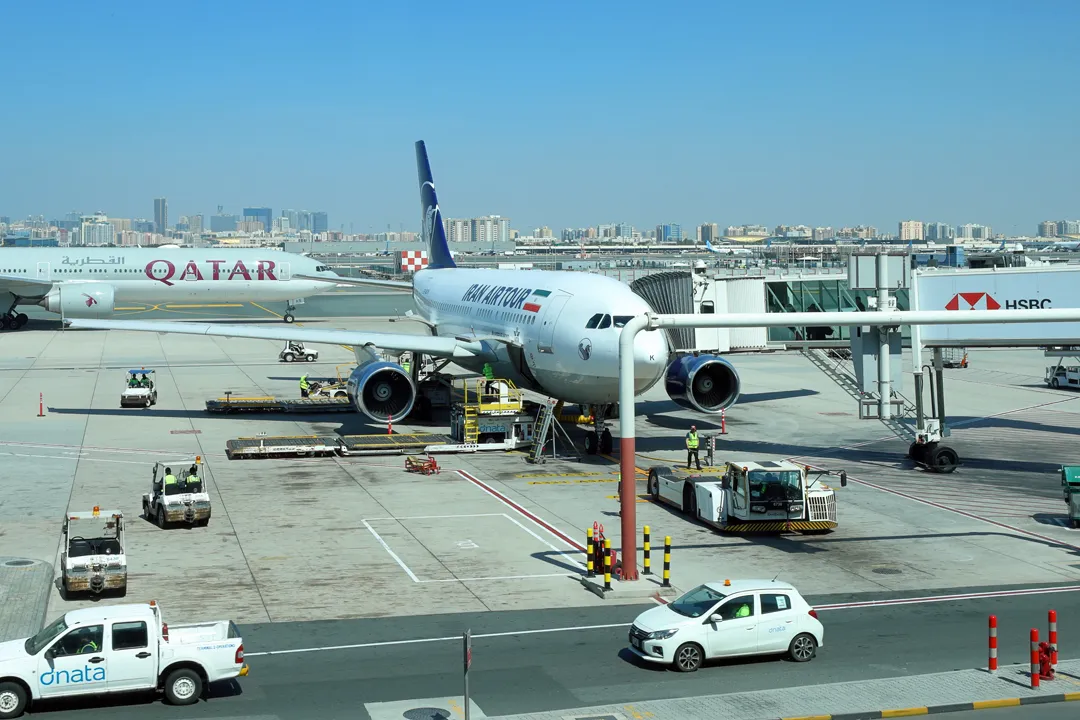
The three-hour flight to Baku was uneventful, though uncomfortable because a Boeing 787 had been substituted for the originally scheduled Boeing 767. The entire premium economy cabin was left empty — the 767 does not have premium economy, so no tickets were sold for that class. It was a surreal sight.
We landed in Baku under a grey sky, foreshadowing the weather in the days to come. Heydar Aliyev International Airport, named after Azerbaijan’s former president, is a modern and efficient facility, and the only airport in any former Soviet country to be rated 5 stars by Skytrax. Since I am eligible to obtain a visa on arrival, I was directed to a kiosk with a passport reader and was able to complete the process in no more than one or two minutes. Although, as we later discovered, this would turn out to be the only place in Azerbaijan where my credit card worked.
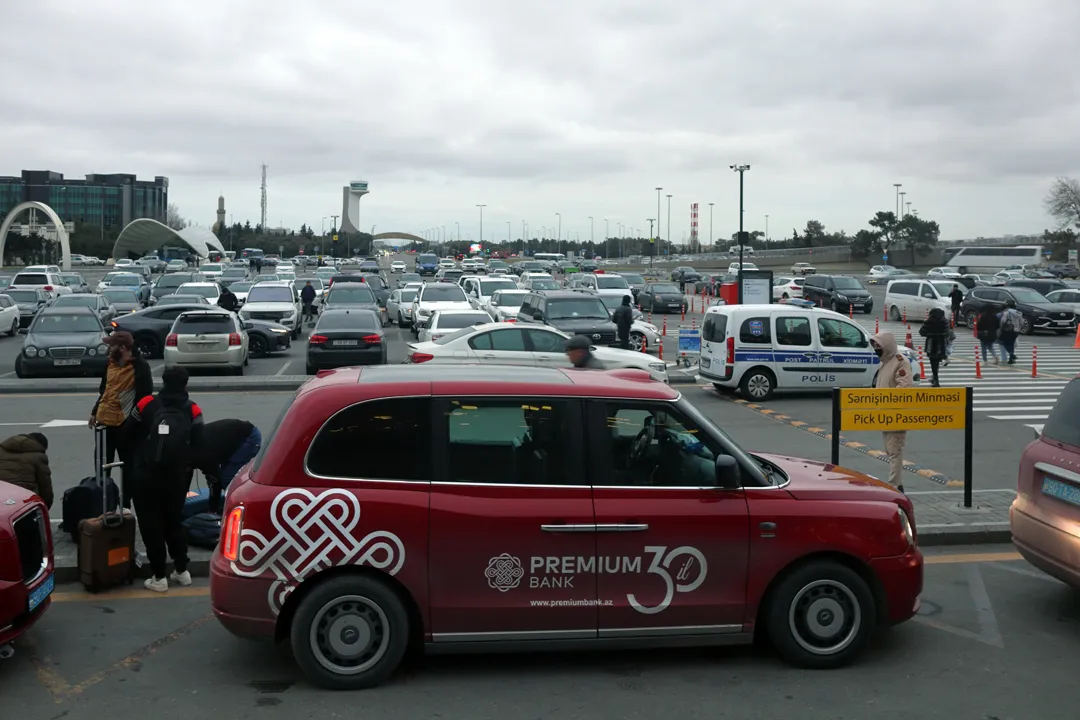
Ground transportation to the city is somewhat more complicated. A direct bus to the central railway station runs every 20 minutes, costing only 2 manat (the exchange rate is fixed at 1.7 manat for 1 USD). The stop is well marked and there is a transit card machine nearby. However, its UI is not multilingual. It was only by sheer luck that a friendly Azerbaijani passerby who knew English explained to us how to use the machine.
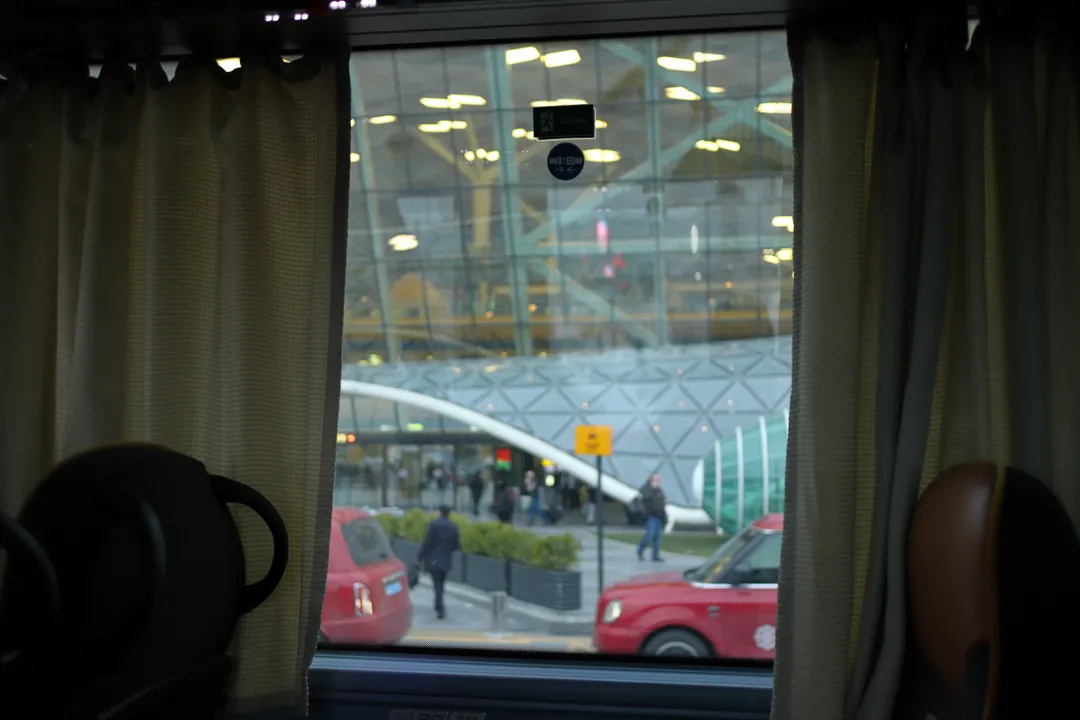
We approached the city center near the tail end of rush hour, so the total trip time exceeded the scheduled 30 minutes, and it was already dark when we arrived at the railway station. Then, we had to ride one stop on the metro, from 28 May to Sahil.
The Baku Metro was opened in 1967 as the fifth metro system in the Soviet Union and continues to be expanded, with the purple line opening in stages from 2016 to 2021. At the time of our visit, the fare was merely 0.4 manat. It was increased to 0.5 manat in July 2024, but remains one of the cheapest in the world. Security is tight; all bags must undergo X-ray inspection like in China, and photography is expressly prohibited inside stations.
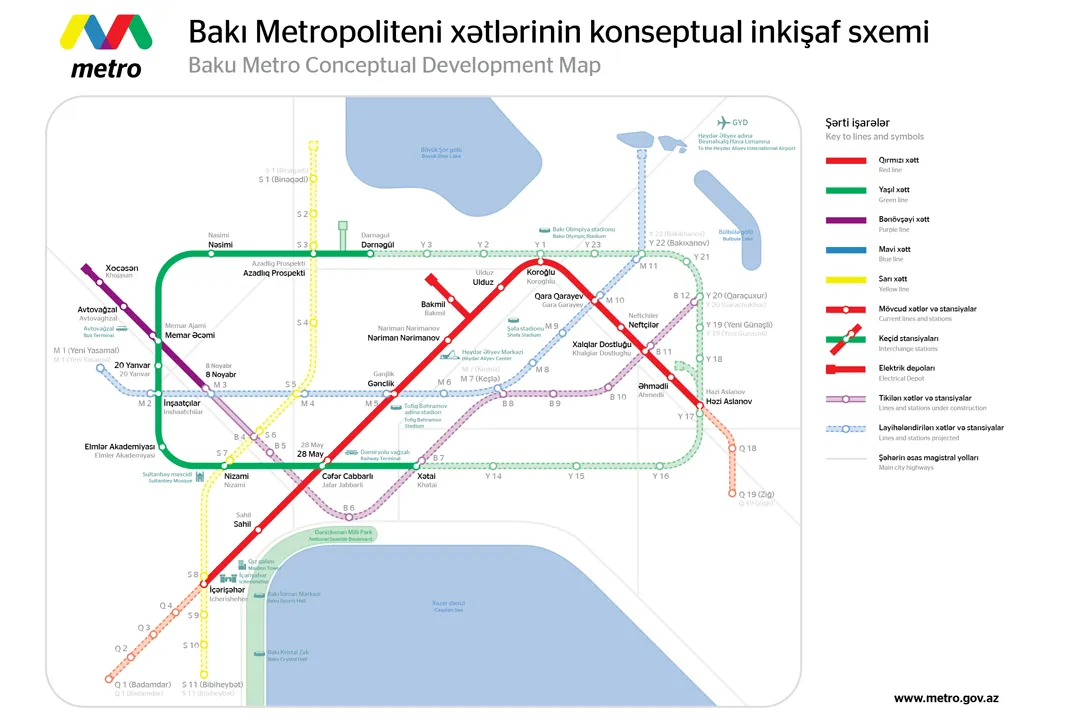
Inside the 28 May/Jafar Jabbarly station, we were delayed unnecessarily because it was not obvious to us that the red and green lines share the same platform, but once we realized this, it was an easy ride to the next station.
From there, it was only a short walk across the street to our hotel, the InterContinental Baku. As this hotel has only been open since 2021, hardly any detailed reviews of it can be found online. We decided to take a chance based on its excellent location instead of selecting the more established Hyatt Regency Baku, which is far from any metro station. Fortunately, we found the facilities and service to be impeccable, and have nothing negative to say about our four nights there.
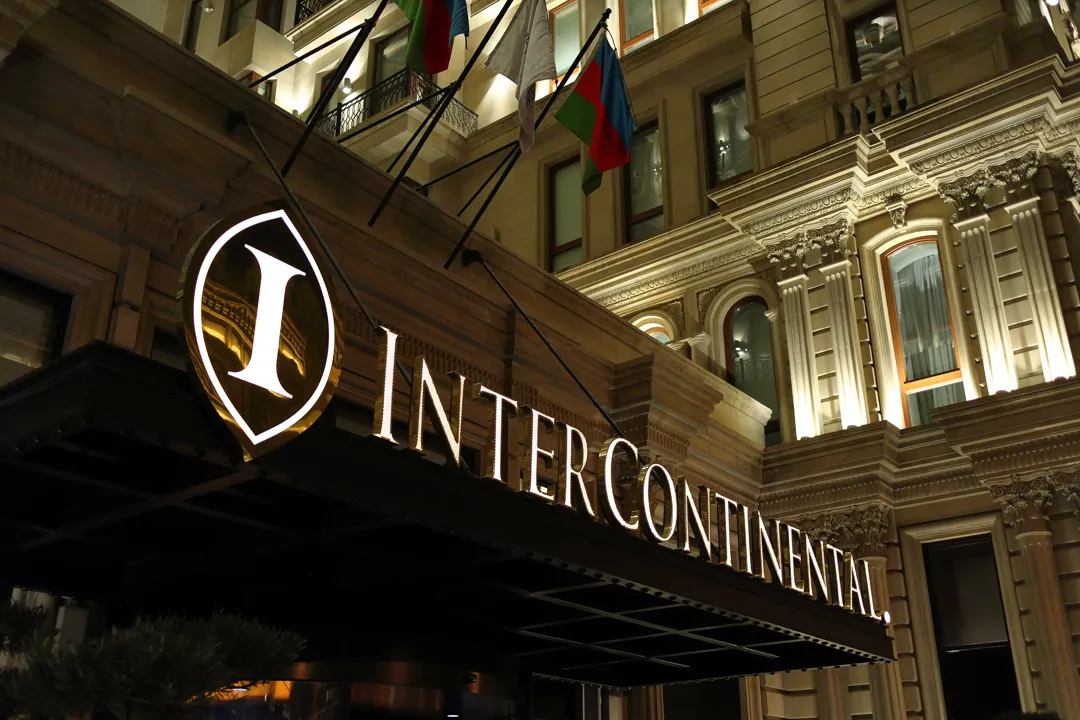
There are many cheap local restaurants around the metro station, so we went to the closest one for a light dinner before going to bed early.
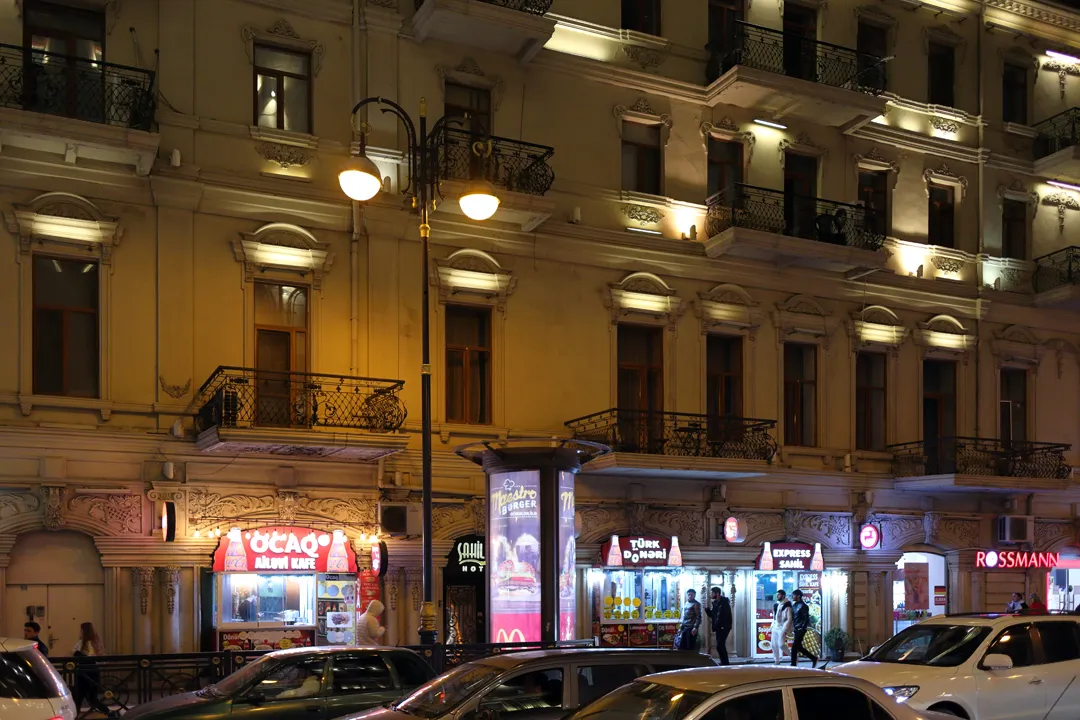
The next morning was again grey and blustery, punctuated by light rain that came and went sporadically. We went out in search of breakfast and found a bakery not far past the metro entrance.
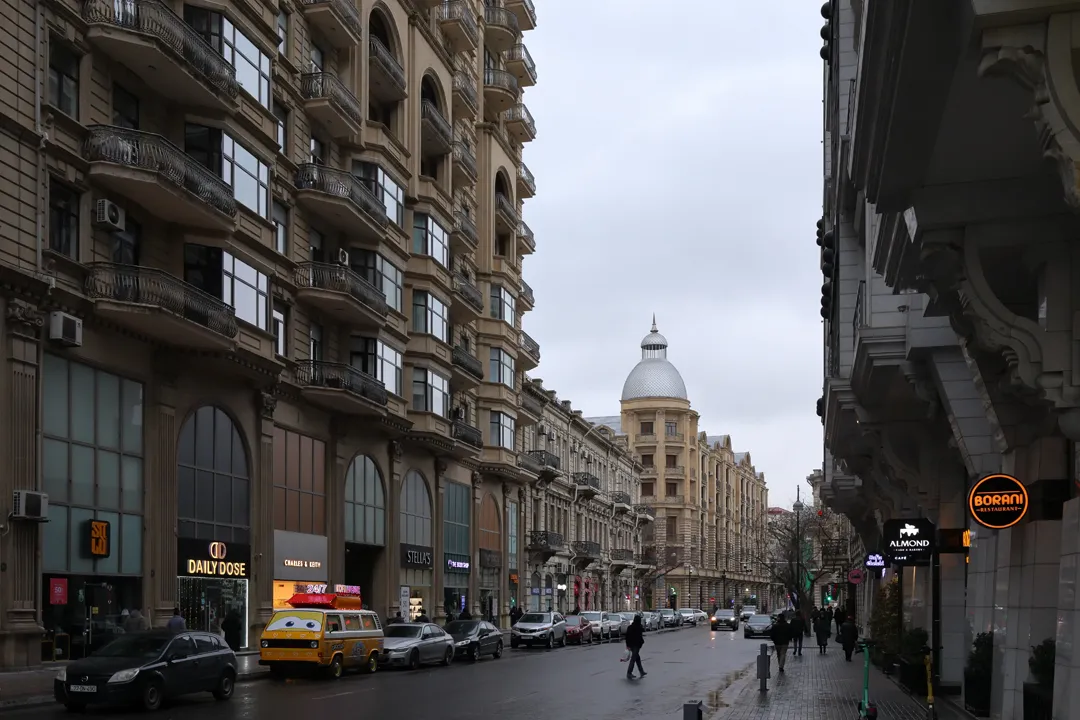
It was not an easy task to choose from the wide variety of exotic and unfamiliar breads. We eventually decided on this rectangular flaky pastry, offered with either a cheese or chicken filling.
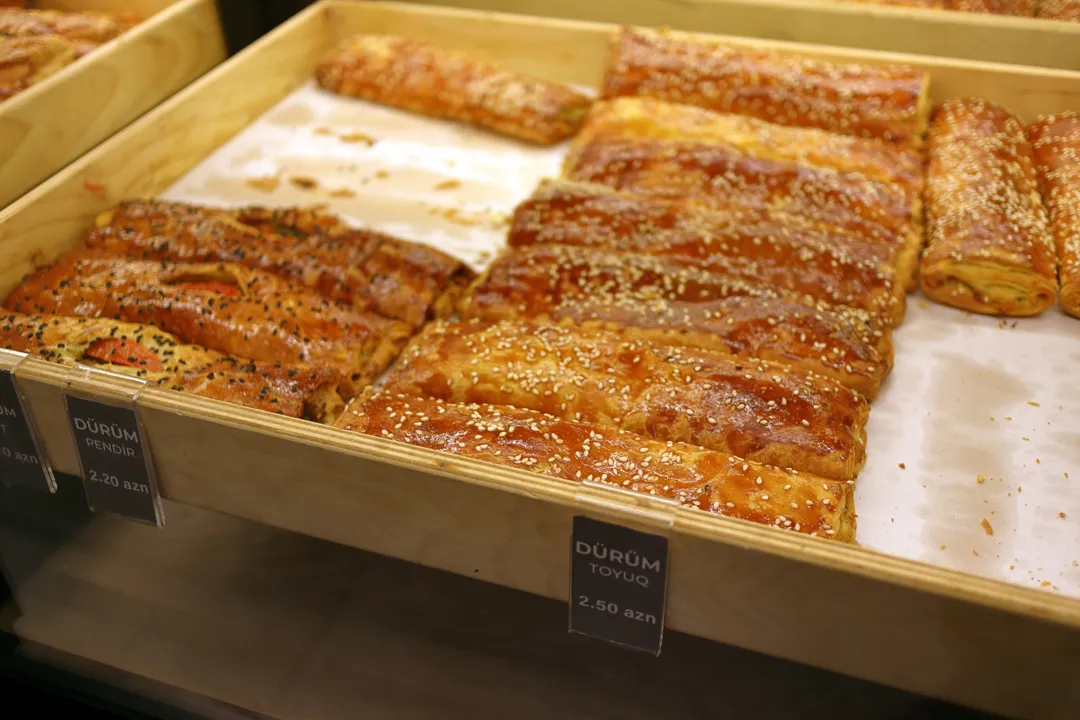
With that settled, we then took a guided tour mainly to see the mud volcanoes in Gobustan, 50 km southwest of the city center. The following post covers this in greater detail: Of Petroglyphs, Mud Volcanoes, and Eternal Flames.
The Old City, medieval core of Baku
At the end of the tour around sunset, we naturally proceeded to look for dinner, and instead of eating near the hotel again, we headed for the Old City (İçərişəhər, meaning “inner city” in Azerbaijani). As its name implies, it is the oldest part of Baku, built as early as the 12th century. To defend against the many threats of the time, it is enclosed by a wall in the same way as other well-preserved medieval cities in Europe.
Beside the westernmost gate is the eponymous Icherisheher metro station, a glass and steel pyramid juxtaposed with the ancient walls — a sort of Azerbaijani interpretation of the Louvre. We exited here, hoping to quickly eat and go back before it became too dark.
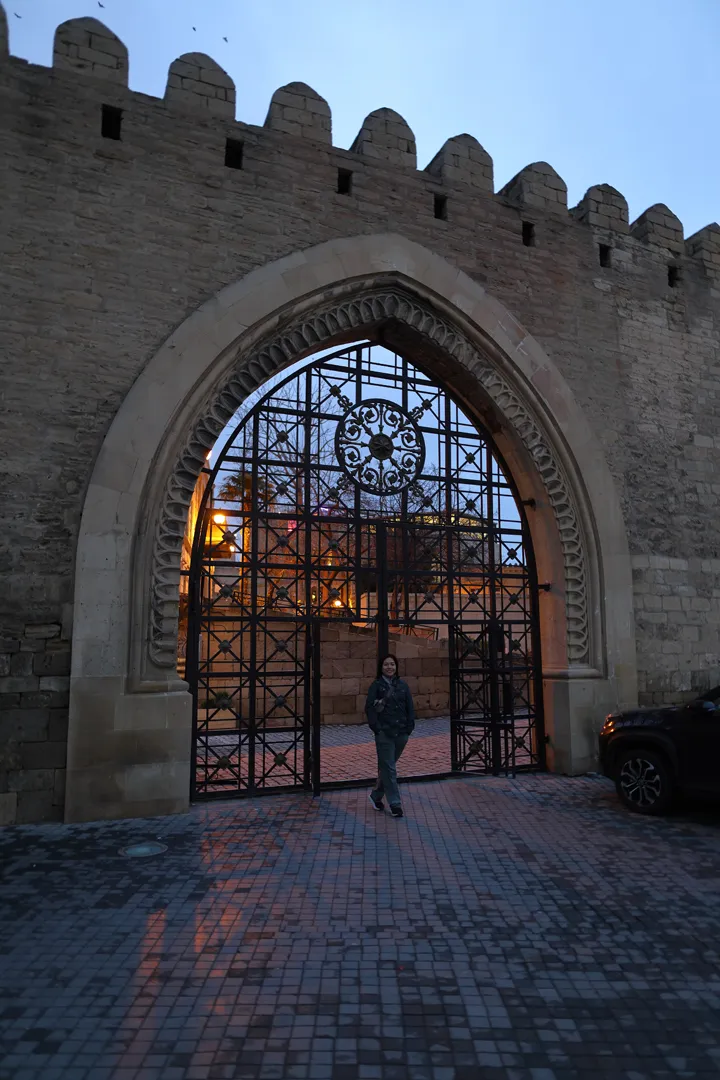
However, inside the gate, there was already not much activity at this time, and many of the businesses had closed for the day.
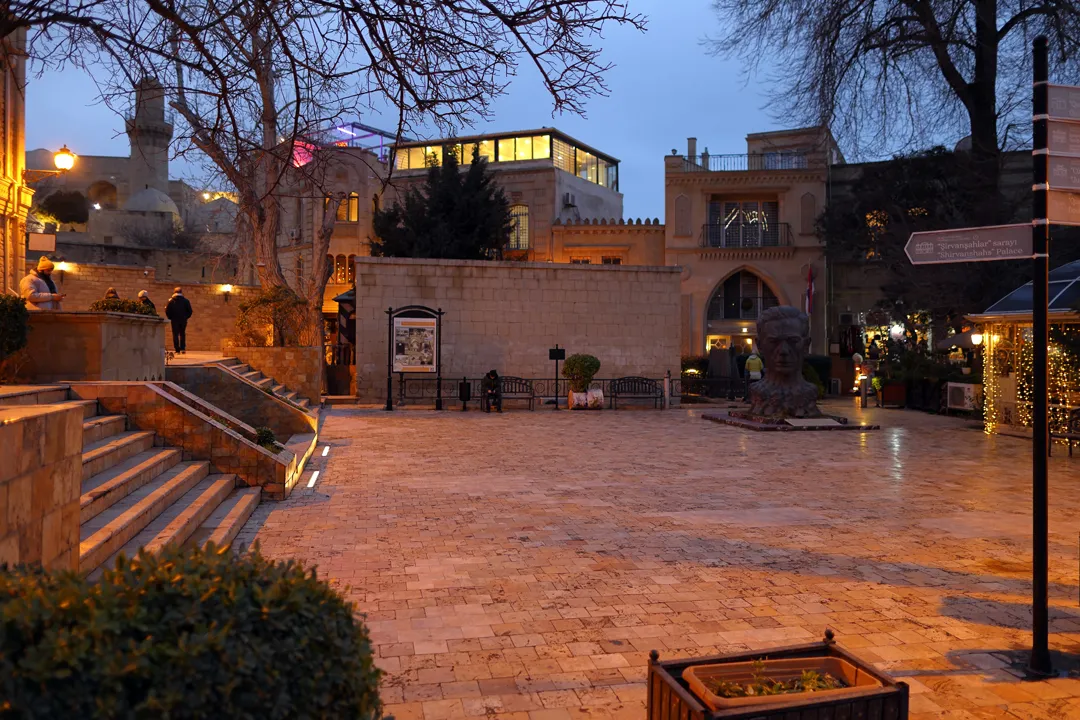
We followed the city wall in a counterclockwise direction until we were able to find a restaurant that was still open.
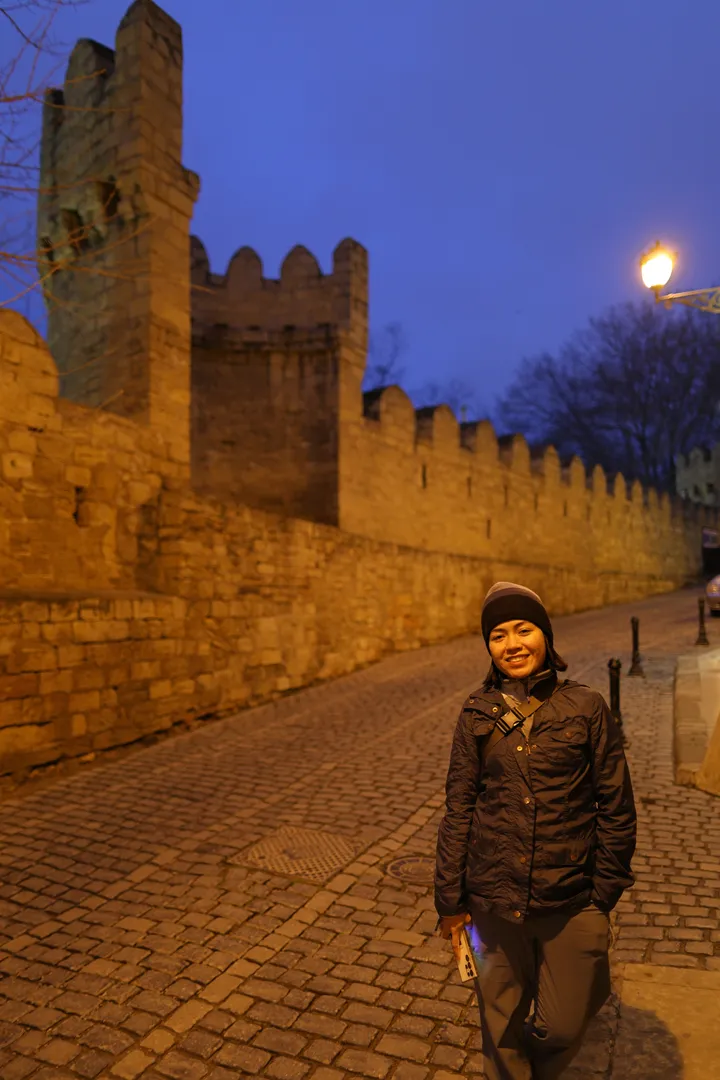
The restaurant seemed to be run by a Russian family, and the televisions on the walls played old black-and-white Soviet films. Nonetheless, there was no shortage of satisfying Azerbaijani dishes.
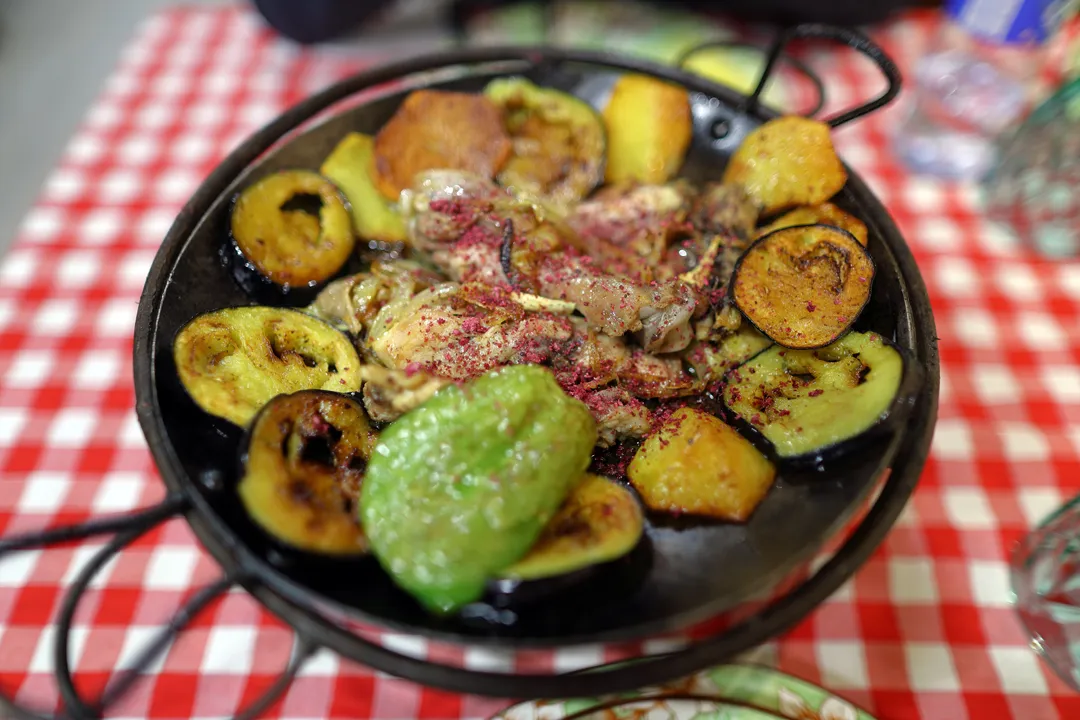
With nowhere else to go after finishing dinner, we retired to the hotel for the night, but we returned to the Old City early the following day. Despite the still overcast sky and still empty streets, the daytime atmosphere felt markedly more welcoming than than that of dusk.
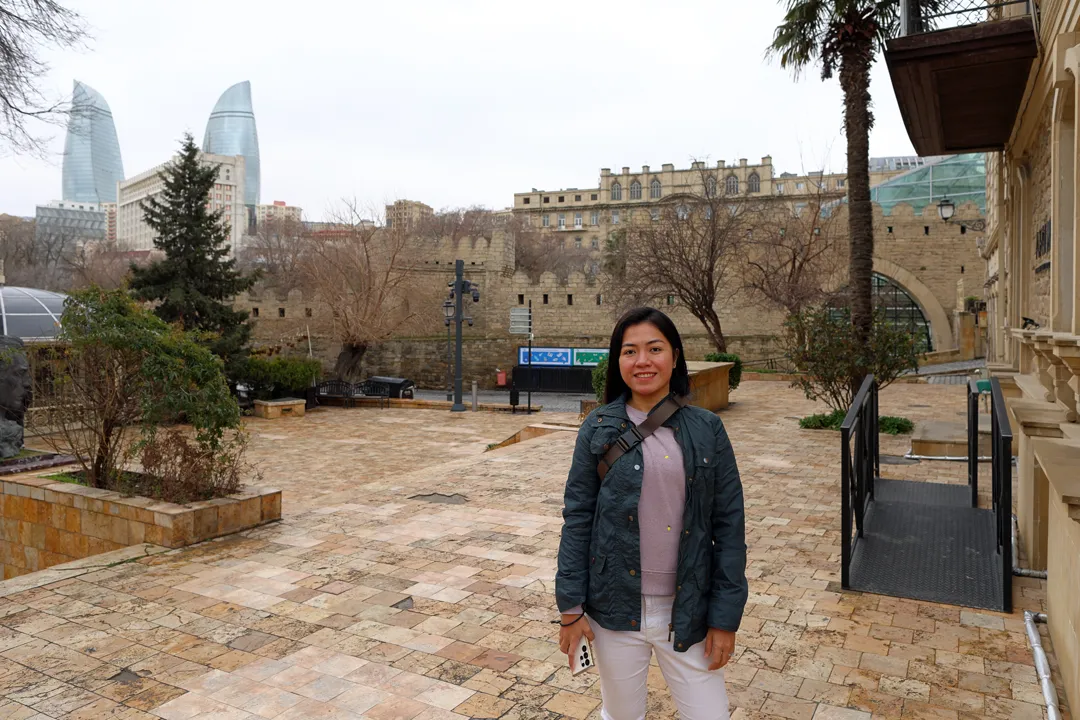
Now, we could properly admire Baku’s architecture under natural light for the first time. In the Old City, and even throughout the central part of modern Baku, most building exteriors are a similar unpainted sandy color, yet each one is distinguished by different ornamental details and surface textures. The resulting cityscape is something like a patchwork quilt: cohesive without being uniform or featureless.
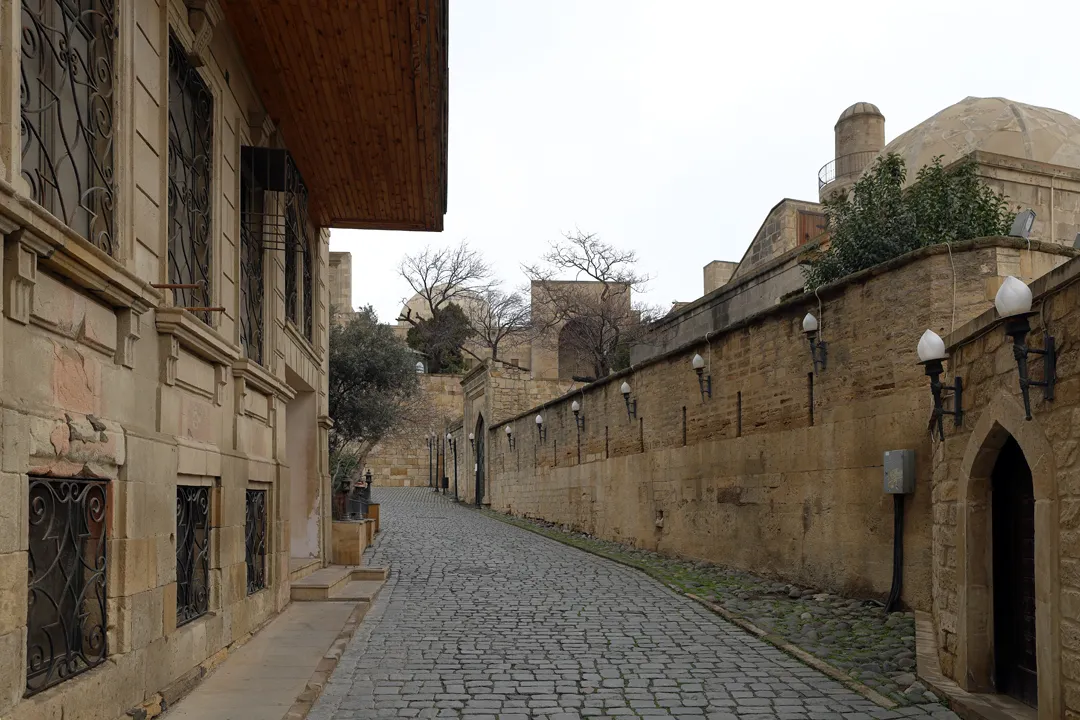
We proceeded clockwise this time, and in a reversal of fortunes, found a place to eat breakfast in much less time than it had taken to find dinner.
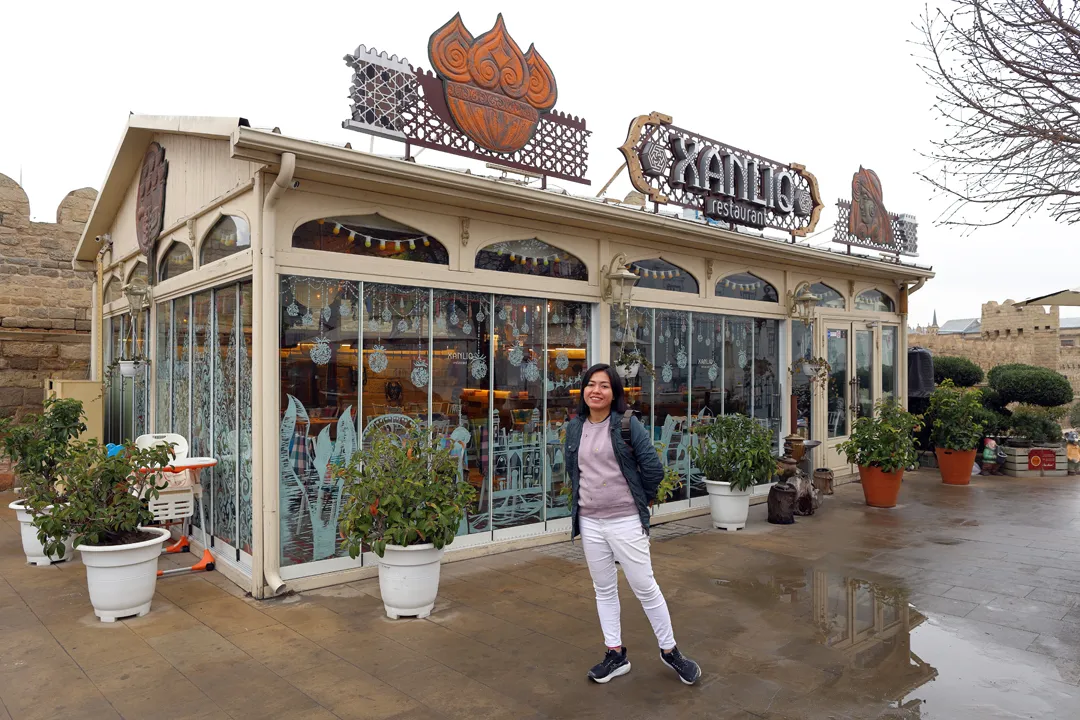
It was early enough that we more or less had the place to ourselves.
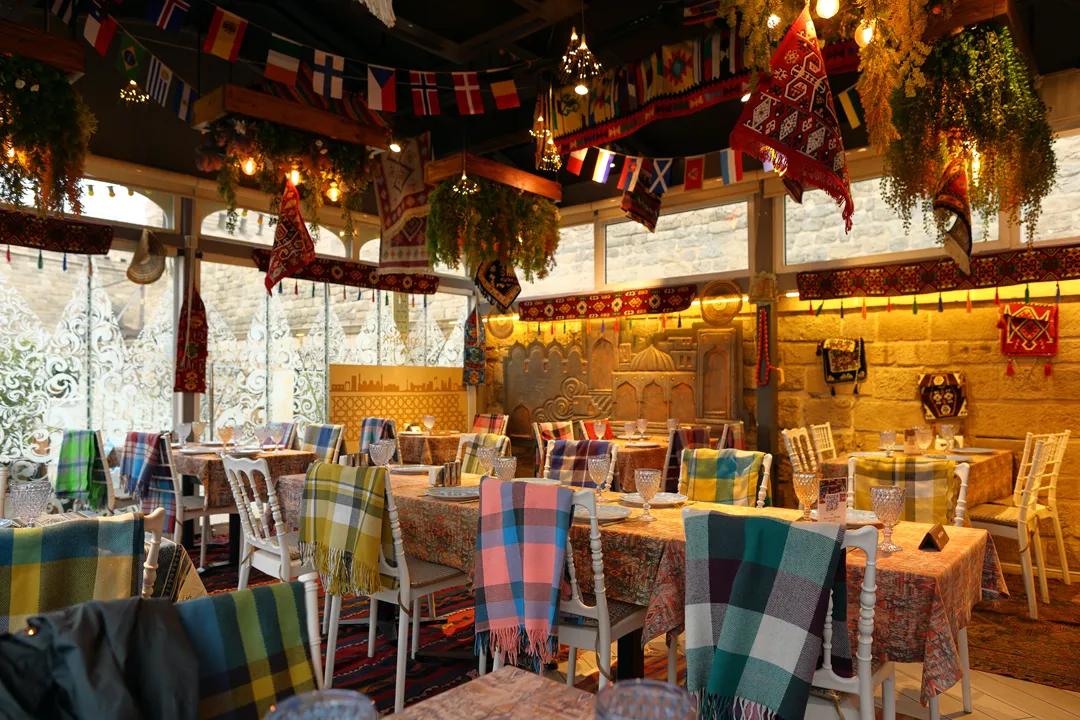
We ordered the breakfast set for two without having any idea of its composition, and it turned out to be one very large bread with a wide variety of jams and cheeses. For the reasonable price of 26 manat, this was a good opportunity to try the different types of cheese eaten in Azerbaijan that we wouldn’t have known about otherwise.
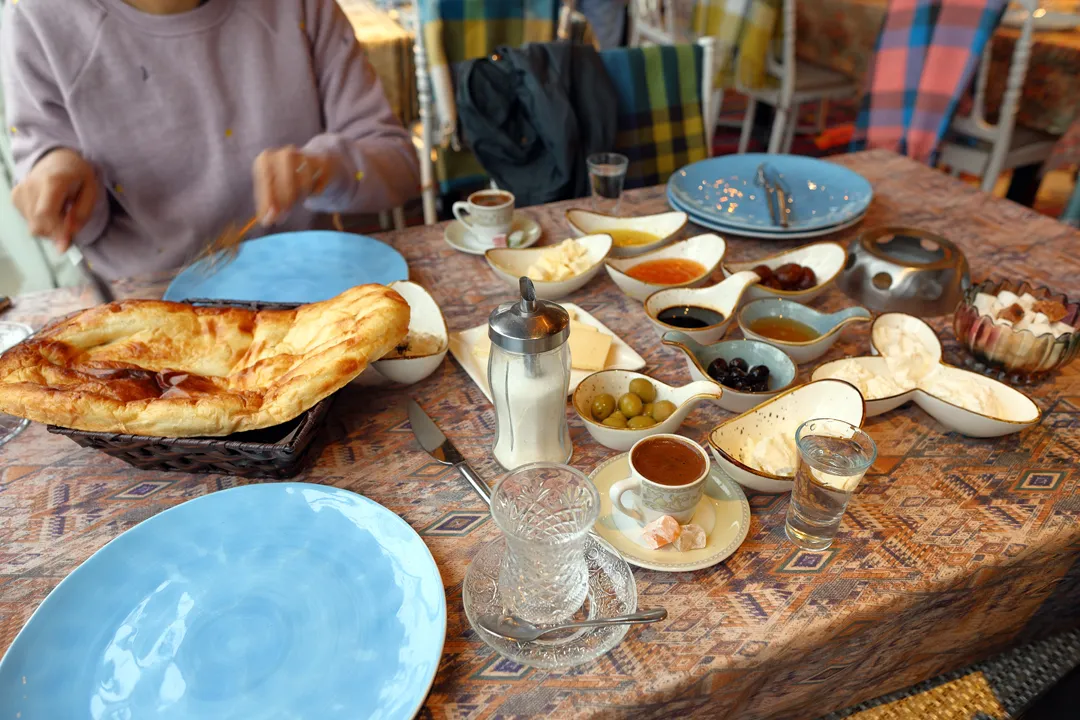
After breakfast, we could concentrate on sightseeing. The most important place in any fortified city is the home of its ruler; in the case of Baku, that is the Palace of the Shirvanshahs. It is rather compact for a royal palace — indeed, the entire Old City is only about half the size of the Gyeongbokgung in Seoul — but its intriguing architecture makes it worth visiting.
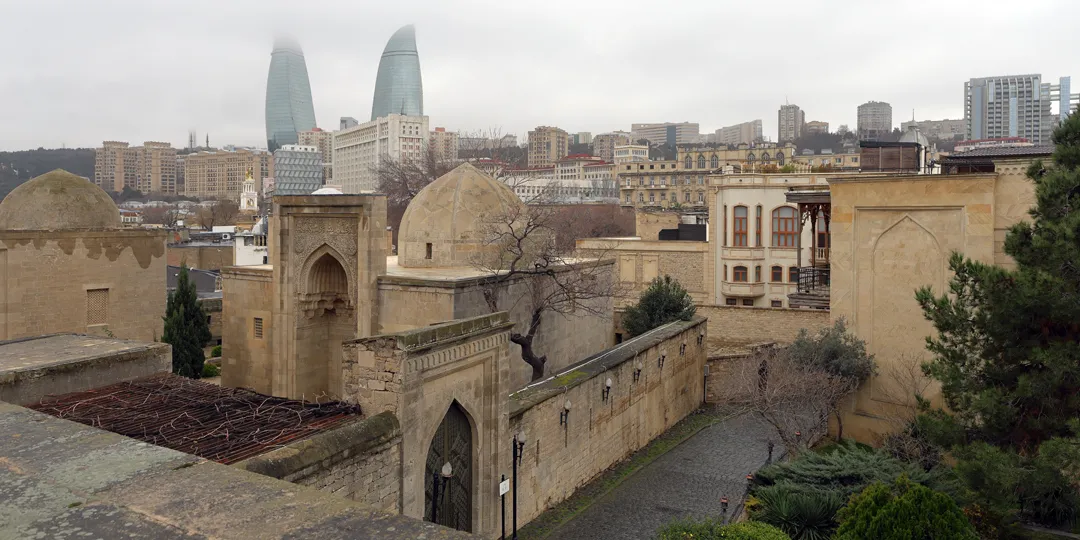
Here, the emphasis on textures over colors is on full display, with the palace buildings characterized by their more intricate ornamentation compared to any ordinary building.
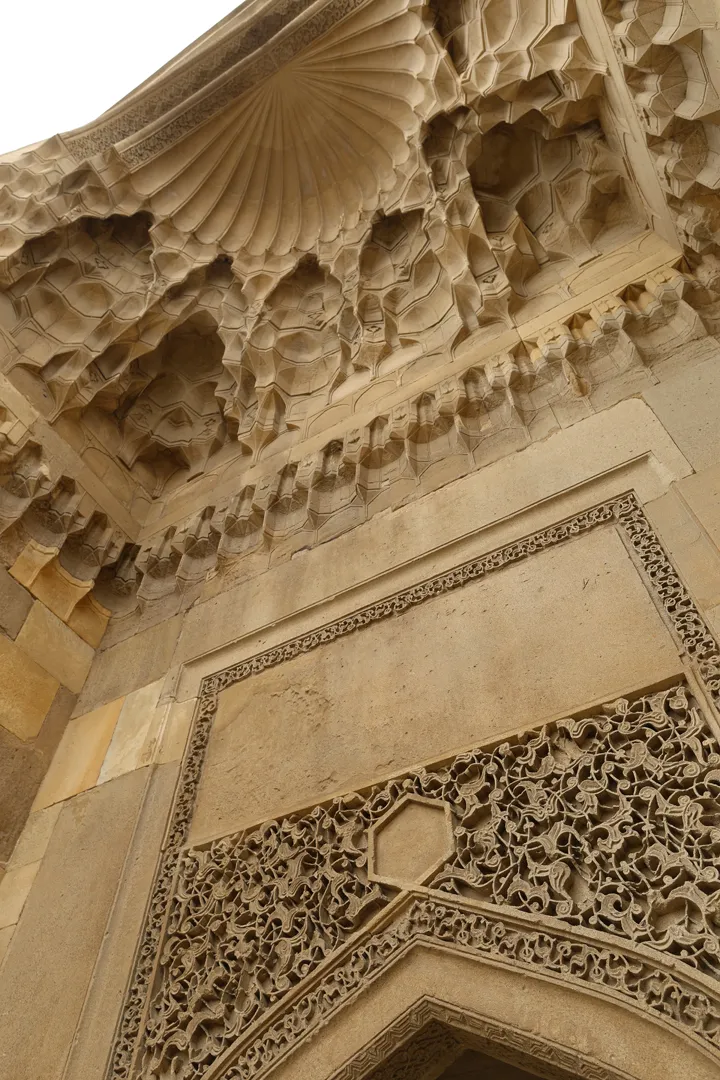
We spent an hour or so exploring the palace. With few other visitors around, it was easy to feel unhurried and go around at our own pace.
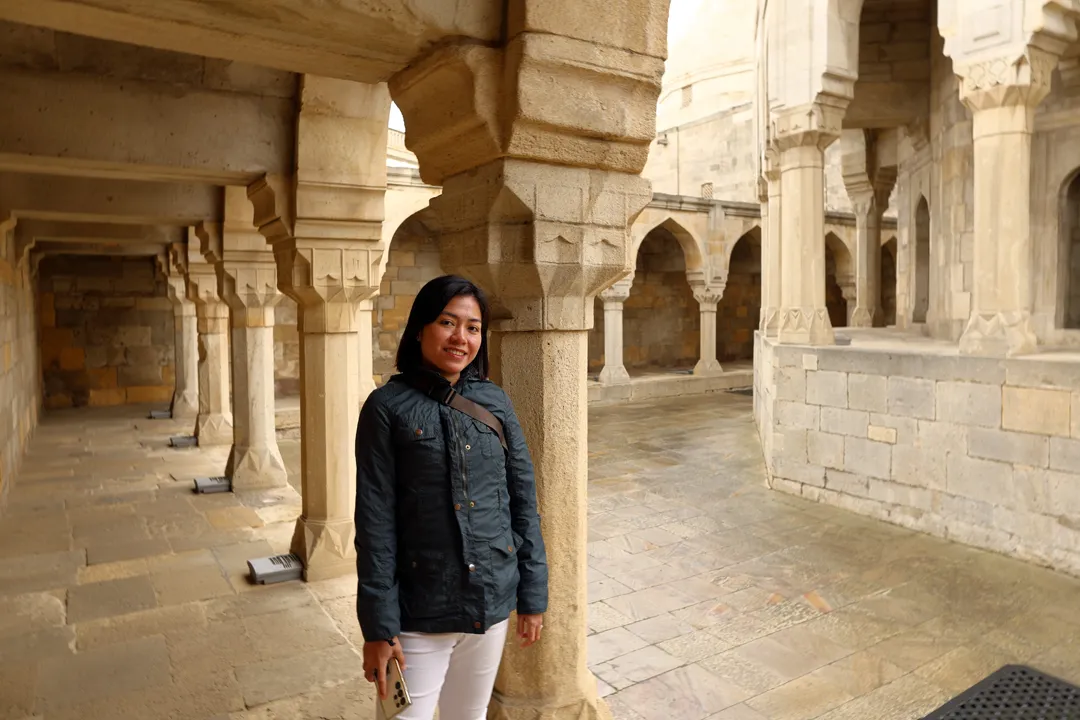
Surprisingly, cats roam in the palace freely and none of the employees that we saw appeared to mind. Being small enough to fit between the bars of metal gates, they are even able to enter areas that are off-limits to humans.
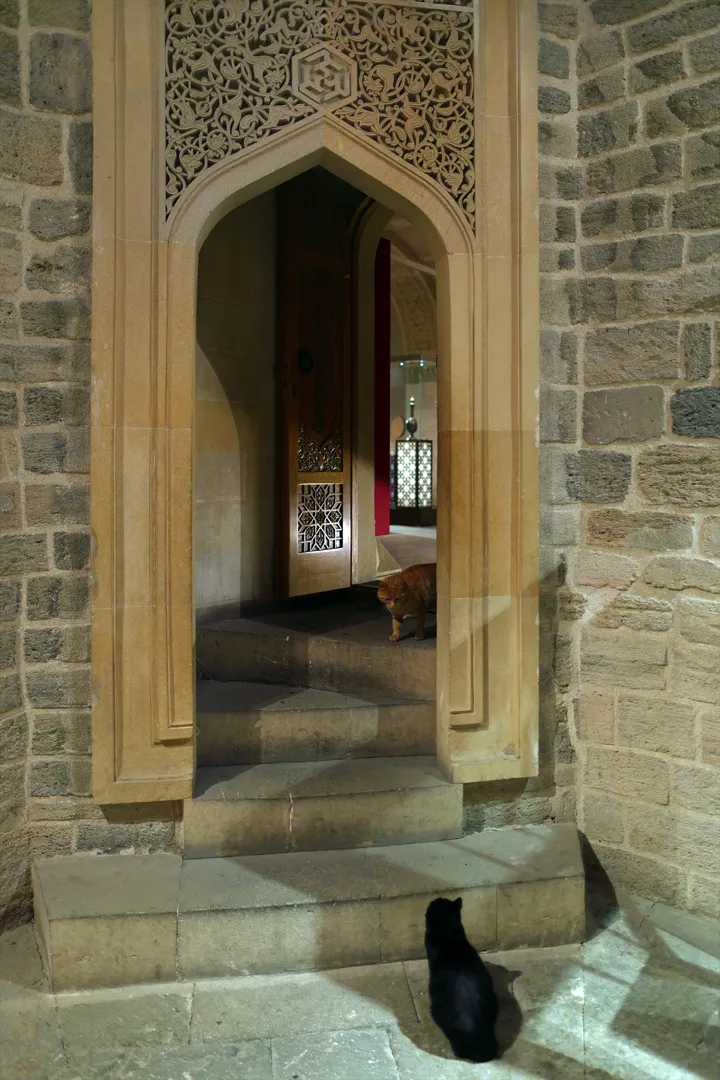
Aside from the largest building where the shah lived, the palace complex contains several other structures in its lower level. The best maintained among those is the mosque.
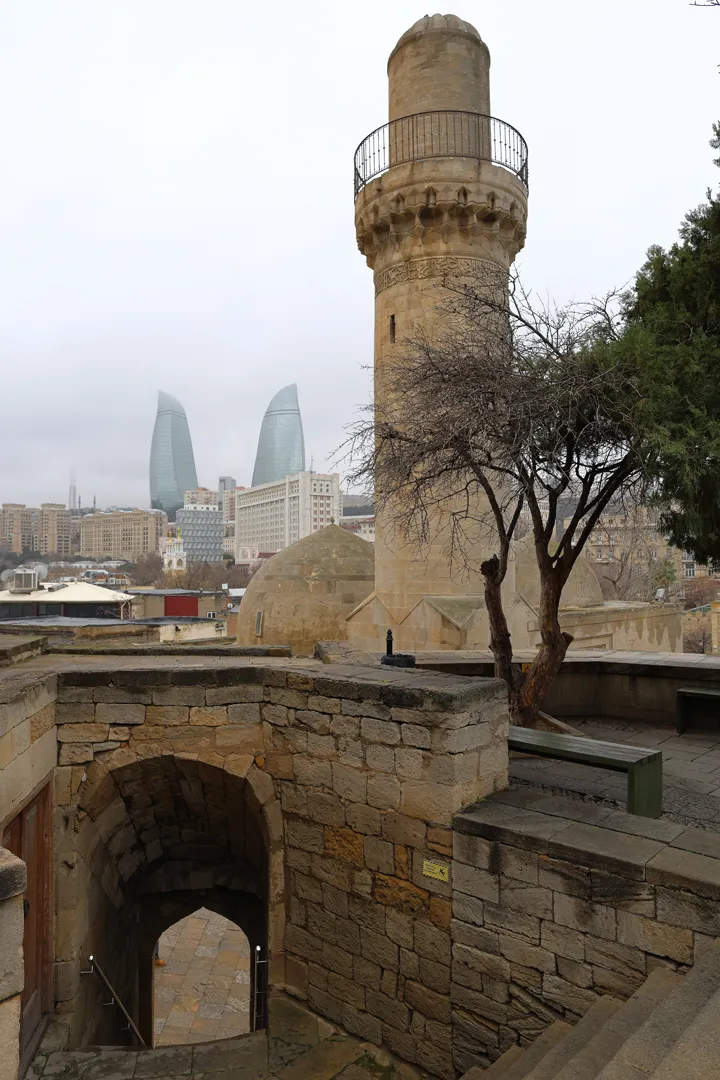
In the eastern courtyard is a mausoleum in a partially preserved state. Its shape is typical for an Azerbaijani mausoleum: a geometric (octagonal in this case) cross-section topped by a pointed roof. However, it is small and undecorated, and cannot compare to the impressive ones that we later saw in the Nakhchivan Autonomous Republic. For those brave enough, the underground chamber containing the tomb can be entered through the narrow portal in the floor behind the red sign.
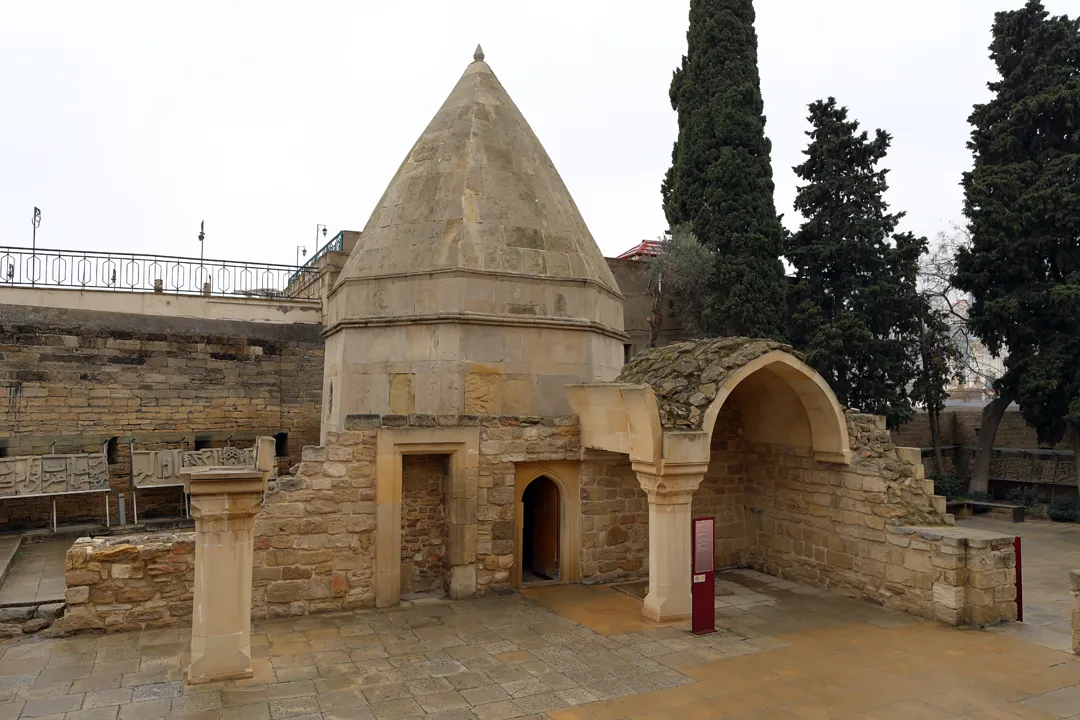
Lastly, in the lowest and southernmost part of the palace is the site of the bathhouse, of which only the foundation remains today.
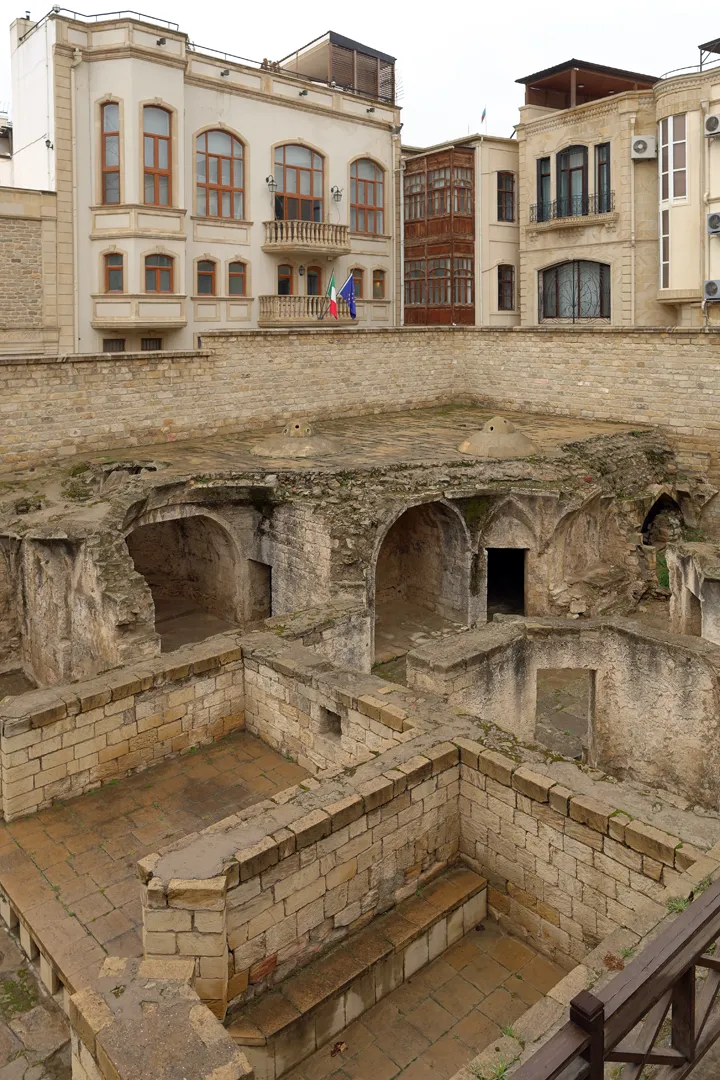
Leaving the palace, we started going further into the narrow streets of the Old City.

A while later, we reached the northern gate, which opens out into a park.
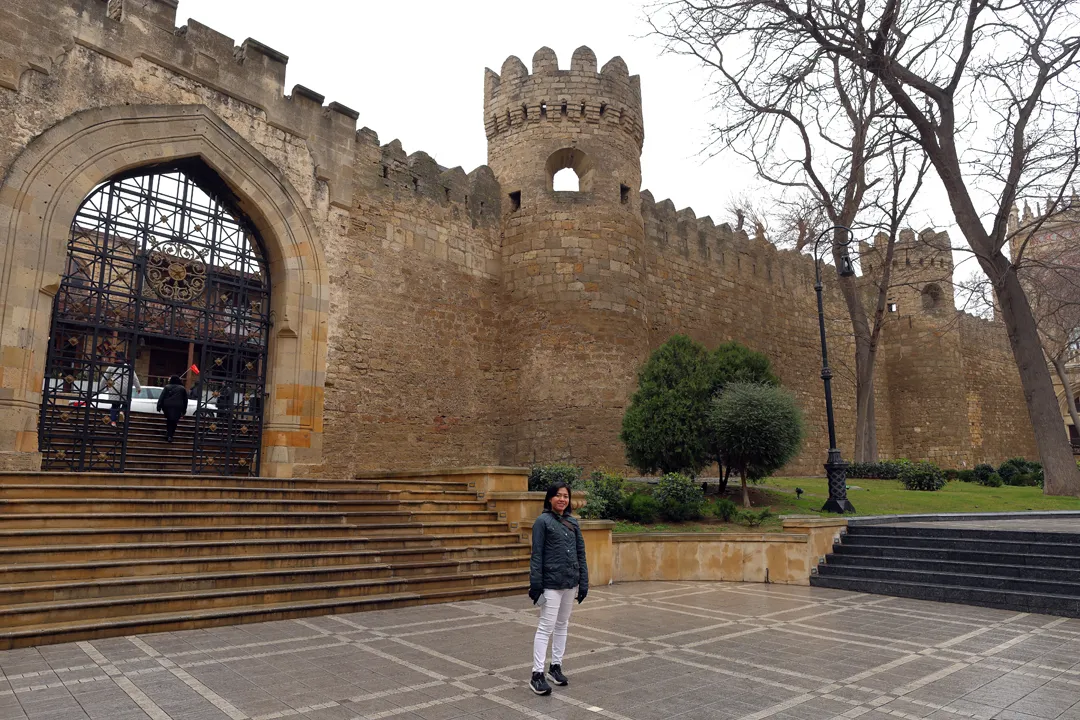
We had only seen a fraction of the Old City, though, so we went back in and kept going clockwise toward its best known landmark, the Maiden Tower. Along the way, we saw numerous shops selling carpets, adding bright colors to the otherwise muted palette of the buildings.
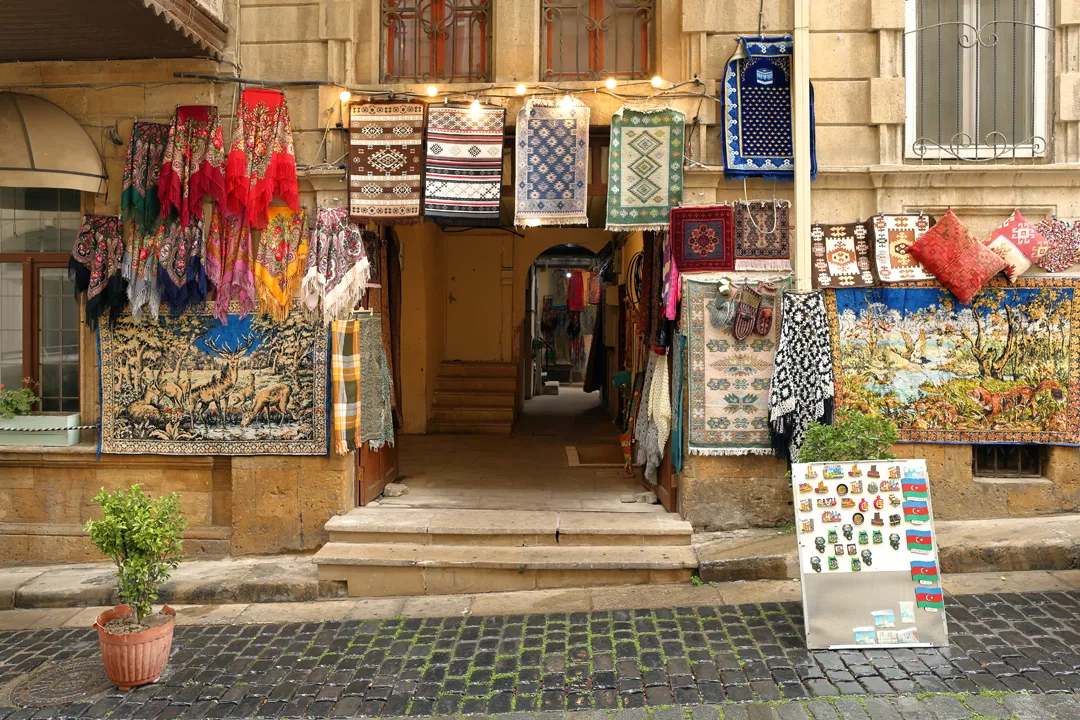
Interestingly, the different sellers seemingly all offer unique carpet designs, which is unusual because souvenir shops in most places tend to have the same mass-produced inventory as their competitors.
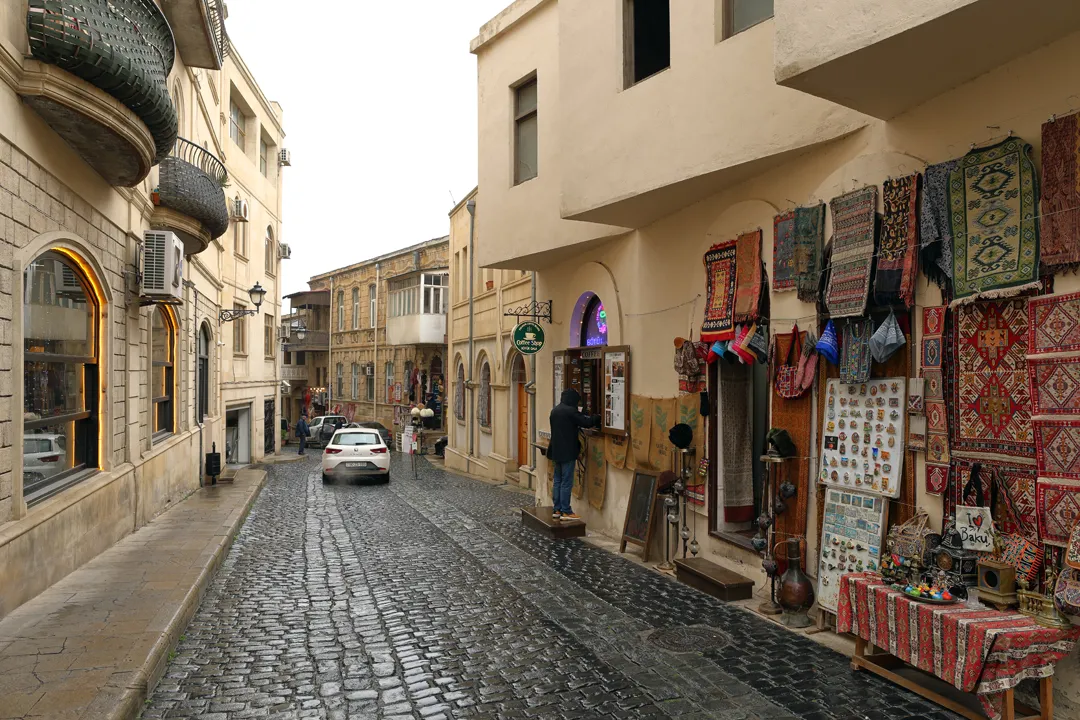
Of course, a carpet is far too big to be a practical souvenir, so we just passed by without actually buying anything.
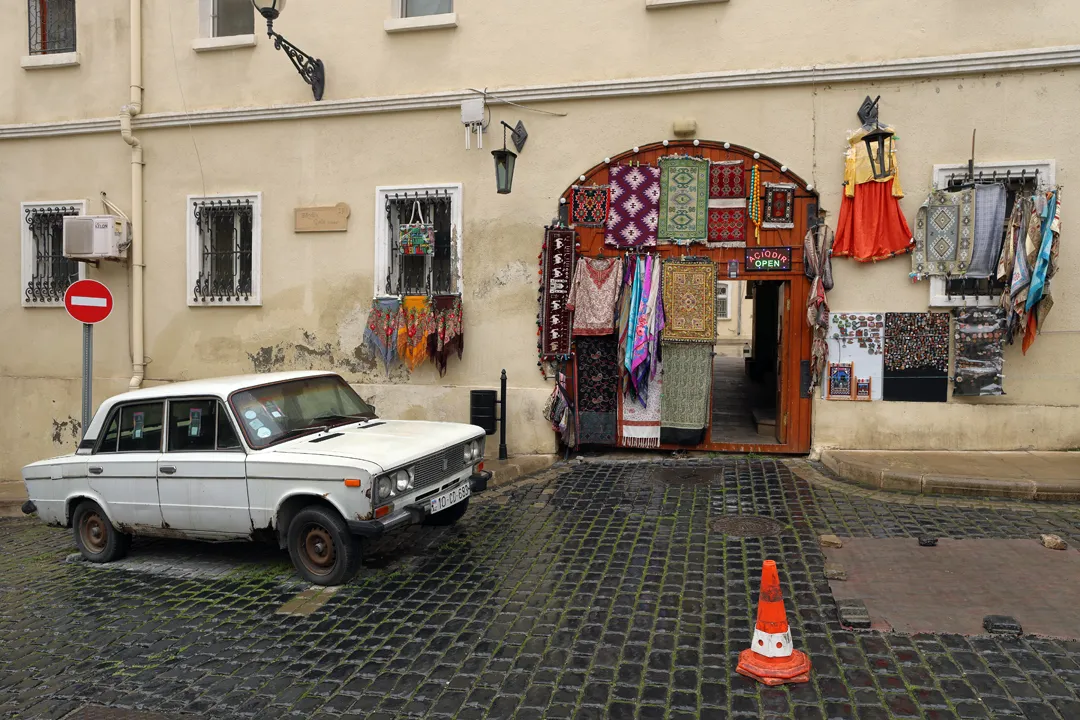
It did not take too long for us to reach the Maiden Tower. Even though this structure is one of the most recognizable symbols of Baku, its original purpose remains an enigma. Expert opinions have been divided on whether it served as a military fortification or religious building, or some combination of both.
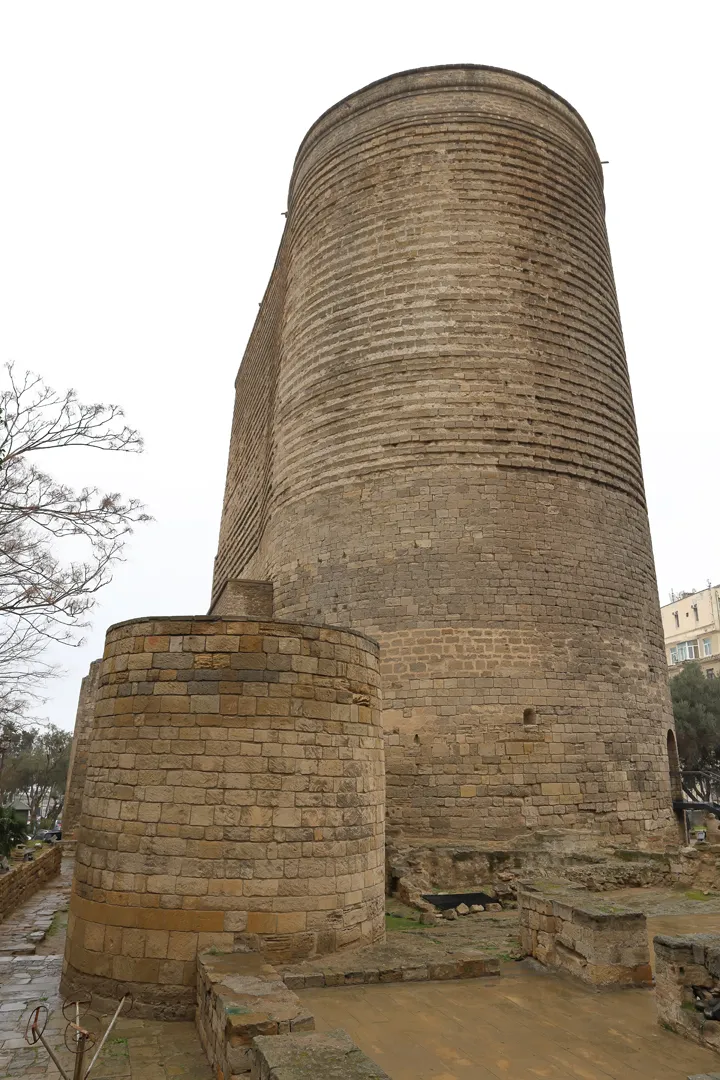
The tower’s cross-section is shaped like the lowercase letter “b”, but only the round part is hollow, so the interior consists of circular rooms which now house exhibits. We climbed the stairs all the way up to the open roof. Since it is the tallest building in the Old City, the view from the top spans 360 degrees. Unfortunately, it was starting to rain by the time we arrived and the visibility was becoming increasingly poor.
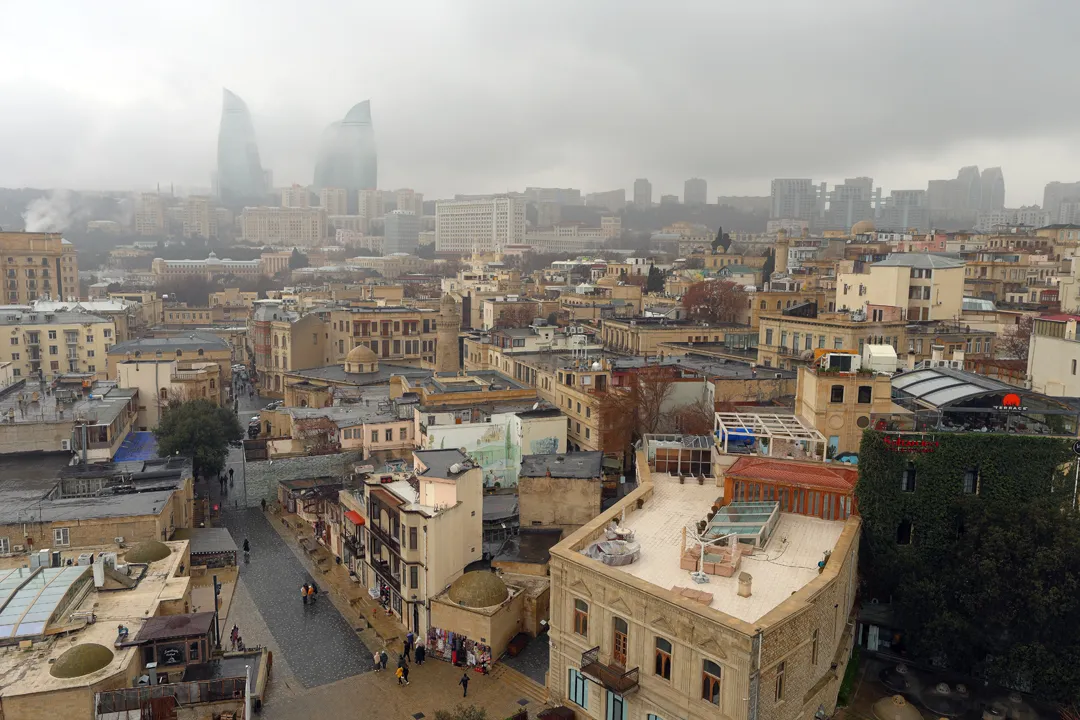
National Carpet Museum and Palace of Happiness
Because we could not stay outside in the rain for too long, we needed to find something to do indoors. Coincidentally, our itinerary already included the National Carpet Museum, located only two blocks south of the Old City in a building shaped like a rolled carpet. This iconic design alone is worthy of a visit.
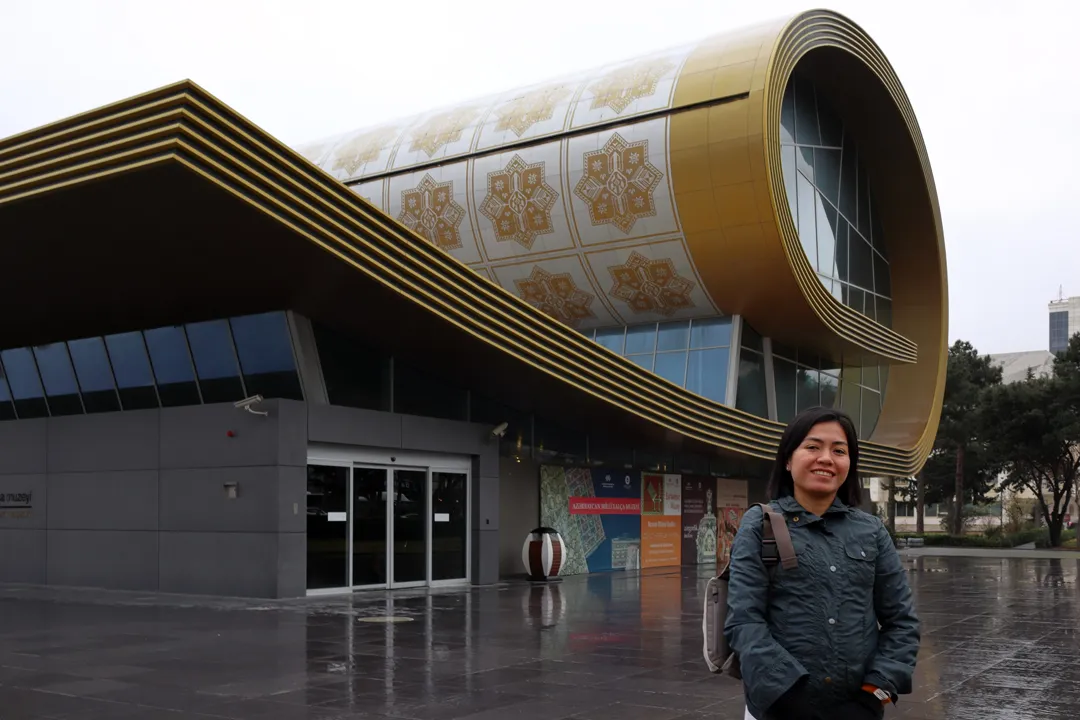
The museum’s first floor showcases modern artworks made using carpet as a medium. We were particularly impressed by the level of creativity here.
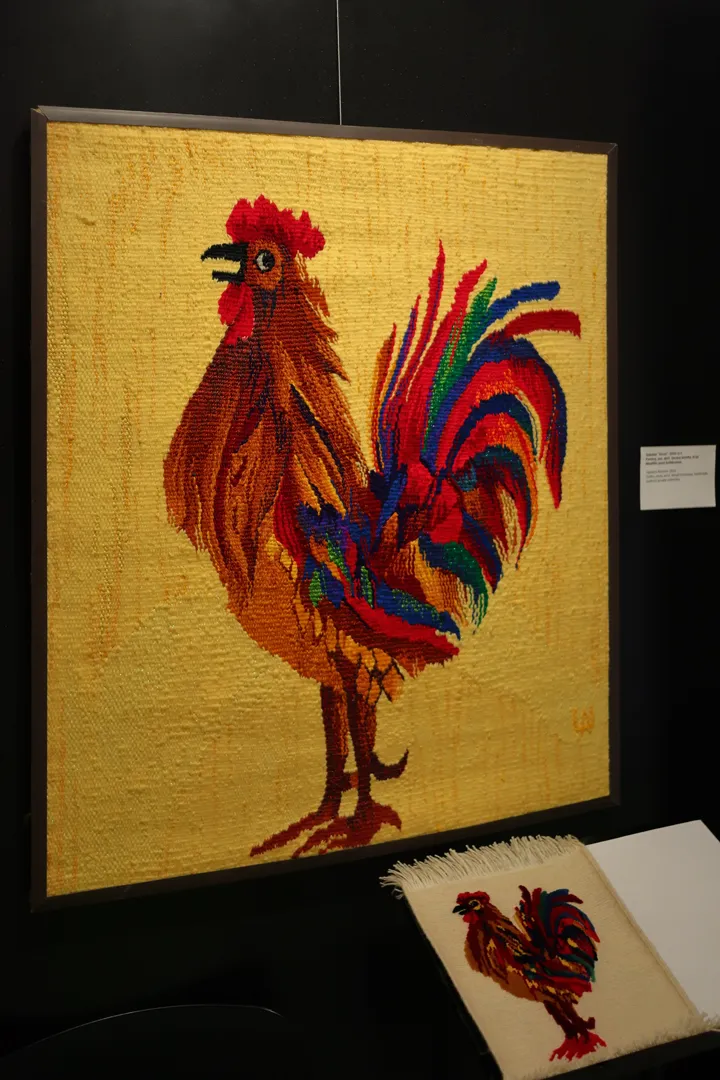
From a distance, these artworks could be easily mistaken for paintings, but they are in fact functional carpets.
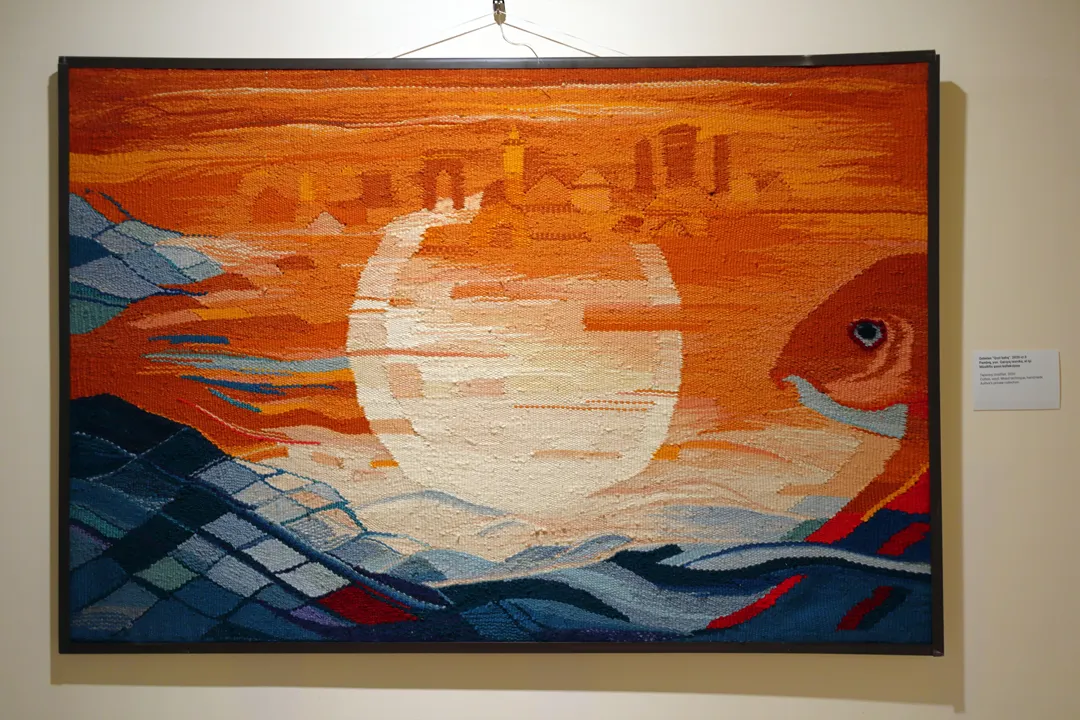
This becomes clear when viewing them up close.
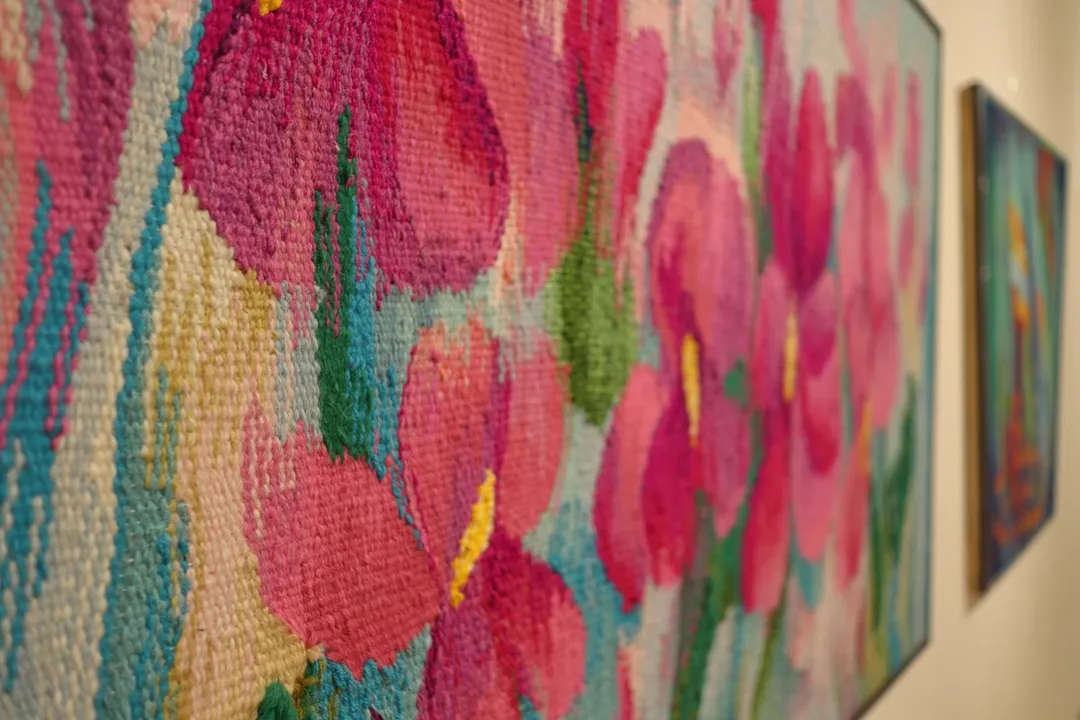
Long considered an integral part of Azerbaijani culture, it is not surprising that carpet making can also be linked to patriotism. This carpet depicting the Nagorno-Karabakh region expresses support for Azerbaijan’s sovereignty, but is also a reminder that tens of thousands were killed in the conflict there over a period of more than 30 years.
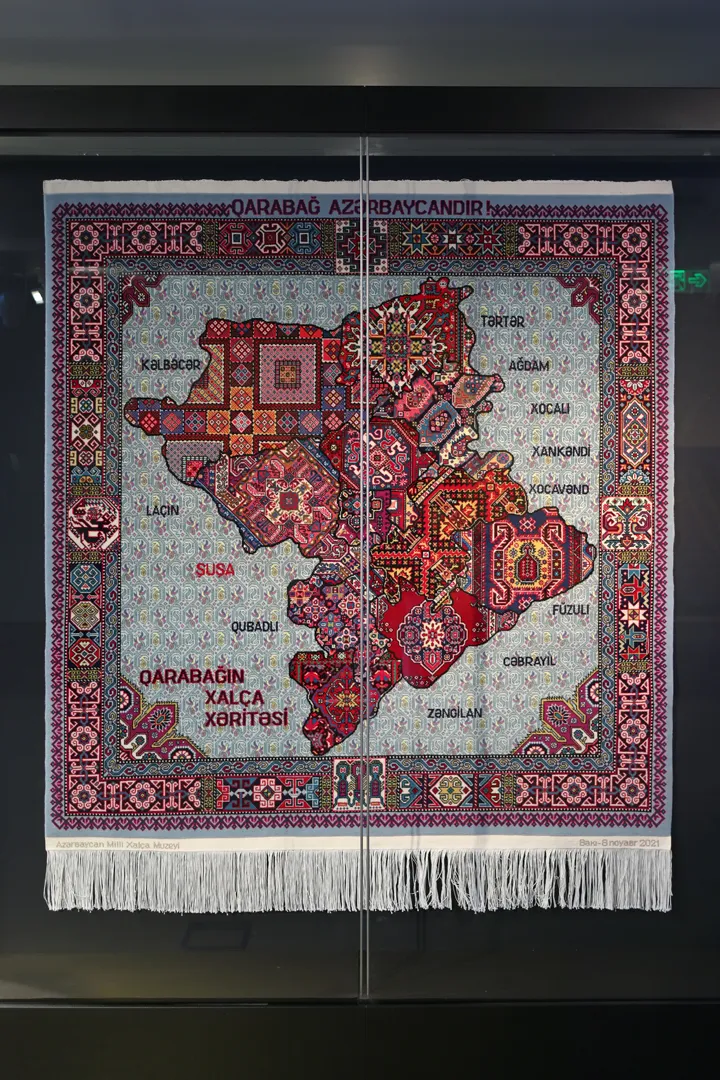
The second floor displays traditional carpets and explains the carpet making process. We are typically drawn to the avant-garde over the traditional; nevertheless, this section is worthwhile to go through.
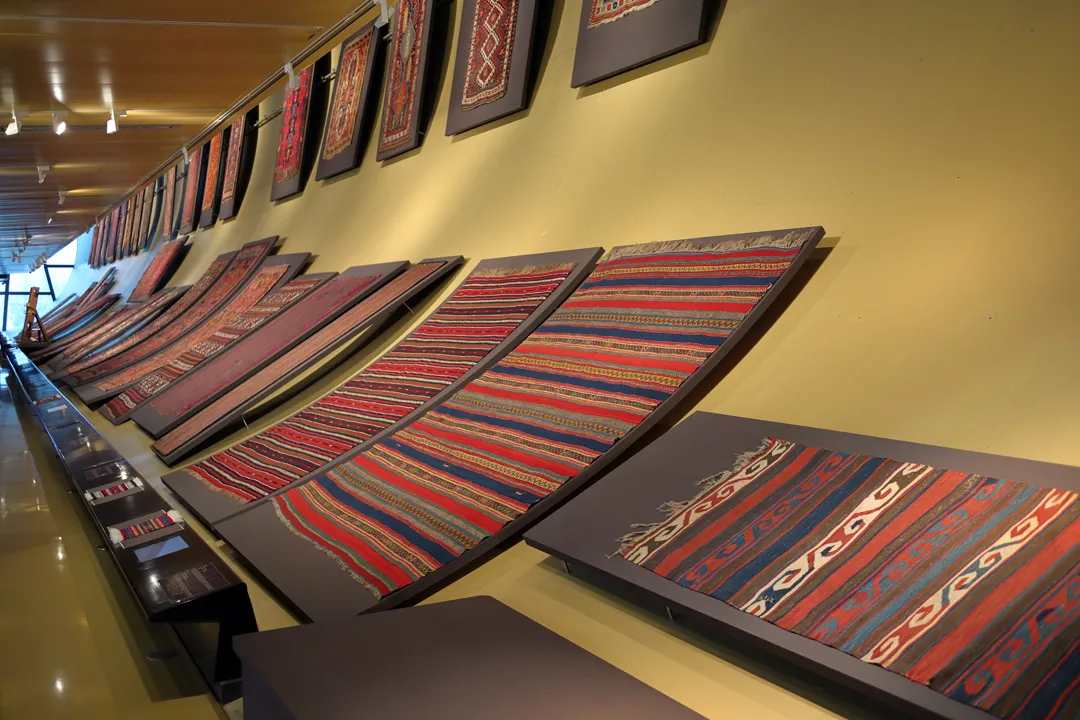
There was a live demonstration of making a carpet using a loom, a process which requires significant attention to detail.
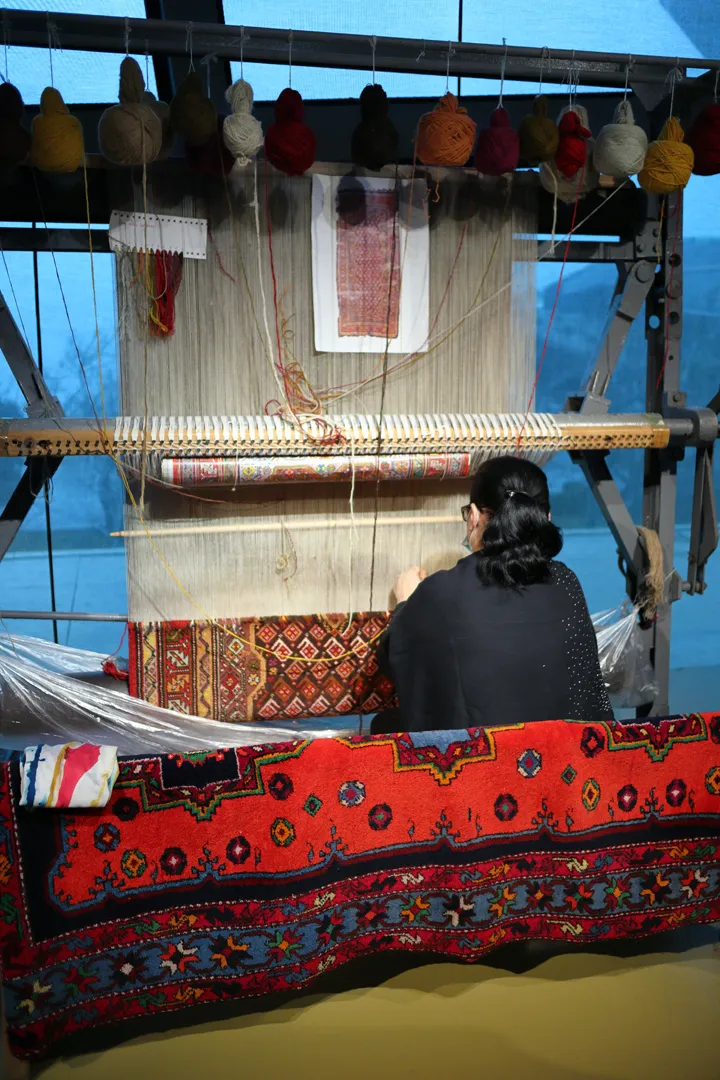
Another part of the exhibit is dedicated to the various patterns and motifs found in Azerbaijani carpets. In terms of aesthetics, I liked the camel the most, but was unaware at the time that this design in fact has a complex history. When we later visited Mongolia, we learned that camels with two humps are Bactrian camels, which are not naturally found in Azerbaijan. However, Mongolians commonly used these camels for transport, so people in what is now Azerbaijan would have encountered them when the armies of the Mongol Empire reached the region.
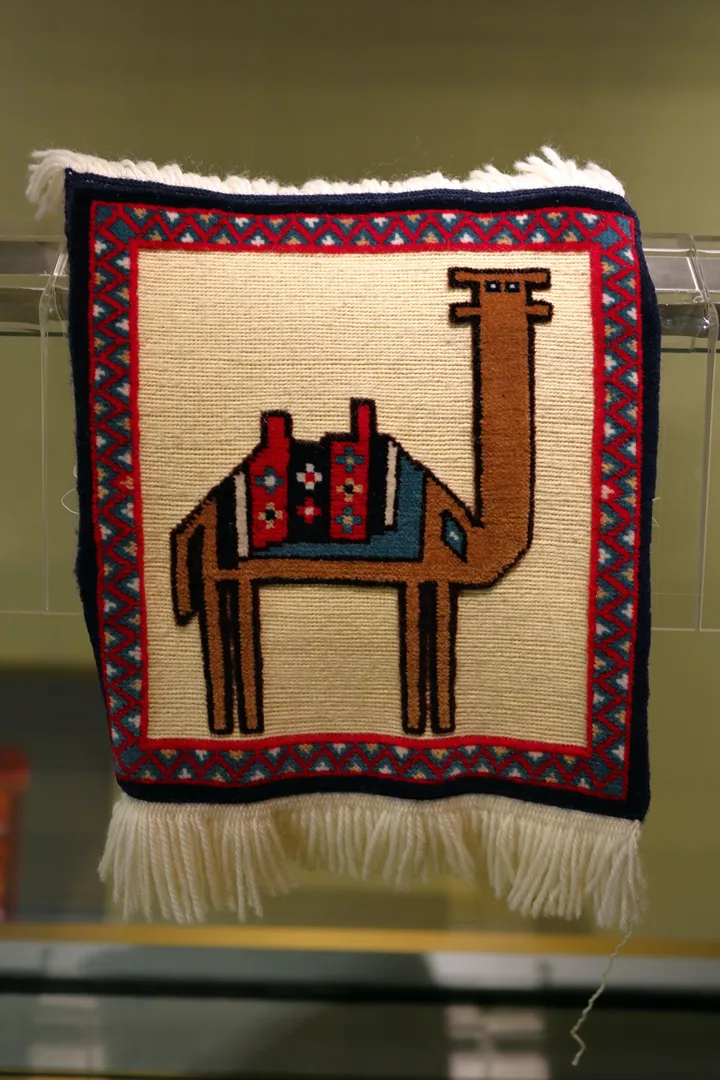
By the time we finished visiting the museum, the rain had mostly subsided. We searched along the outer wall of the Old City for somewhere to eat and chose a Georgian restaurant near the city hall that seemed to be popular with locals.

Nearly everyone else was drinking a Georgian pear soft drink, so we also ordered it. It was not bad at all and less sugary than expected.
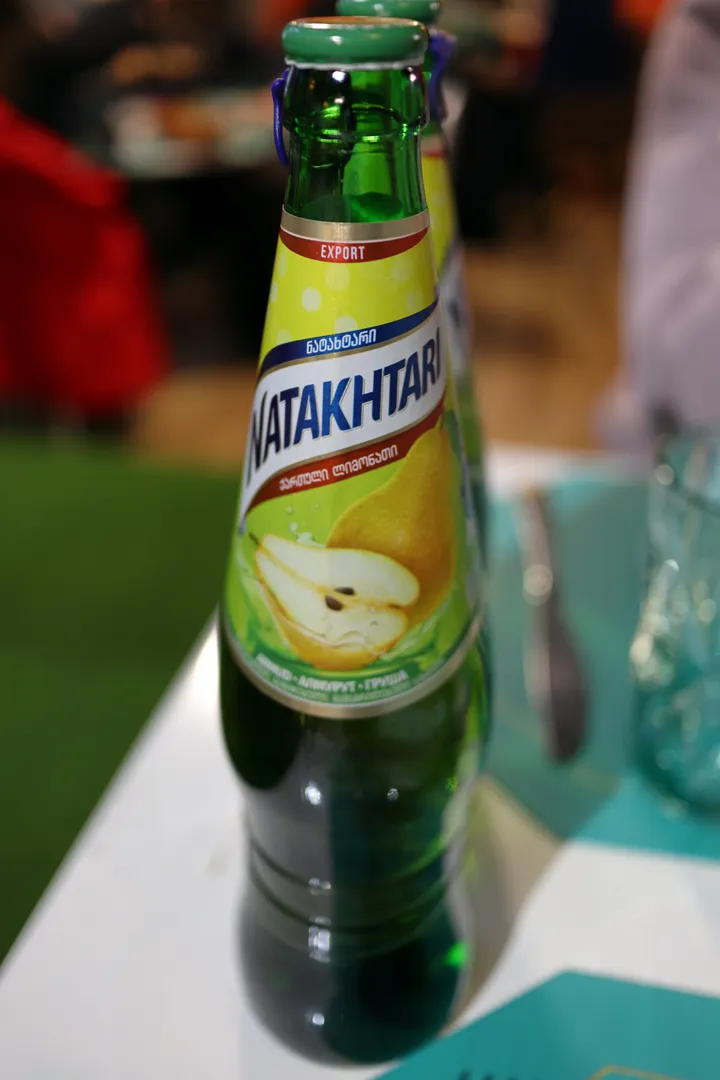
We had one more place left to visit, the Palace of Happiness, just one block away from the restaurant.
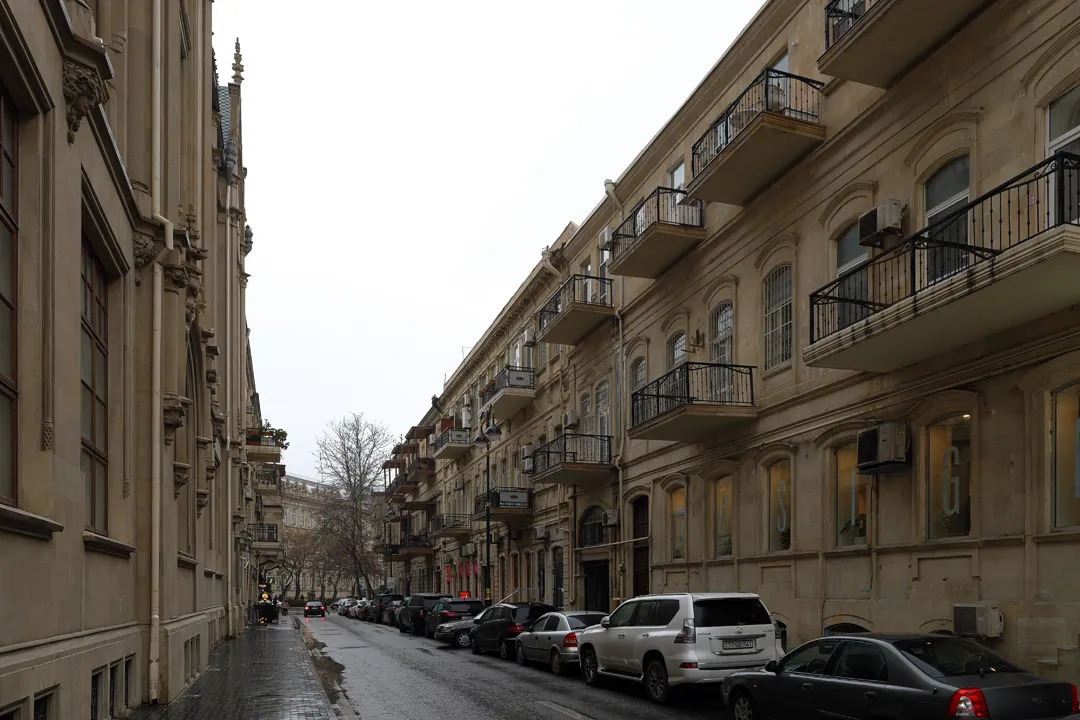
This building, dating from 1912, is so named because it was built by a local oil tycoon as a gift for his wife. Now it is used as a wedding venue and not open to the general public, but its architecture can still be admired from outside. Our own wedding anniversary also happened to be that day, making this a very fitting place to stop by.
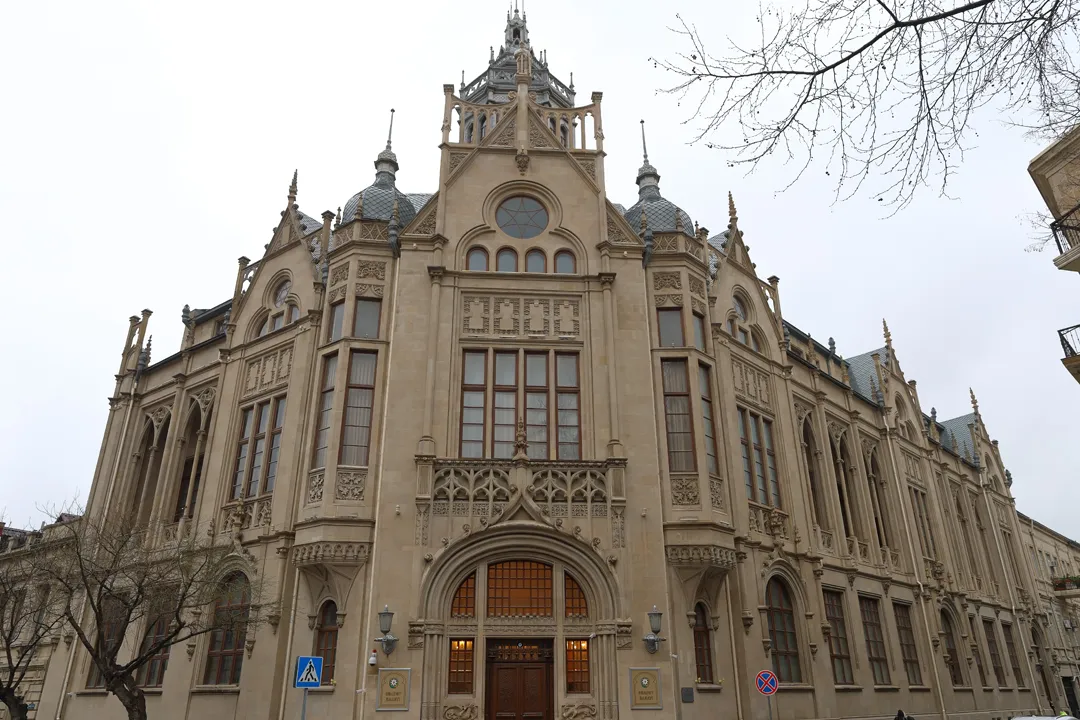
We ate our anniversary dinner back at the hotel restaurant. I ordered Caspian sturgeon, undoubtedly the most noteworthy dish available. Sturgeons are widely known for producing caviar, but seeing the fish itself on a menu is exceedingly rare. Its texture resembles that of swordfish but its taste is somewhat heavier.
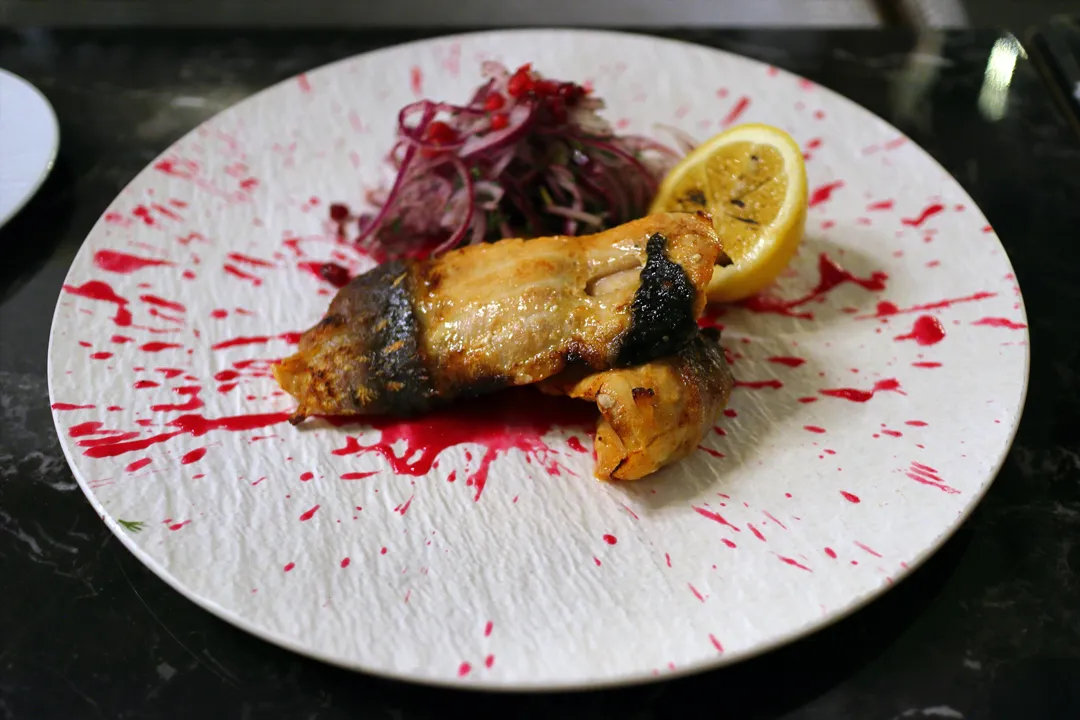
In addition to the sturgeon, we had other grilled meats. The lamb in particular was of very high quality. As a matter of fact, the lamb dishes that we ate in Azerbaijan were universally delicious.

Baku Boulevard, where the city meets the Caspian Sea
Only on our fourth day in Azerbaijan did we finally see a blue sky. We had to take advantage of it as it would be our last full day in Baku.
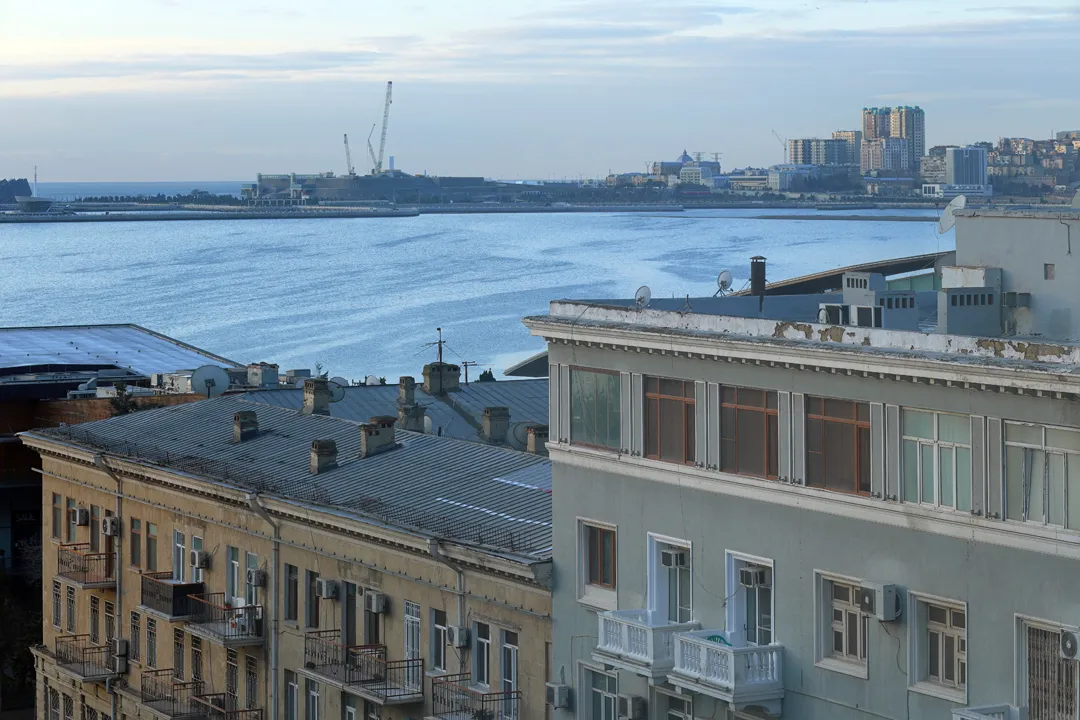
We walked to the Baku Boulevard, which is not a road but a park spanning the city’s waterfront. The actual road forming the boundary of the park is the six-lane but only one way Neftchilar Avenue, notable for being the starting section of the track for the Formula 1 Azerbaijan Grand Prix.
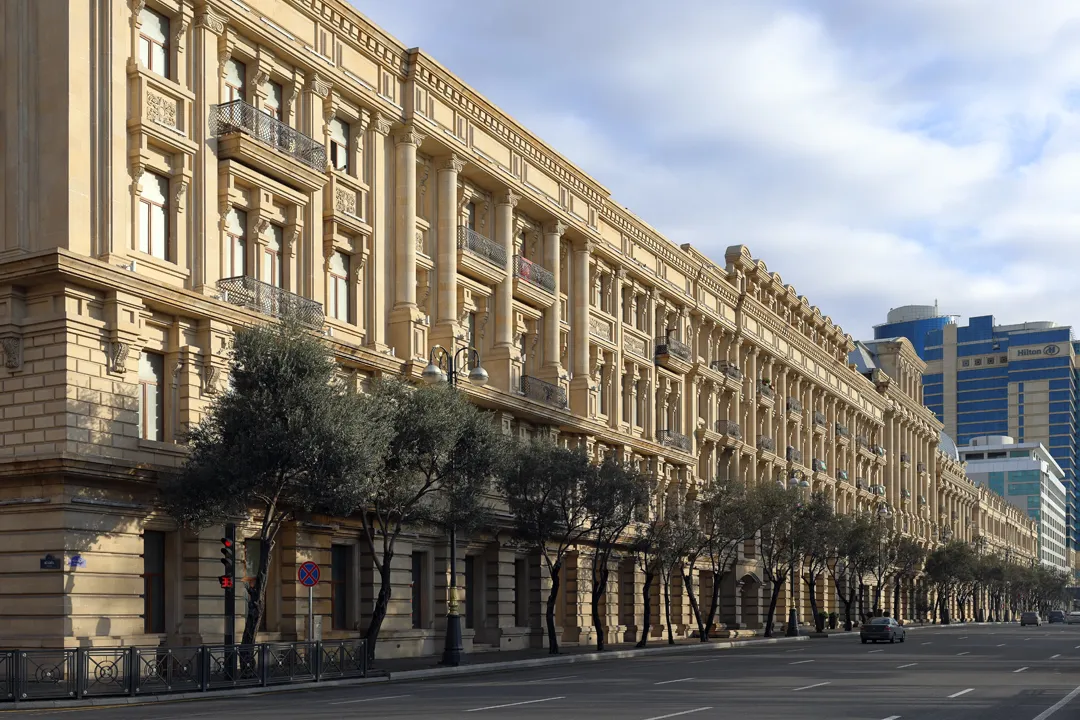
Super-wide roads in a city center are typically eyesores and this one is no exception, but at least every intersection has underpasses for pedestrians to cross safely. Anyway, some of the most impressive regular buildings in Baku can be found along this avenue because it faces the sole waterfront in the city. The traffic noise cannot be ignored, though; we could hear it even from the hotel one block away.
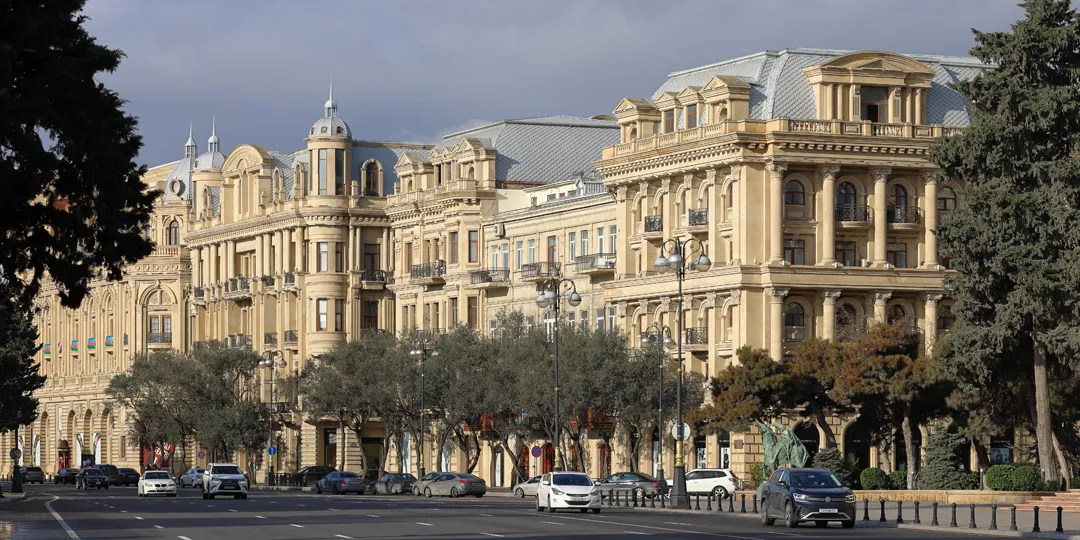
At the shore of the Caspian Sea, it was deceptively windy and cold even with the sunshine. Contrary to its name, the Caspian Sea is generally considered the world’s largest lake, as its water has only a fraction of the salinity of real seawater. However, seen from Baku, it is indistinguishable from an ocean because its huge size (more than four times larger than Azerbaijan itself) means that the opposite side in Iran or Turkmenistan is more than 300 km away. There are even huge flocks of seagulls like in other coastal cities.
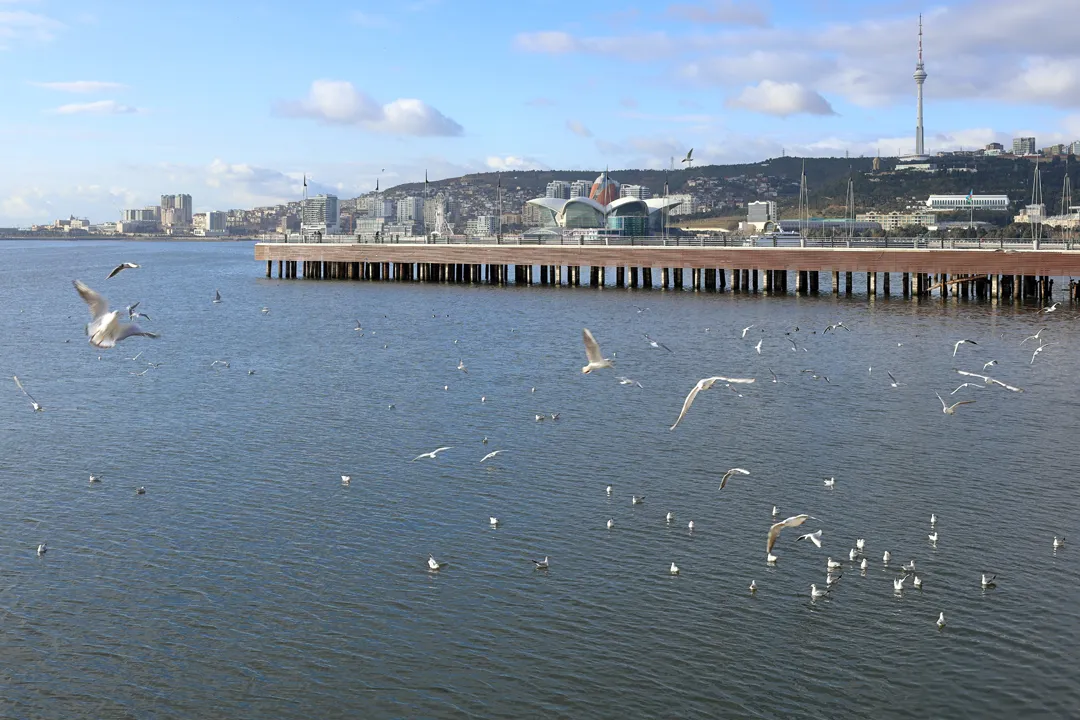
We went to the end of the pier, from where the entire skyline of Baku can be seen. It is worth mentioning that the surface of the Caspian Sea has an elevation of -28 m, making Baku the world’s lowest capital city. The roofs of most buildings facing Baku Boulevard could barely reach sea level.
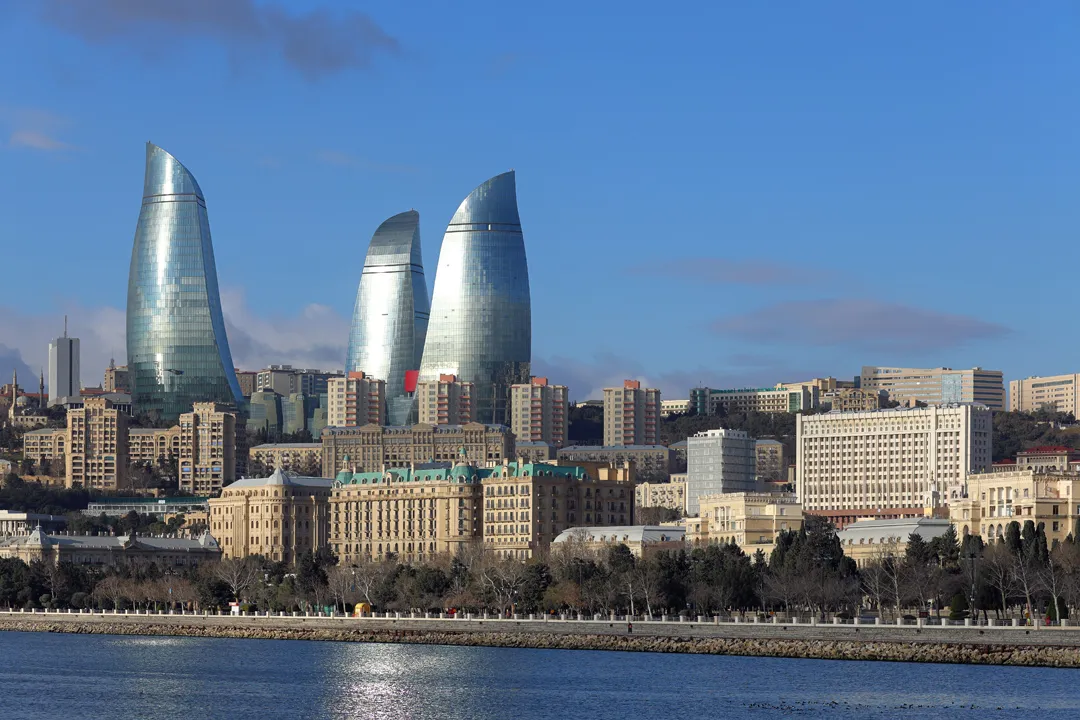
The eastern side of Baku, centered on the Old City, has mostly European style buildings with the exception of the Flame Towers. The western side, on the other hand, only began to be developed starting in the 2000s and is dominated by modern skyscrapers.
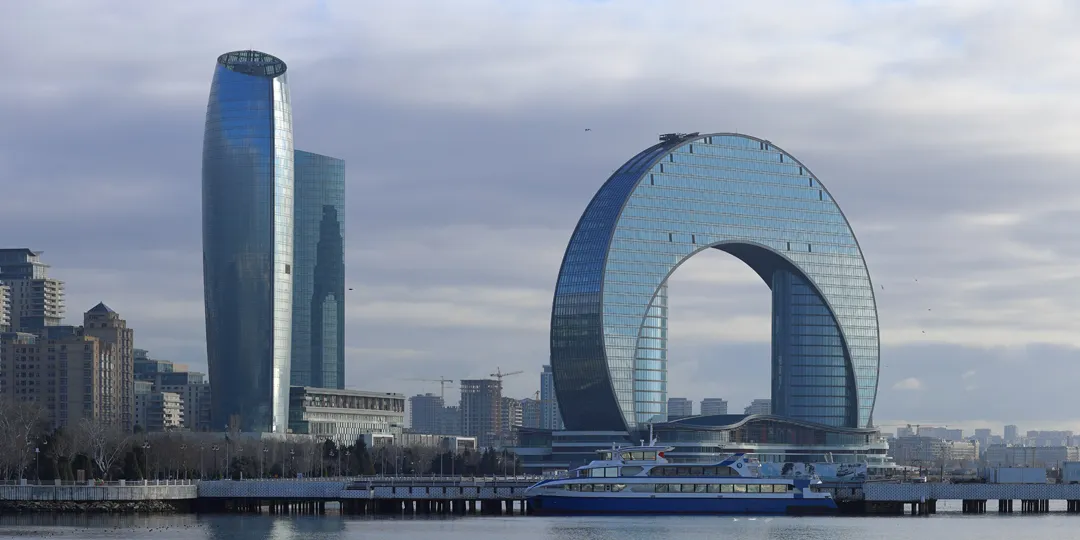
It was starting to become cloudy again, and it was getting quite cold, especially on the pier, so we quickly left after taking some photos.
Heydar Aliyev Center, Azerbaijan’s most comprehensive museum
We spent most of the remaining time that day at the Heydar Aliyev Center, a combination of museum and event hall. Like the airport and numerous other places across Azerbaijan, it is named after former president Heydar Aliyev, the most influential figure in the country’s history. He was the leader of Azerbaijan first as a Soviet republic and later as an independent country; in the latter role, he was credited with developing the economy by attracting foreign investment in the energy sector, although opponents frequently accused him of corruption.
Compared to other tourist attractions in Baku, the Heydar Aliyev Center’s location is somewhat inconvenient, being 1 km from the nearest metro station (Nariman Narimanov). This part of the city mostly features apartment blocks for middle-class residents, and is not as polished as the area around the Old City.
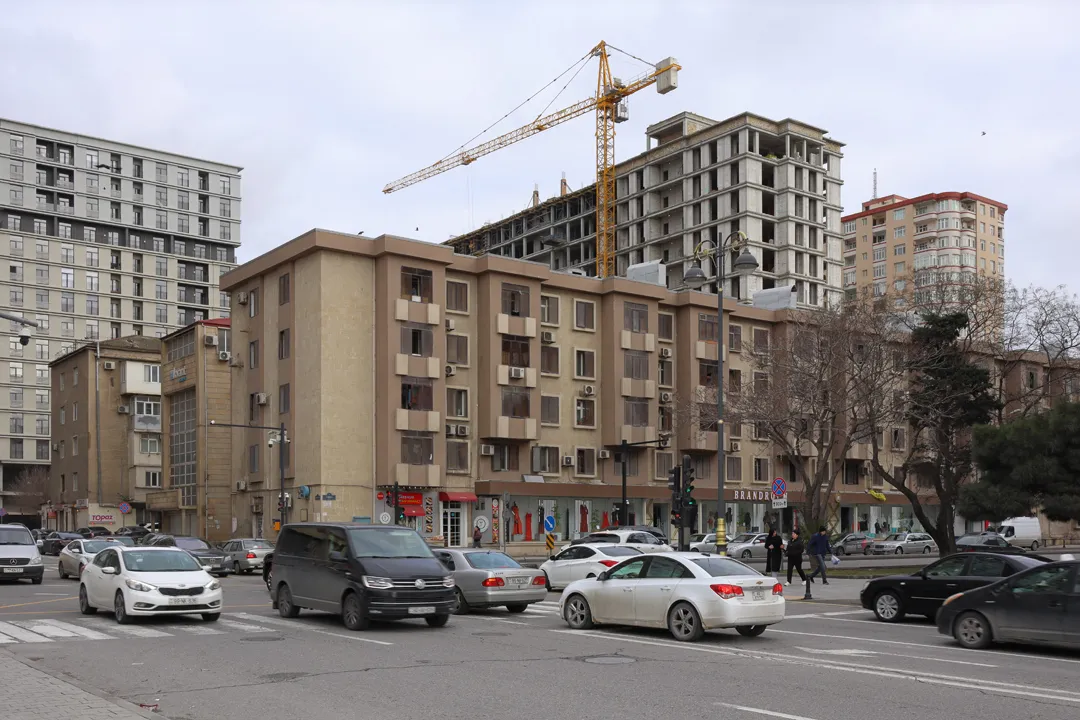
At least from what we saw, the quality of life in this area is still decent. The housing is not luxurious but it is relatively new and a step above generic Soviet-era buildings.
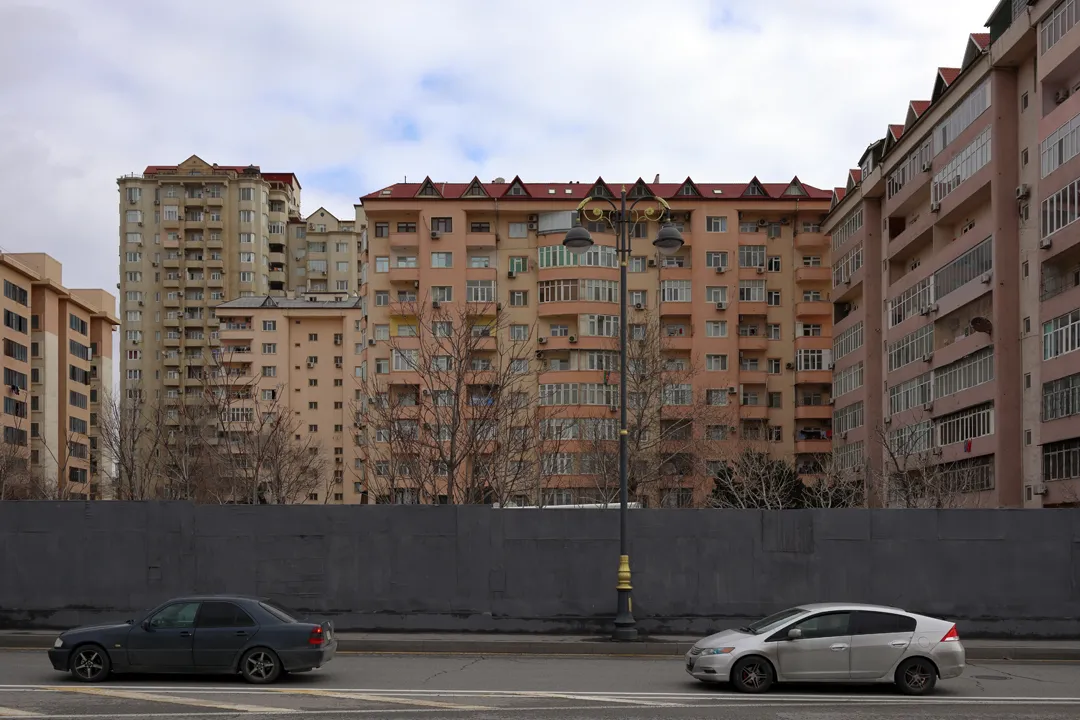
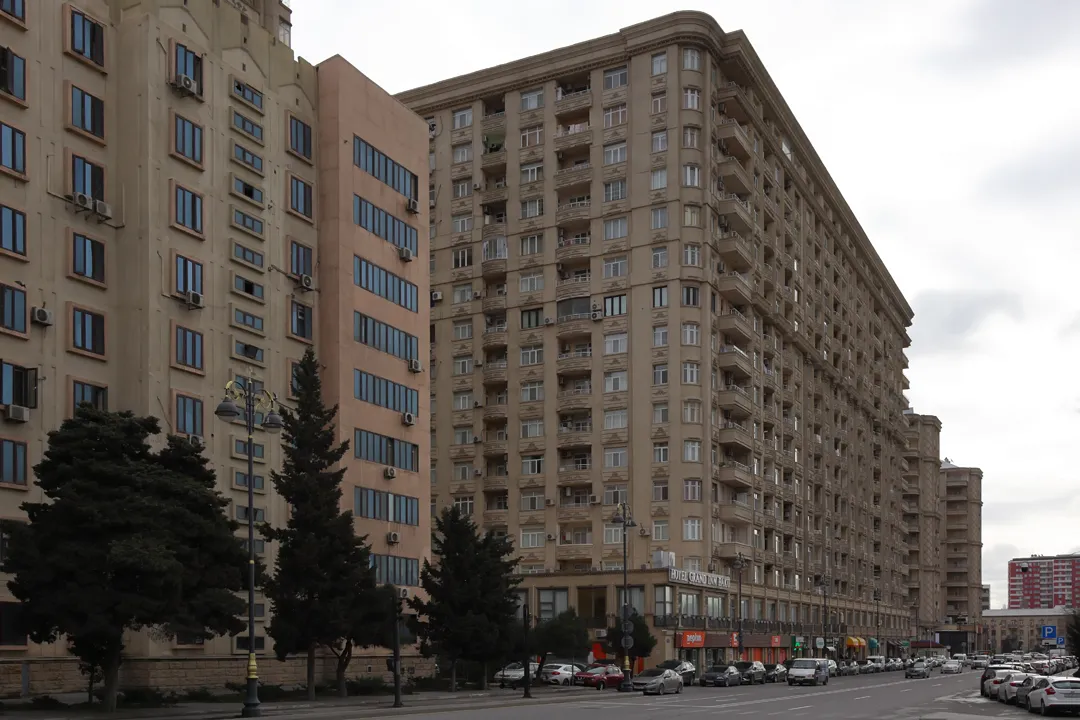
When we arrived at the Heydar Aliyev Center, it was still closed, so we spent some time looking around outside. The building was one of the final projects of the renowned architect Zaha Hadid, who designed its exterior shape without using any straight lines.
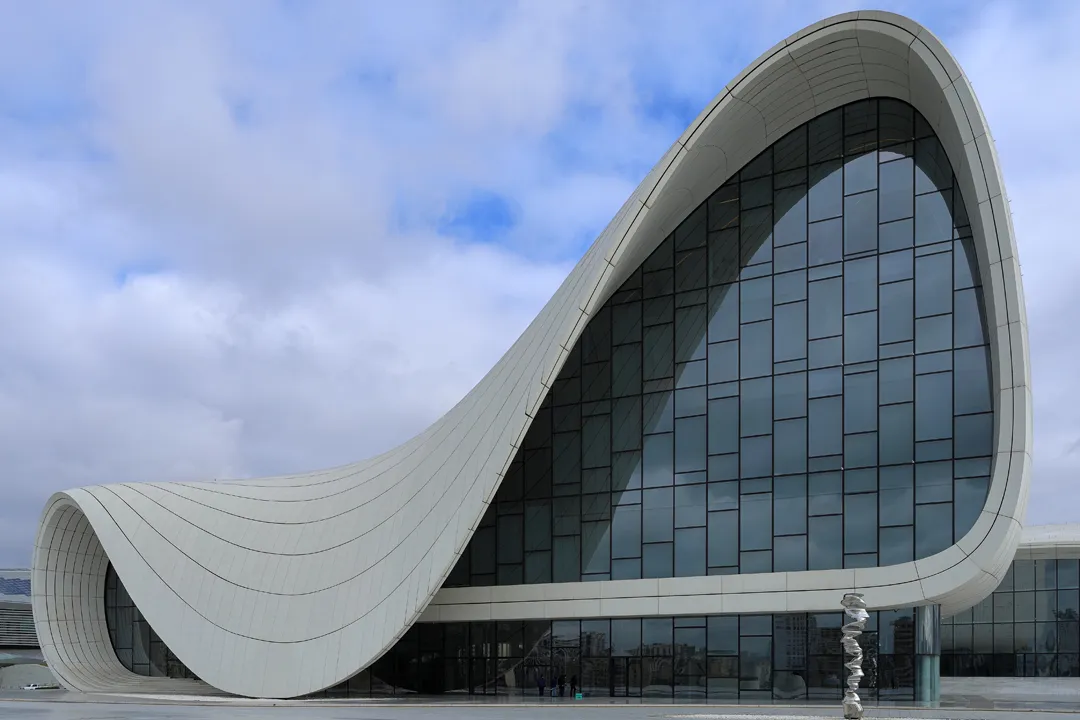
The shell is made out of concrete, yet gives an impression of being airy and lightweight.
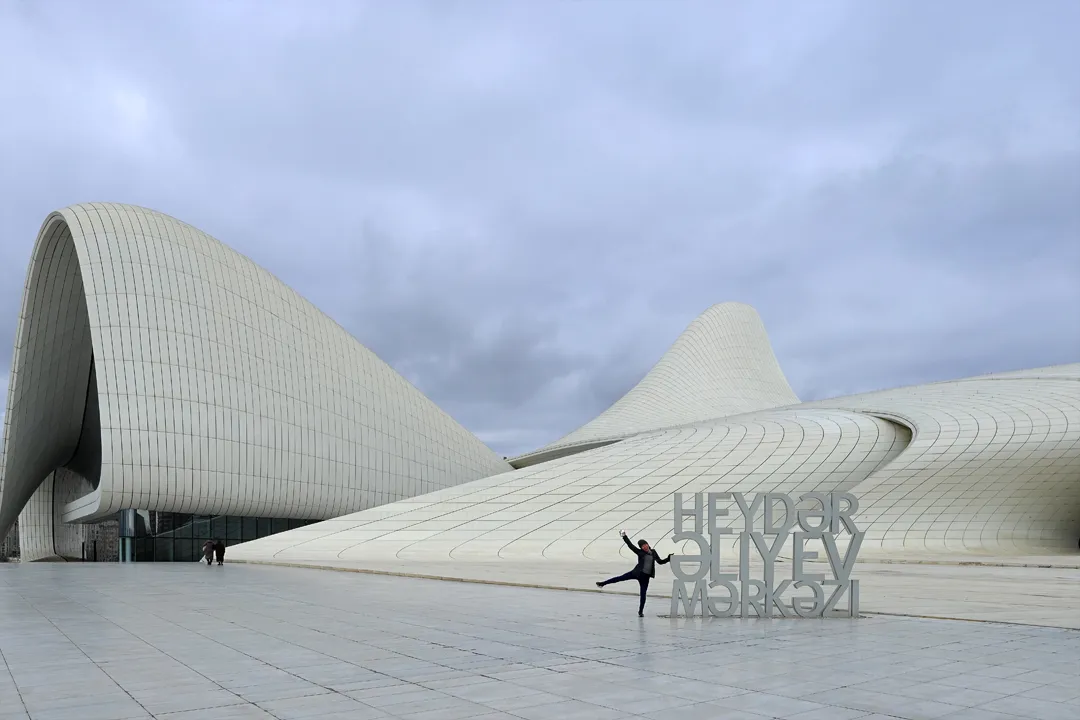
An expansive, downward-sloping open space in front allows for a wide view of Baku’s skyline. The curved building is the Ritz-Carlton hotel, but unlike the one that we stayed at in Hong Kong, this one is very poorly located for sightseeing and may only be useful for business travel.
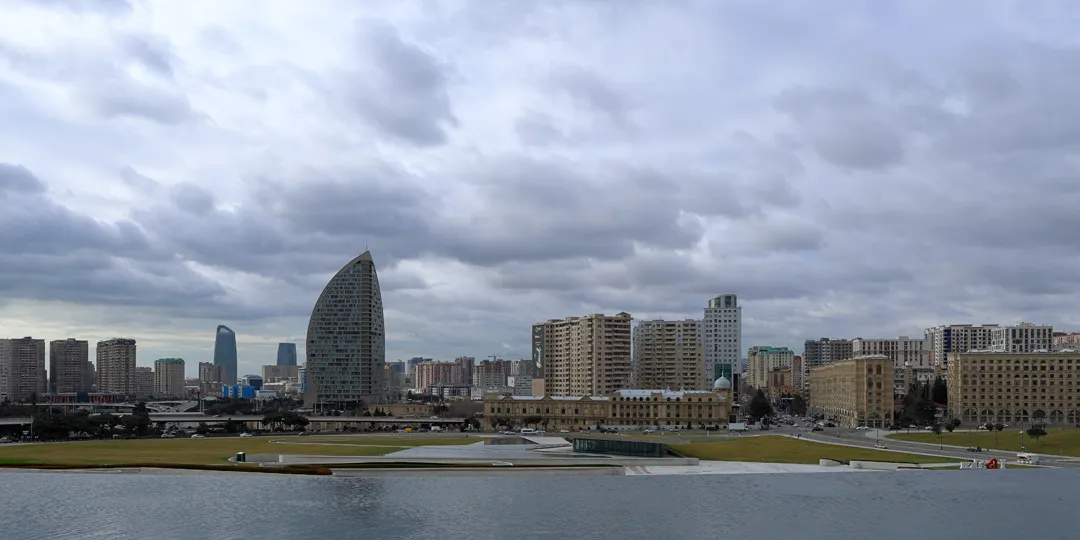
There is a sign near the bottom of the slope for tourists to take photos. Only a few other people were there before us.
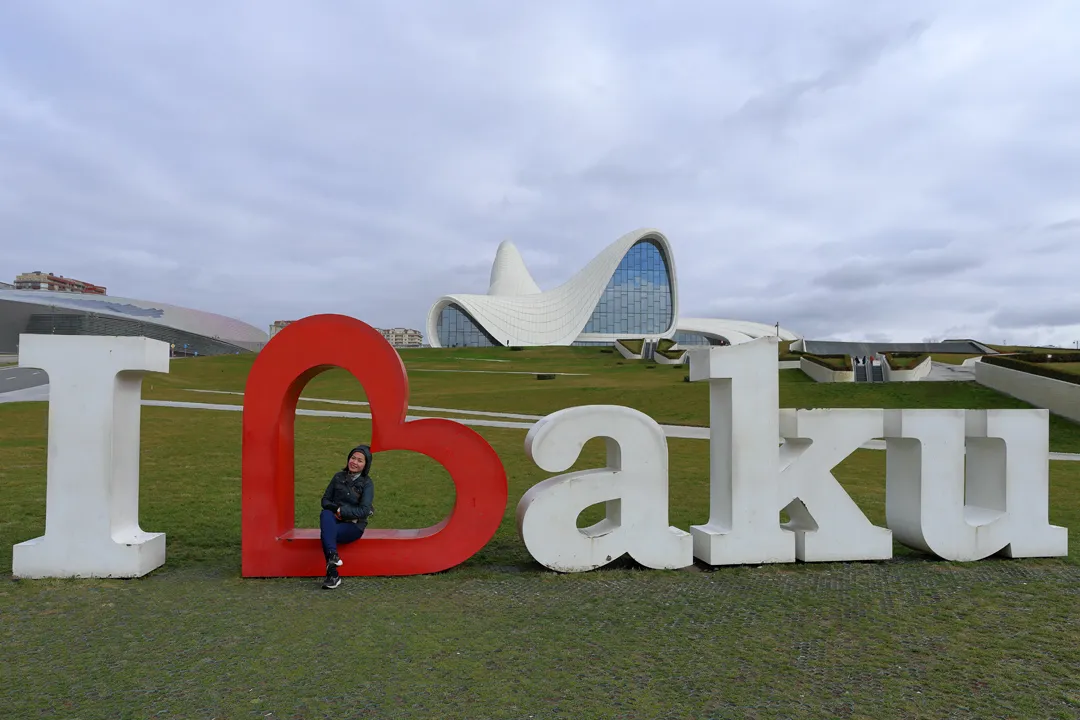
We bought coffee at the interesting stand next to the sign, since we still had some more time to wait before the center opened.
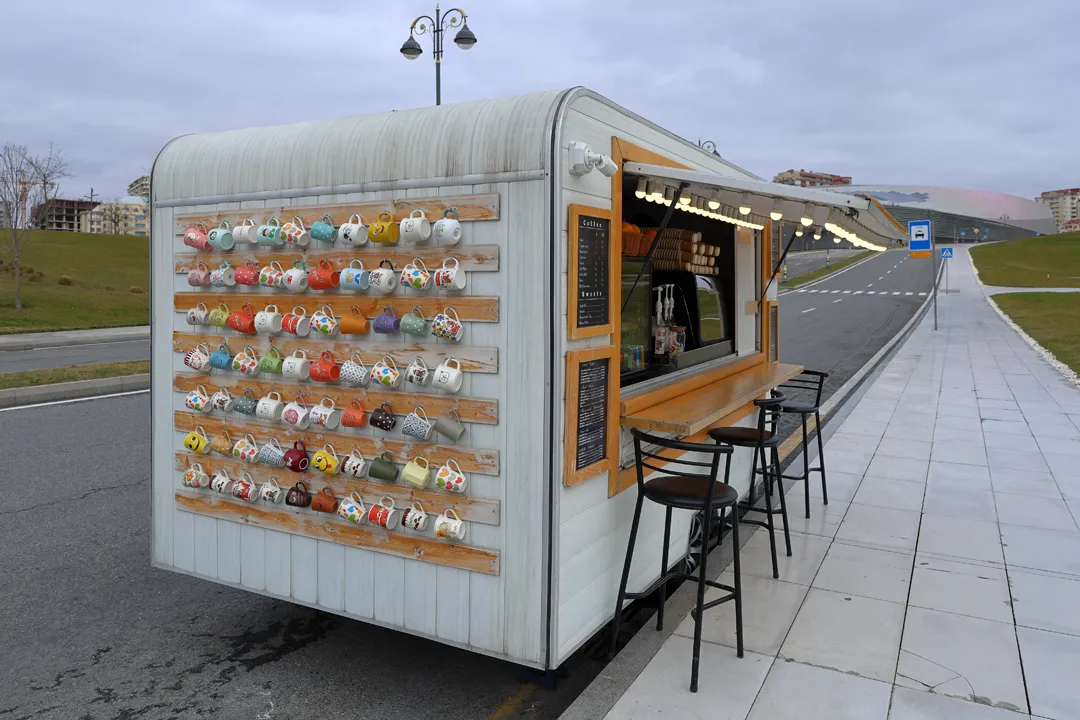
Only exactly at the opening time were we allowed in. At first glance, the interior appears sparse, but actually there are so many exhibits that several hours would be needed to see all of them.
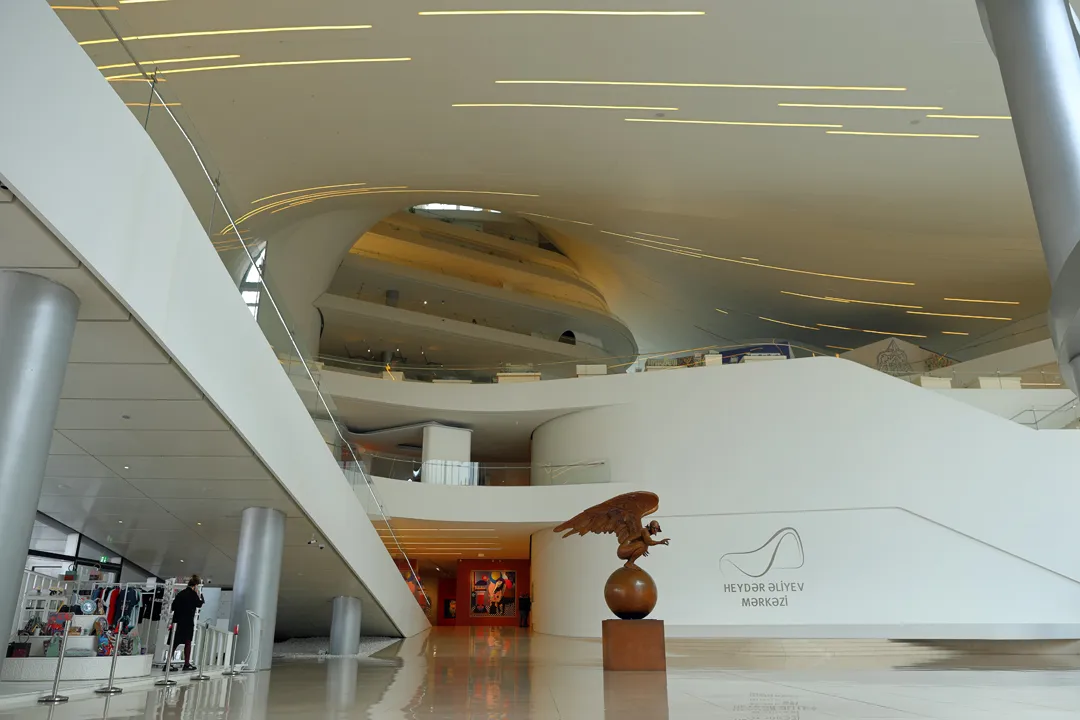
The architecture itself is undoubtedly also of interest.
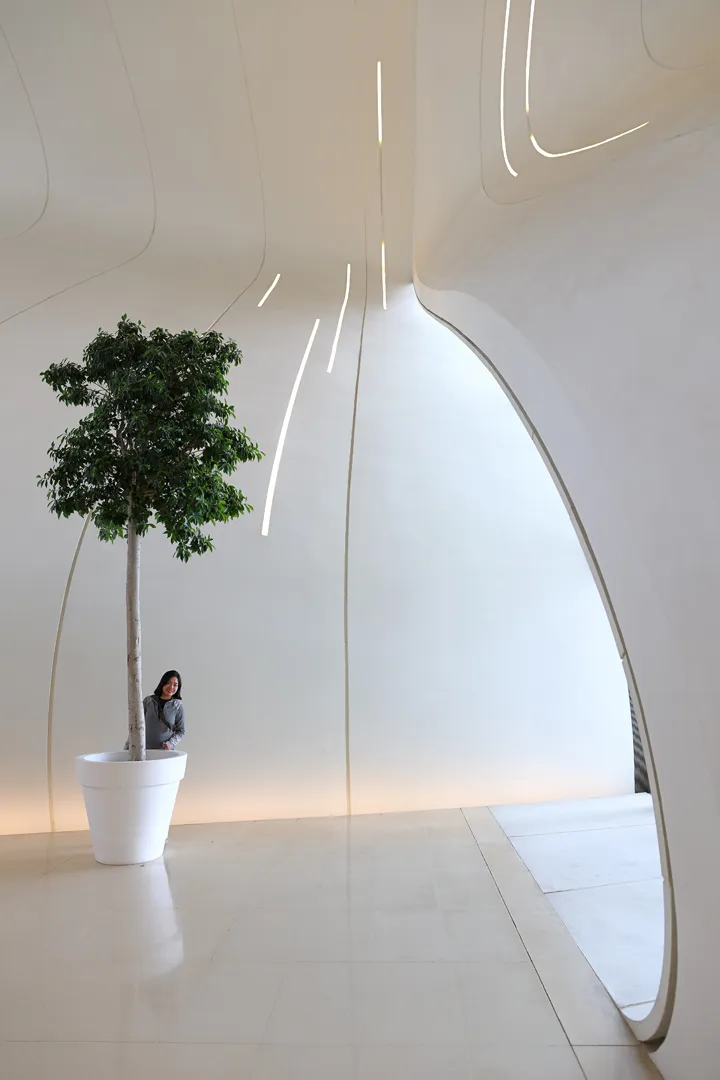
The artworks and items on display span many categories and time periods, so it is easy to remain interested while browsing.
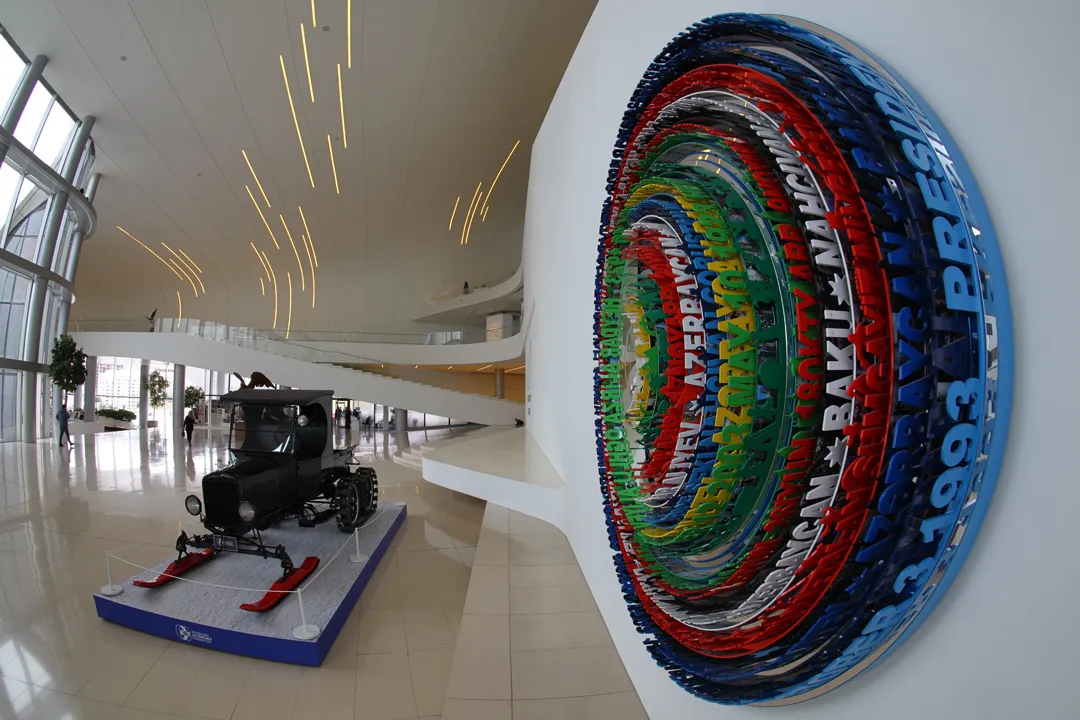
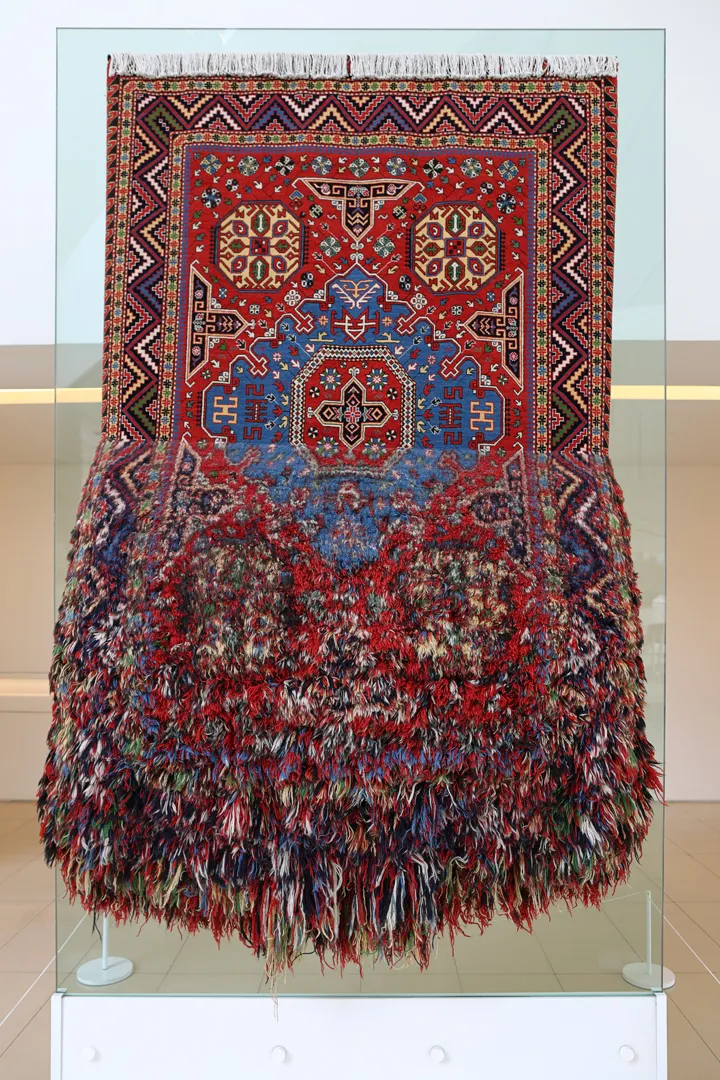
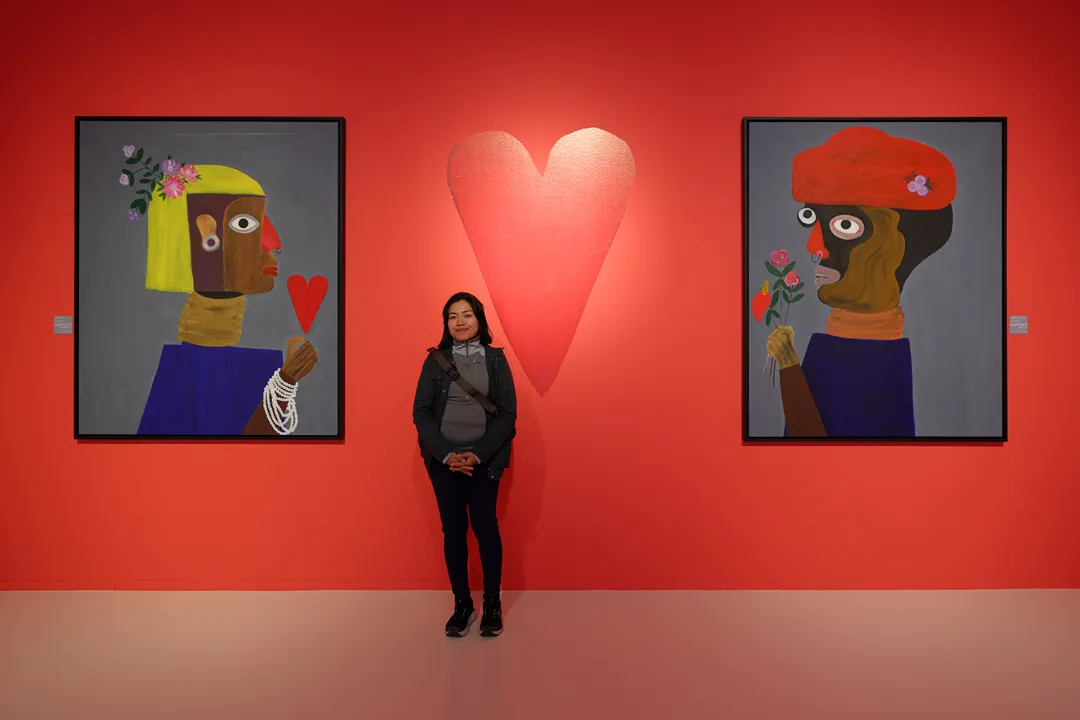

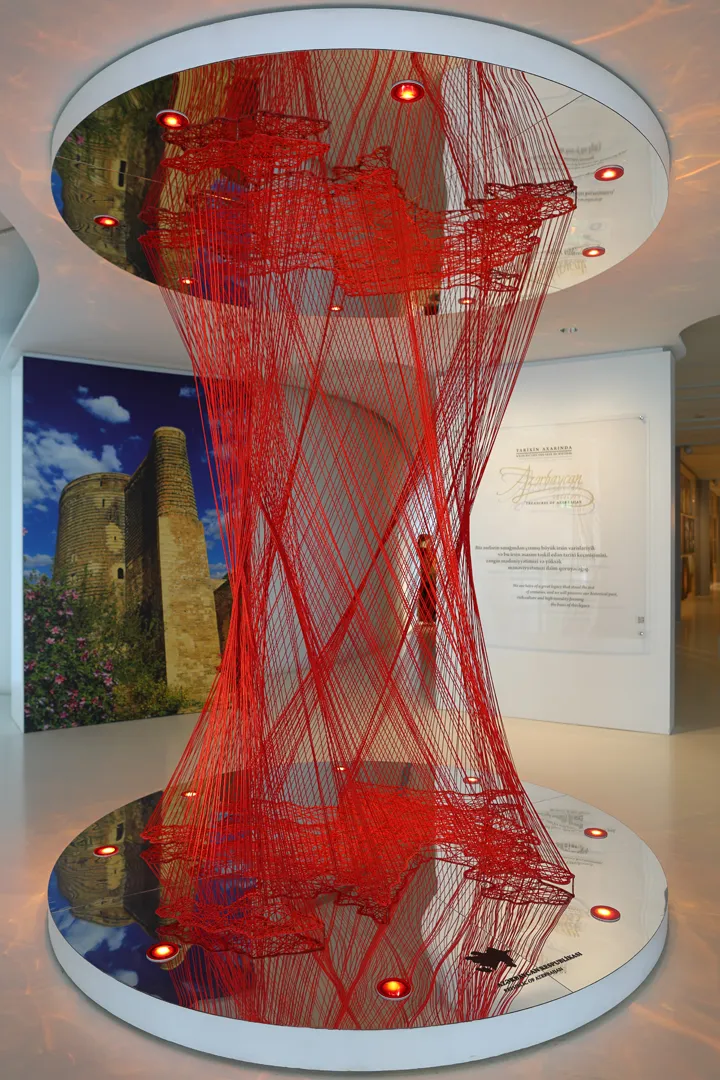
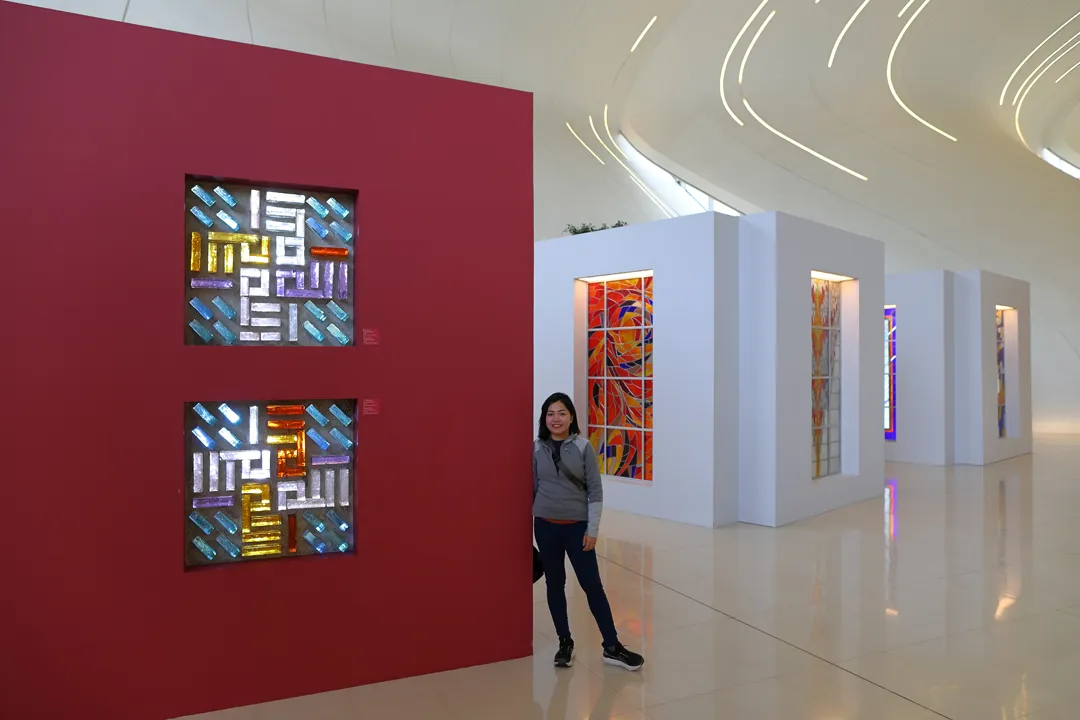
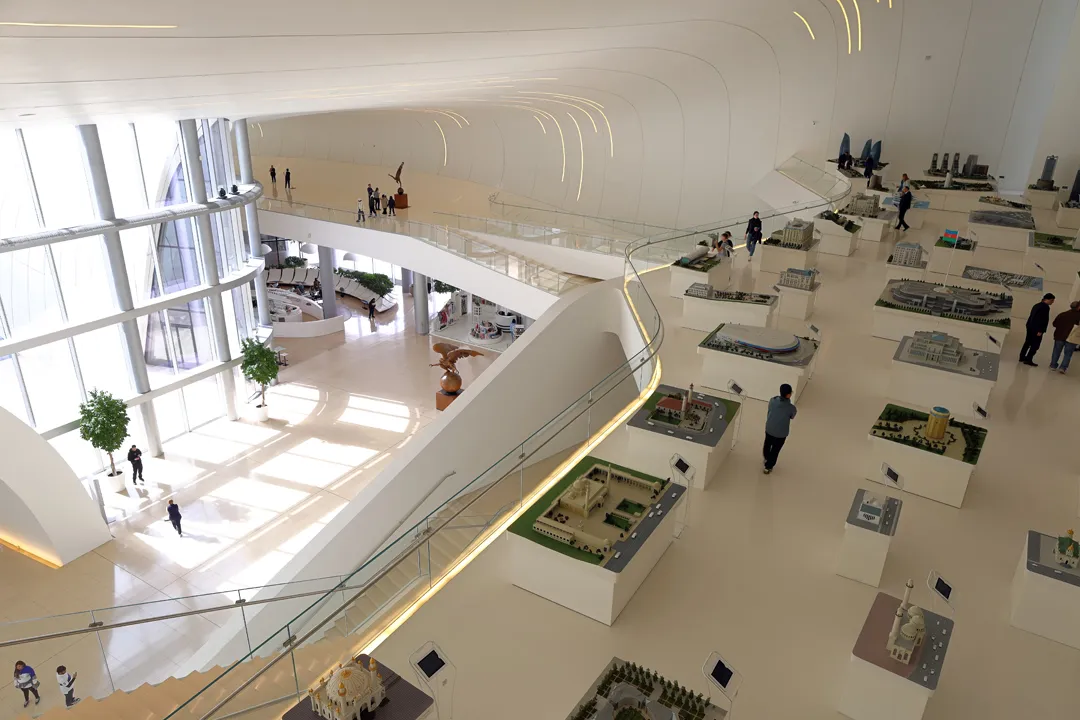
As would be expected, there is also a section about Heydar Aliyev himself, which contains important items related to his life.
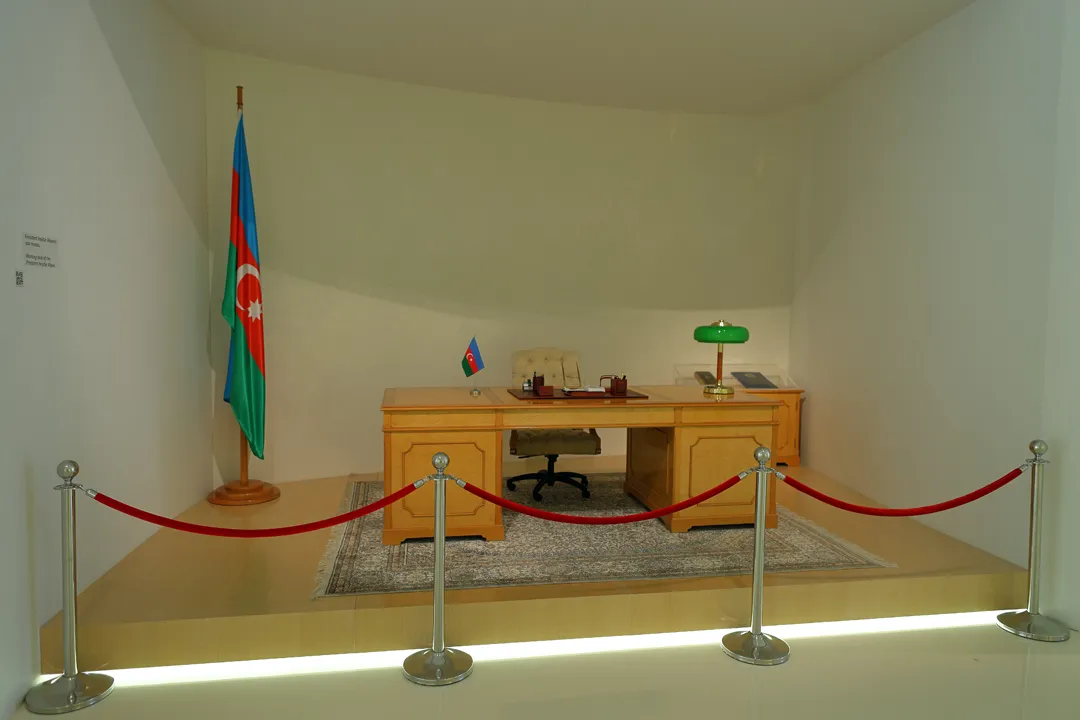
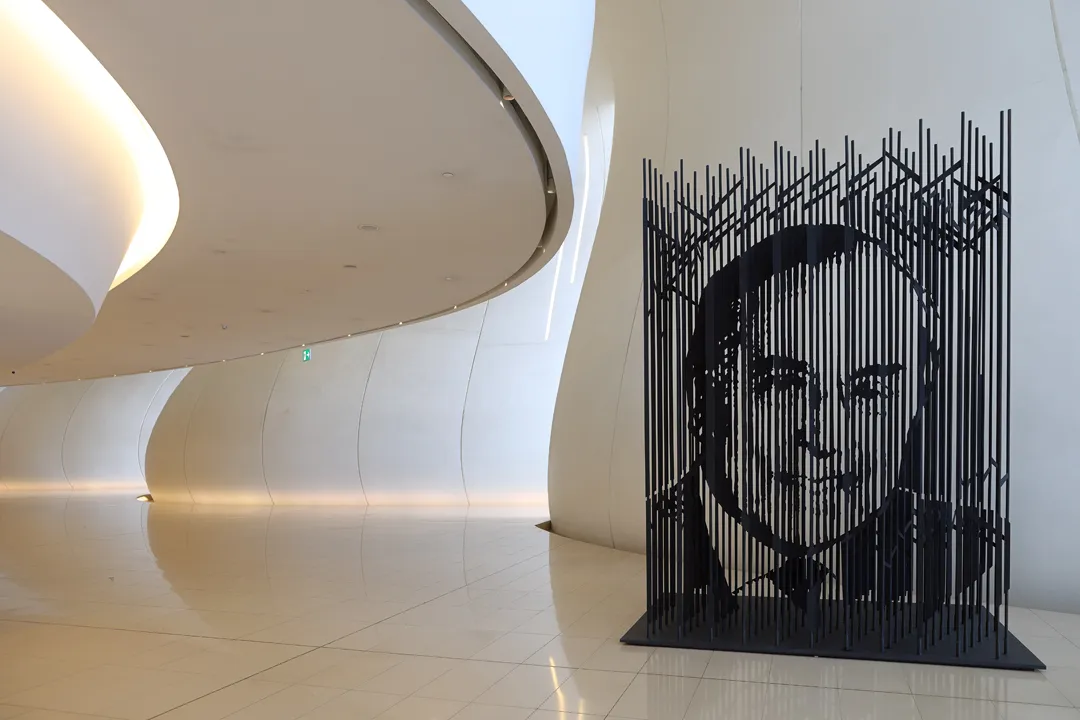
The exhibits also include all of the official cars that he used as president.
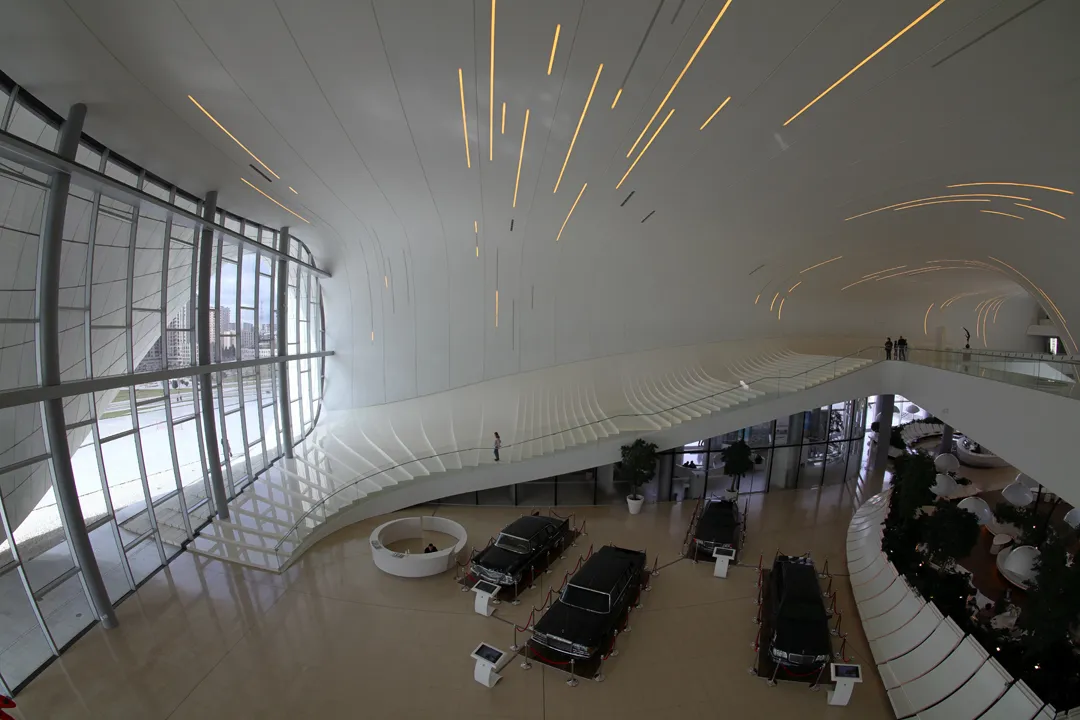
After Azerbaijan gained independence upon the collapse of the Soviet Union, Aliyev sought better relations with Western countries. This is reflected in the fact that he started out using Russian cars, but later switched to a German Mercedes-Benz.
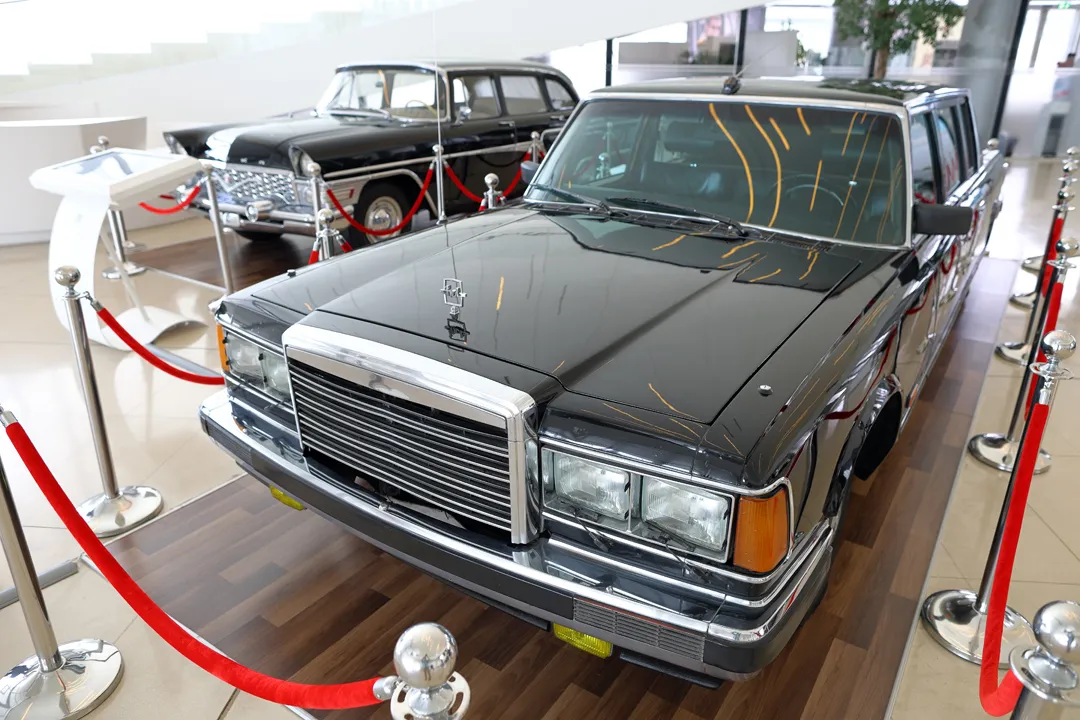
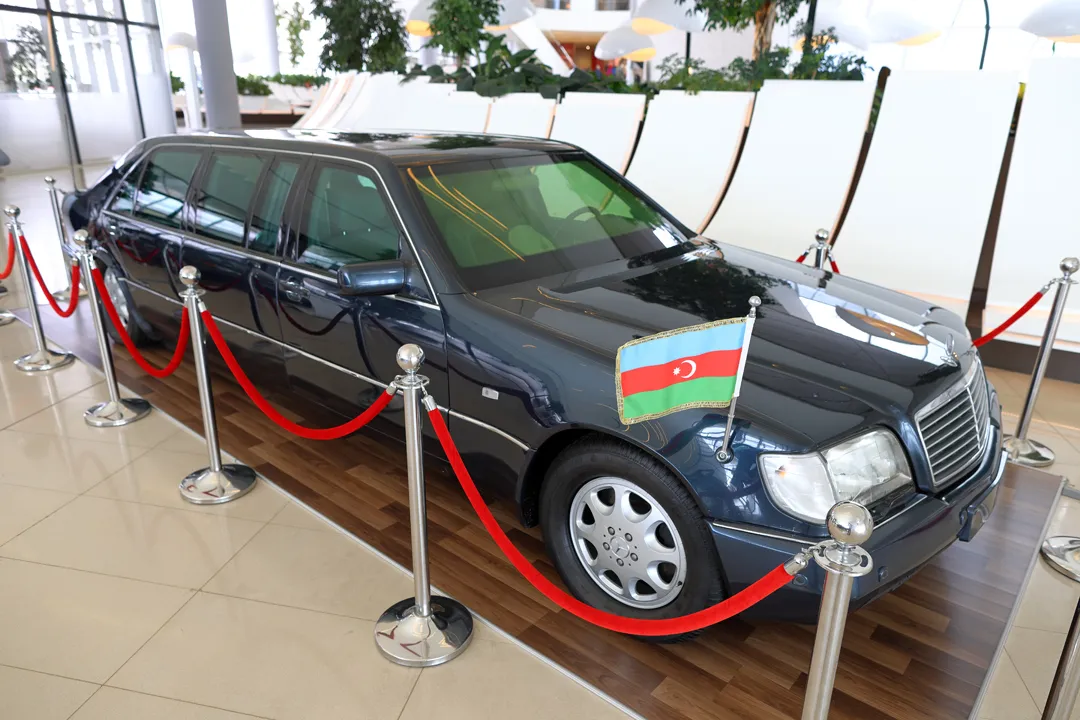
Speaking of cars, there is an entire floor in the basement dedicated to classic cars, with several dozen of them in total. It requires a surcharge on top of the regular ticket, but at only 10 manat it is worth the price. The highlights are Soviet models rarely seen in Western museums, but there are also many European and American cars.
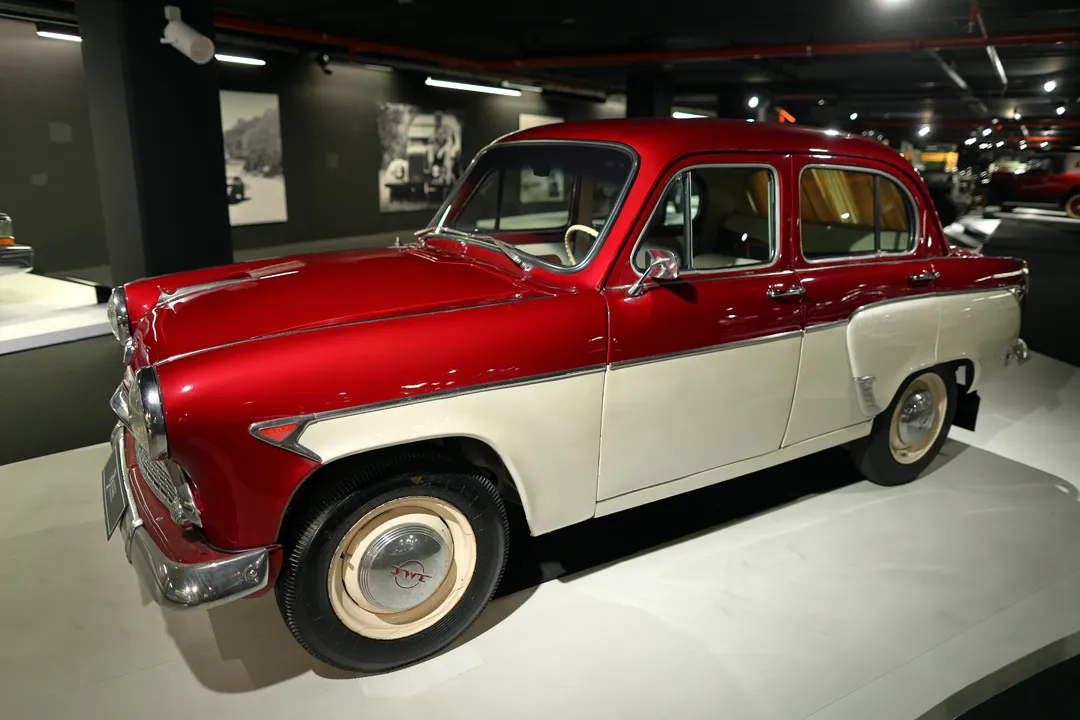
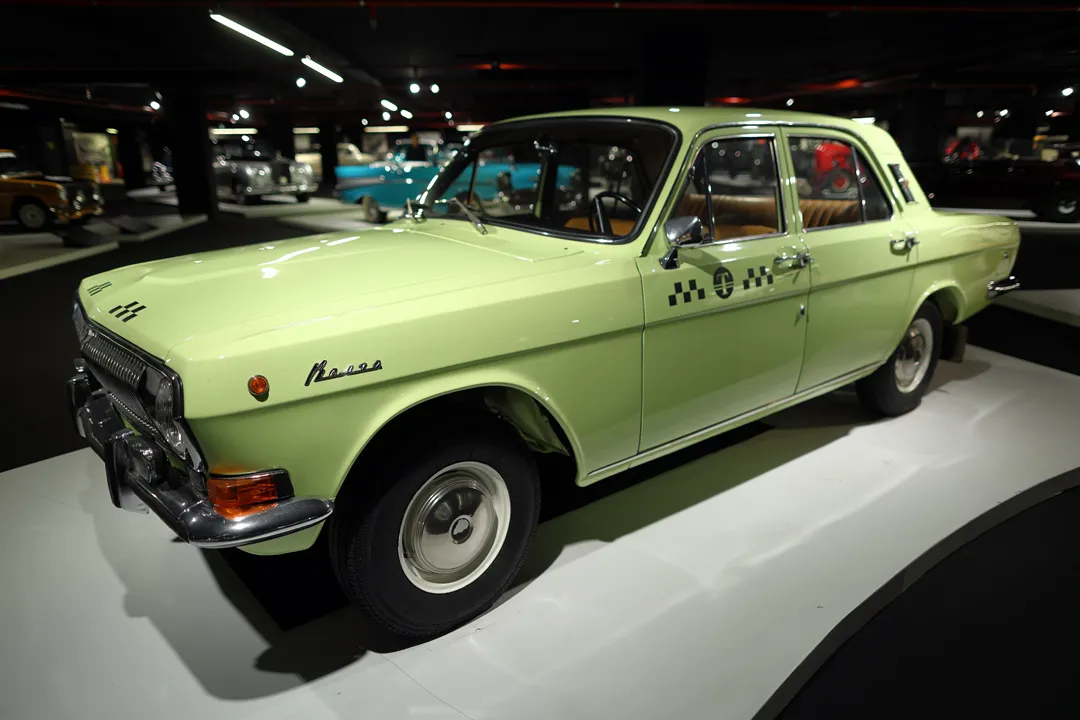
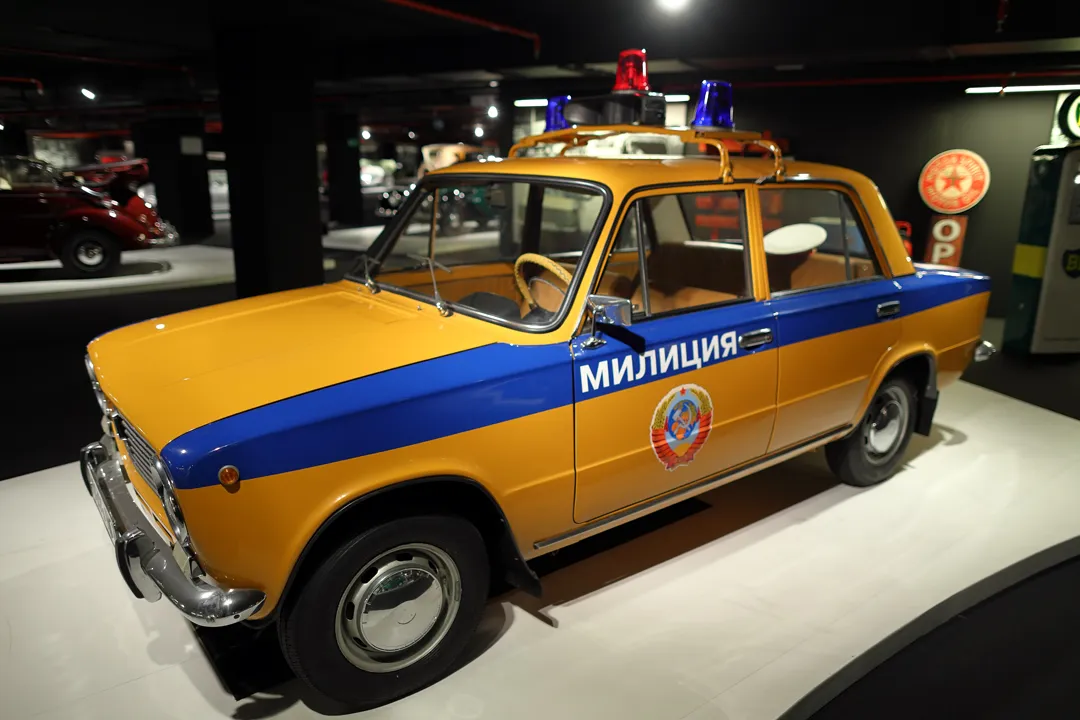
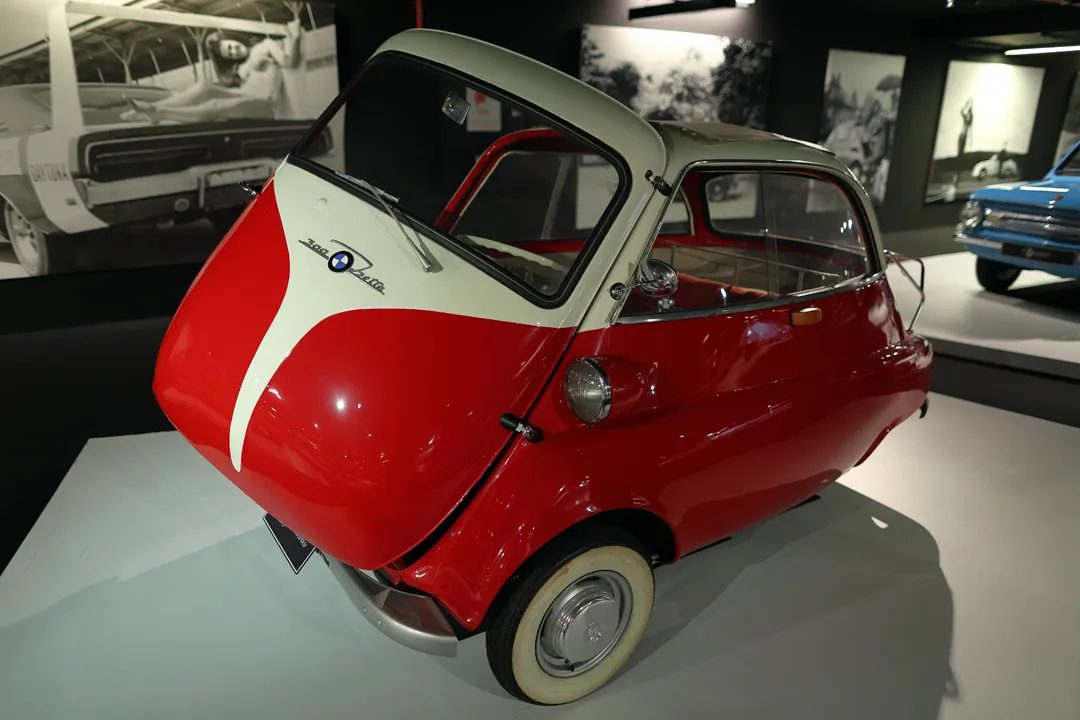
It was already getting late by the time we were done with the car exhibit, even though we did not even see everything in the main part of the Heydar Aliyev Center. We had more plans for the day, so there was no choice but to leave.
A closer look at the Flame Towers
Among the modern buildings in Baku’s skyline, by far the most iconic are the three Flame Towers, and before leaving, we wanted to see them up close. We took the metro to Icherisheher again, but then we first made a short detour back to the Palace of Happiness because we had seen an interesting cafe there the previous day, which we did not try at the time because it was right after we had eaten.
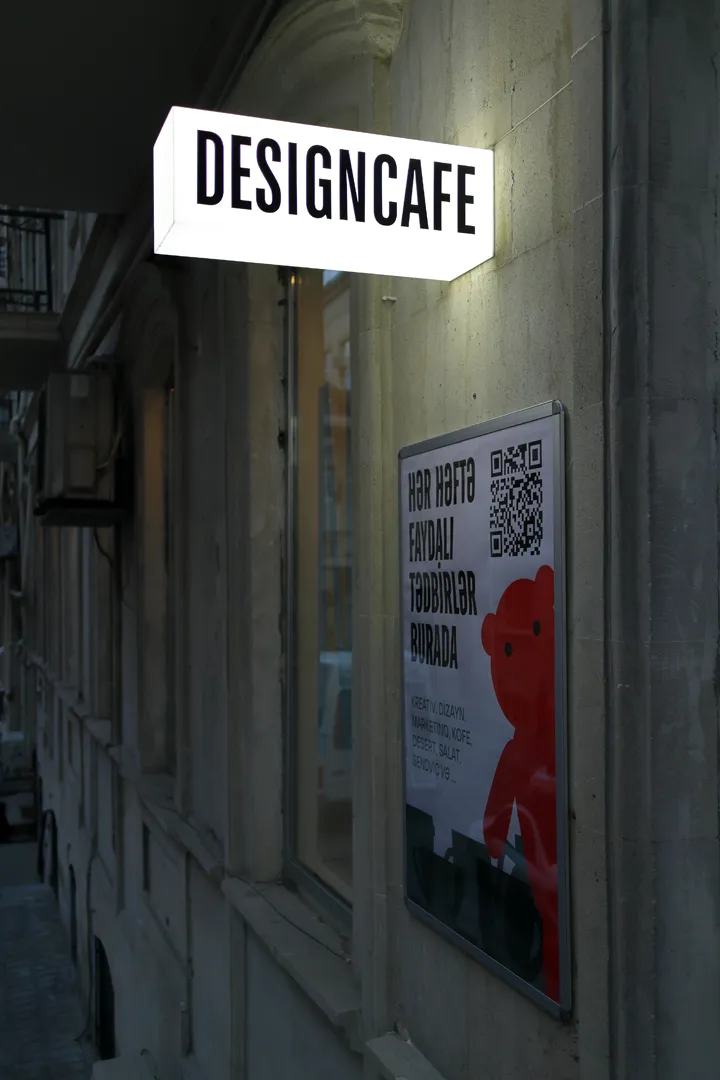
We liked the cafe’s minimalist interior, which was unlike anywhere else we ate in Azerbaijan. (The red bear is apparently not unique because we later saw an identical one in Nanjing, China.)
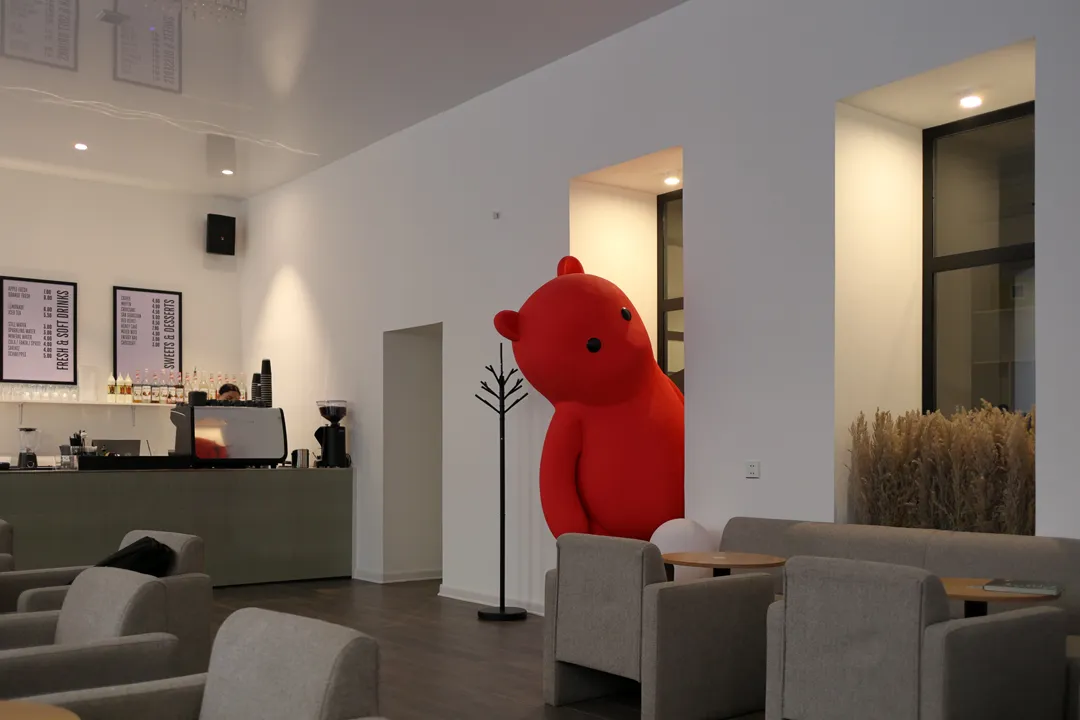
The windows face the Palace of Happiness. However, only we chose a table next to a window; the local patrons appeared to prefer sitting near the inside wall.
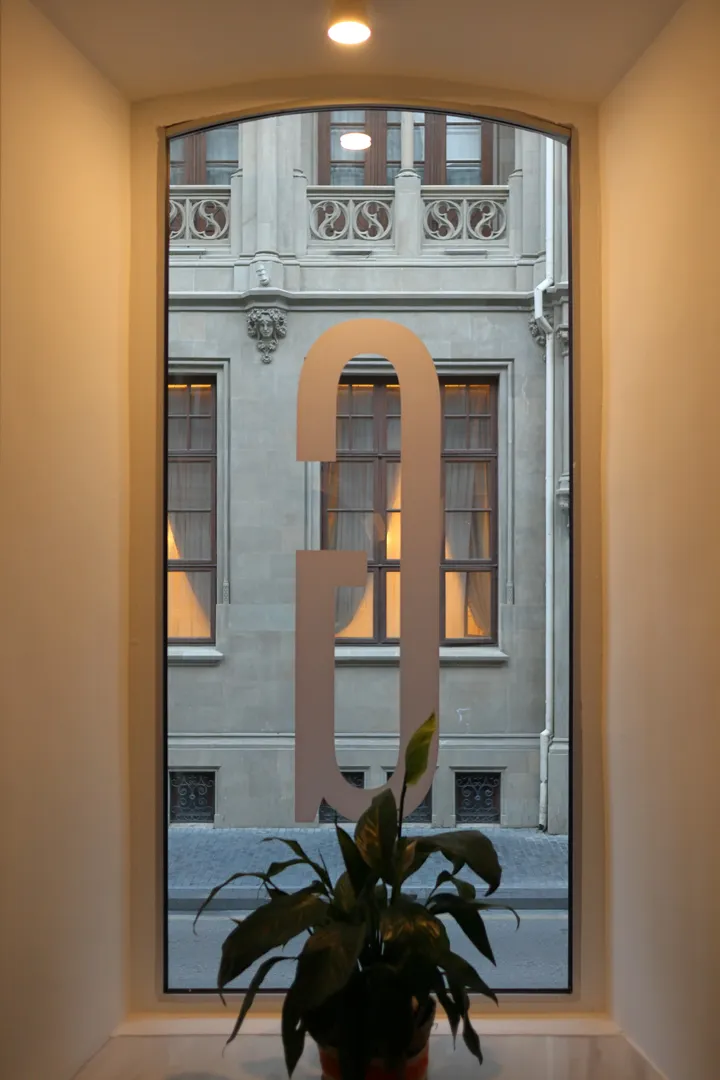
It was rather late in the day to have coffee, but we still ordered it because it looked good. In general, tea is the default beverage in Azerbaijan, while coffee is not as widespread and is mostly consumed by younger generations. We were already drinking tea with most meals, though, so trying a coffee shop was a worthwhile experience.
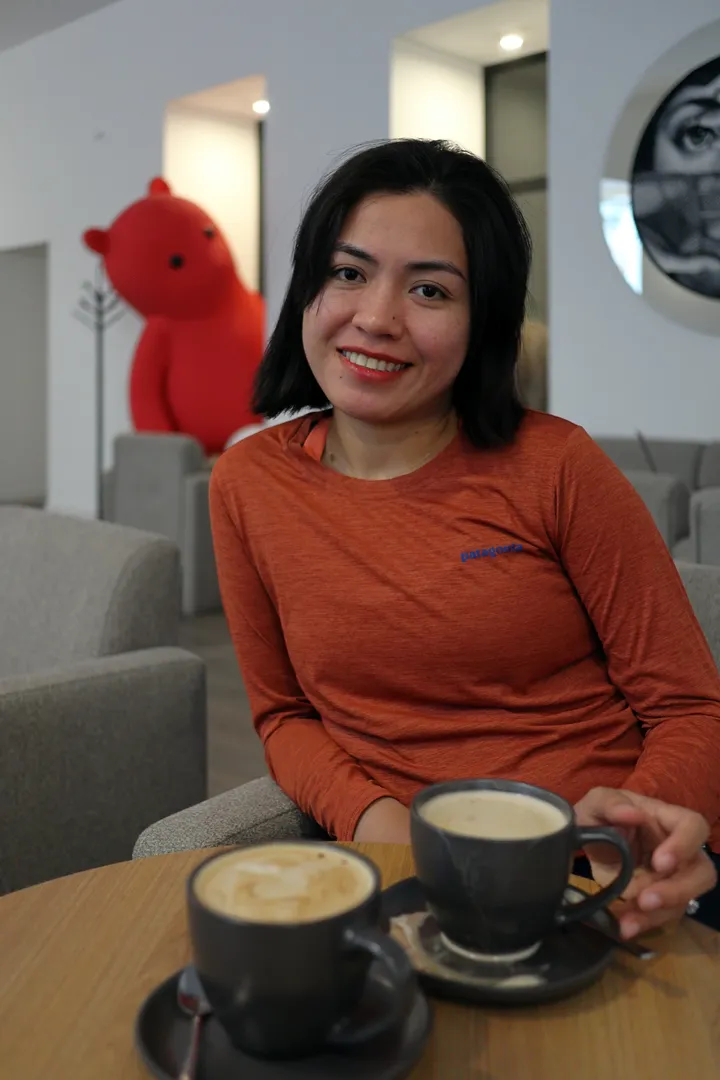
We didn’t stay too long in the cafe because we wanted to get to the Flame Towers before it became too dark. When we got back to the main street encircling the Old City, it was already near sunset and the buildings had started to be lit up, creating a nostalgic European atmosphere.
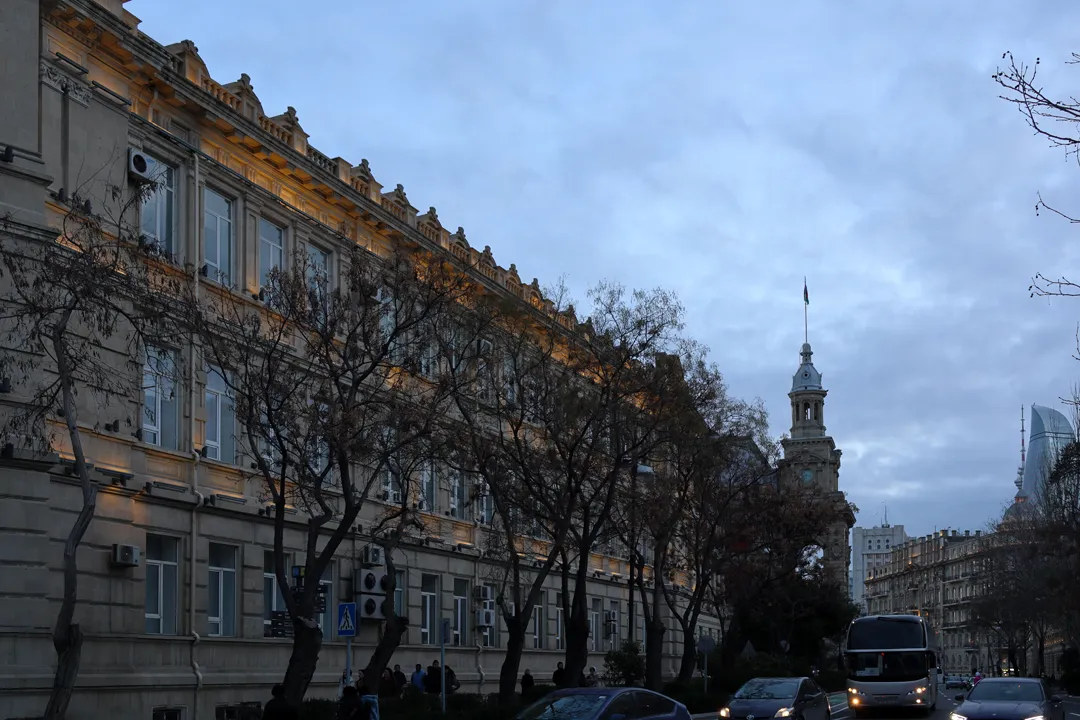
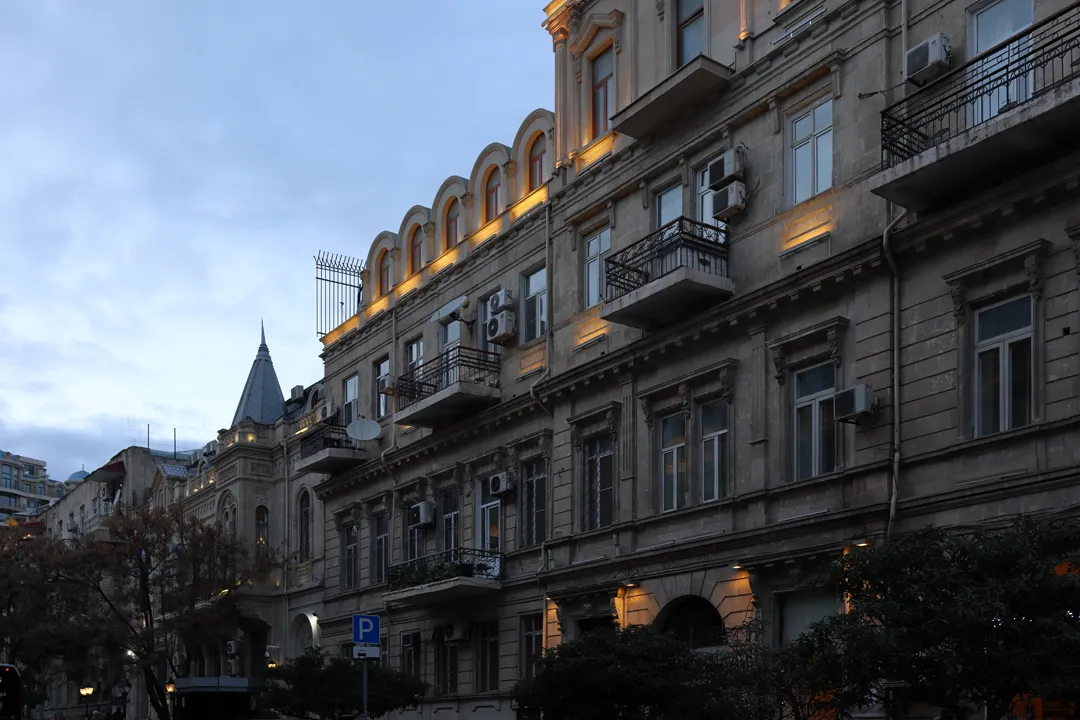
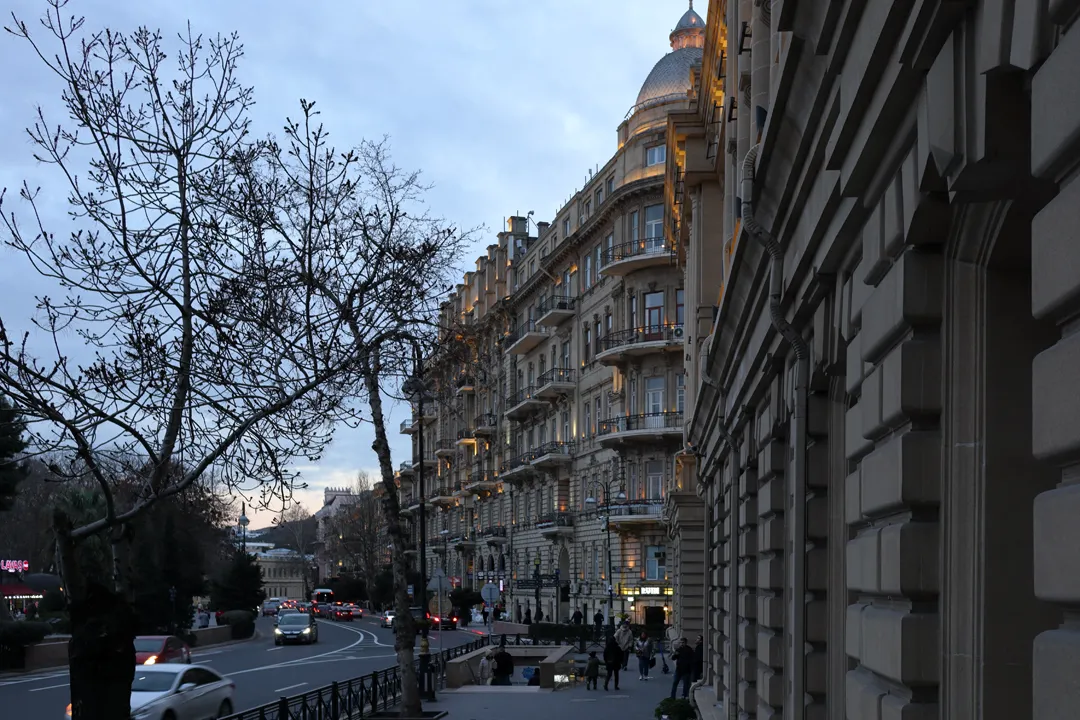
Among the otherwise monochromatic buildings on this street, the city hall stands out for the use of the color red. At the time of its construction in the 1900s, the red bricks were very expensive as they had to be imported.
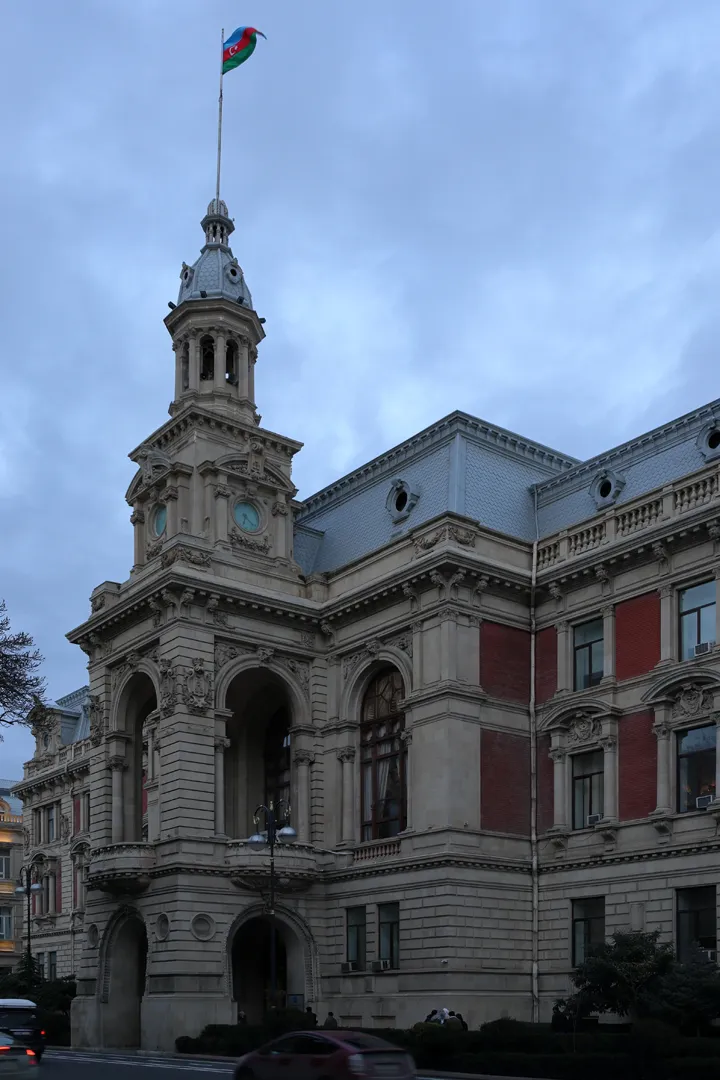
At the next intersection past the metro station, we passed the National Art Museum of Azerbaijan. Unfortunately, we had no time to go there during our trip.
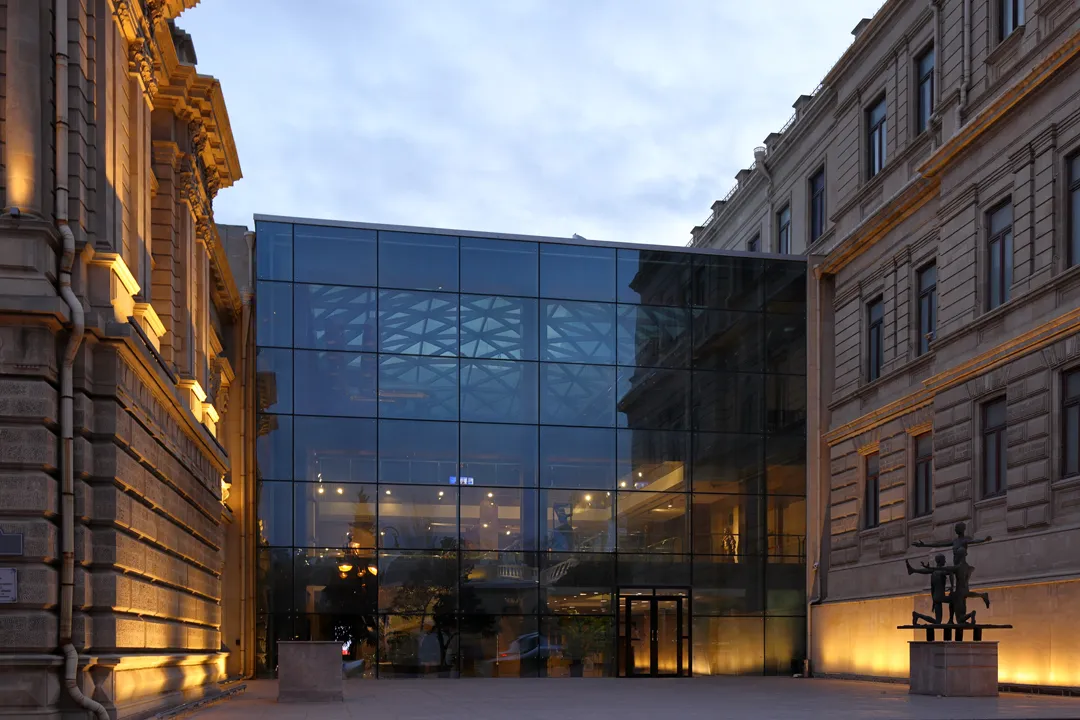
The large roundabout on Neftchilar Avenue was extremely congested with rush hour traffic. Having so many lanes only seemed to make it worse because the drivers were merging haphazardly.
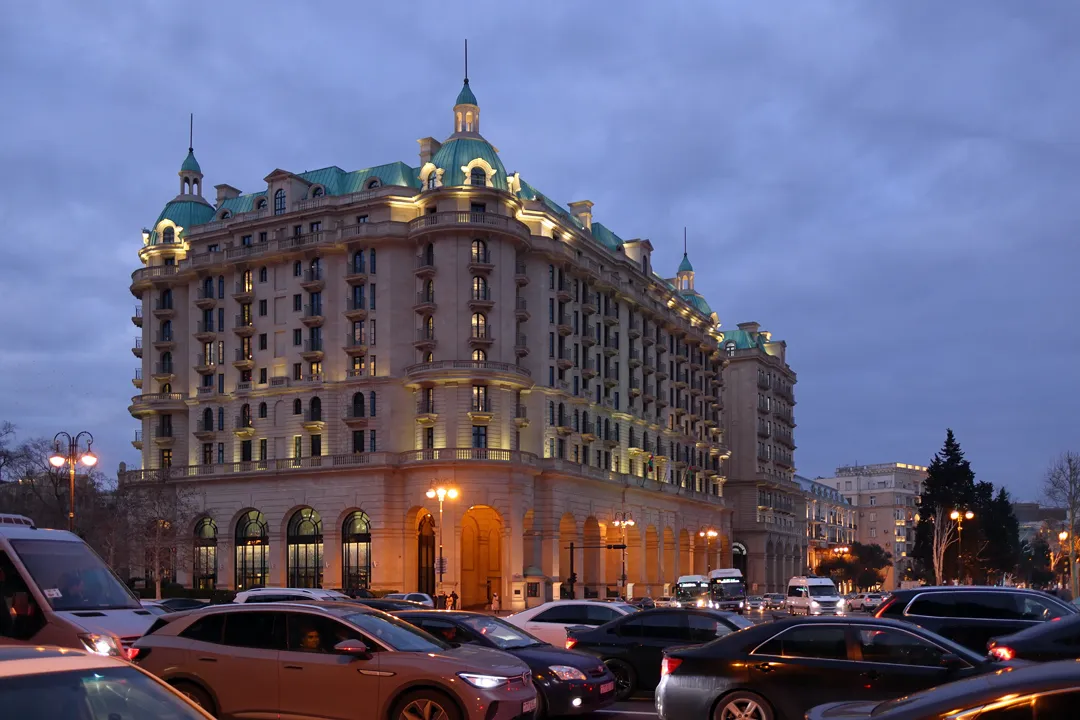
Finally, we arrived at the base of the hill where the Flame Towers stand. From here, the top can easily be reached via the funicular, which starts from the purple building. The fare of 1 manat is extremely low considering that it is primarily of interest to tourists.
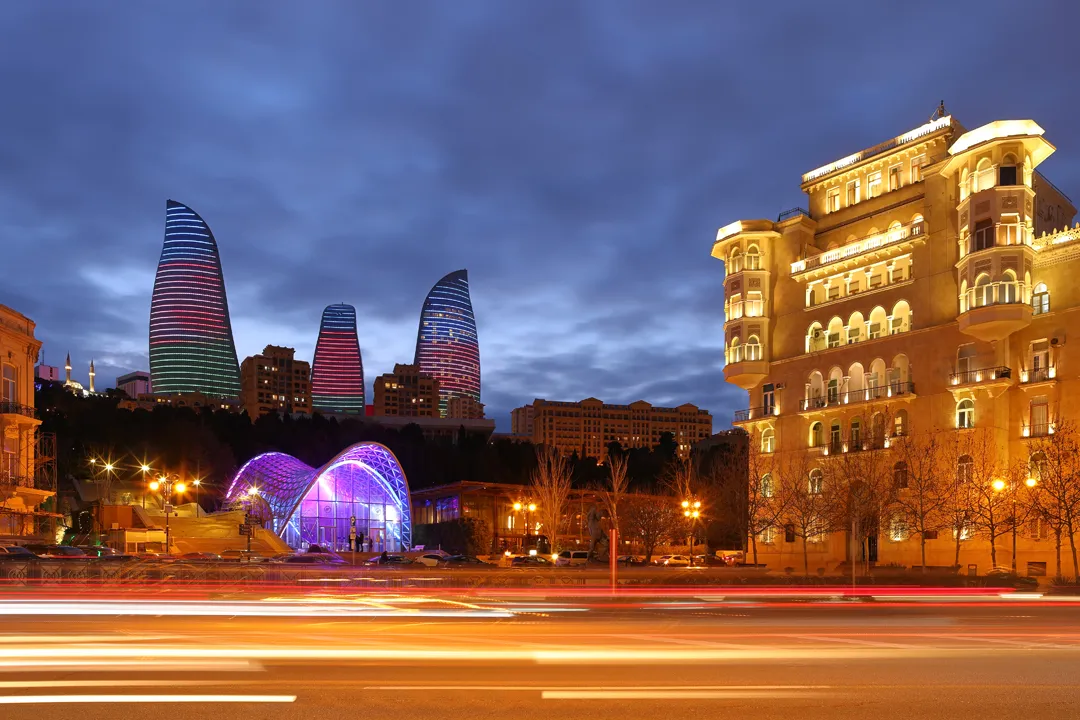
We had to wait for a while until the next departure, but at least it was warmer inside the station than outside, and we were able to secure the front row seats by being first in line.
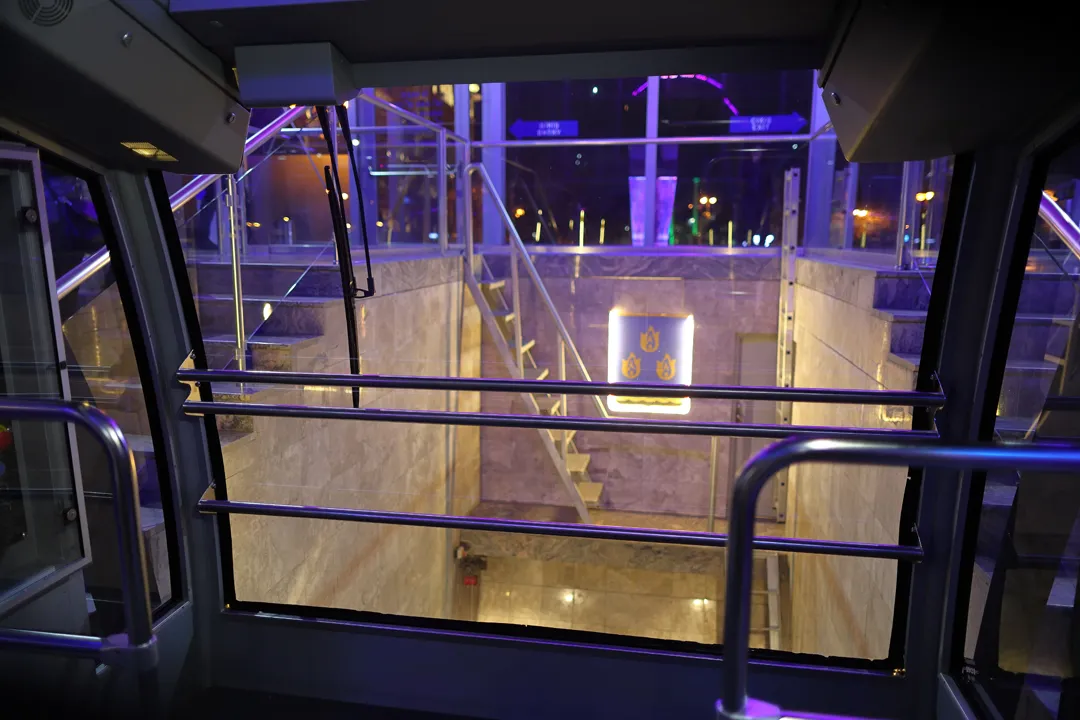
However, even when sitting in the front, the view during the ride is not particularly good because both sides are obstructed by trees. Only outside the station at the top is it possible to get a clear view of the entire city.
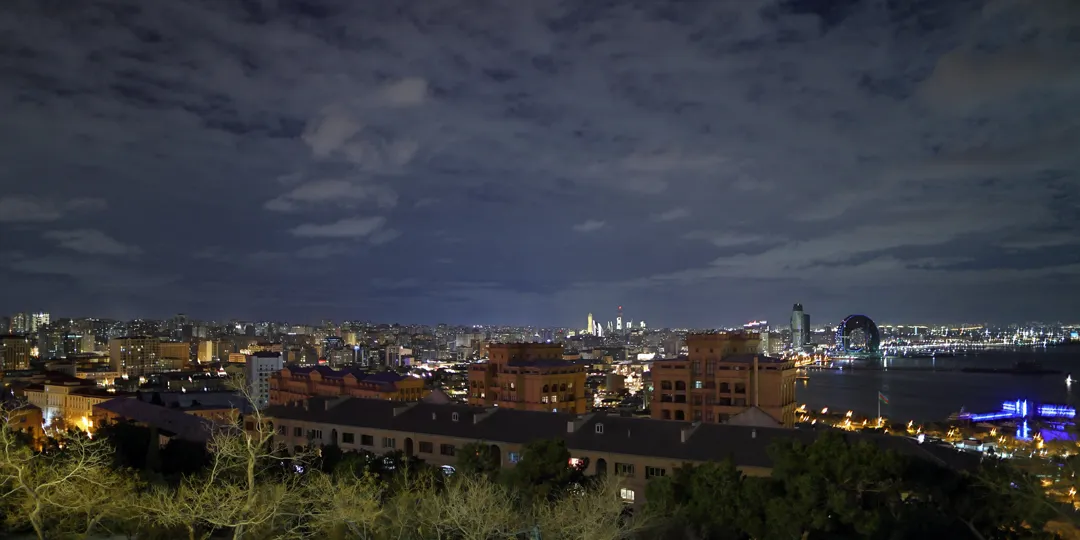
A mosque is located next to the upper station, and there was still ongoing activity when we passed by. For Azerbaijanis though, attending religious services is overwhelmingly the exception rather than the rule. Azerbaijan is by far the most secular Muslim country in the world: alcohol is commonplace and hardly any women wear headscarves. Historically, it was the first Muslim country to give women the right to vote; this was achieved in 1918, earlier than in many Western countries including the USA, UK, France, Italy, and Sweden.
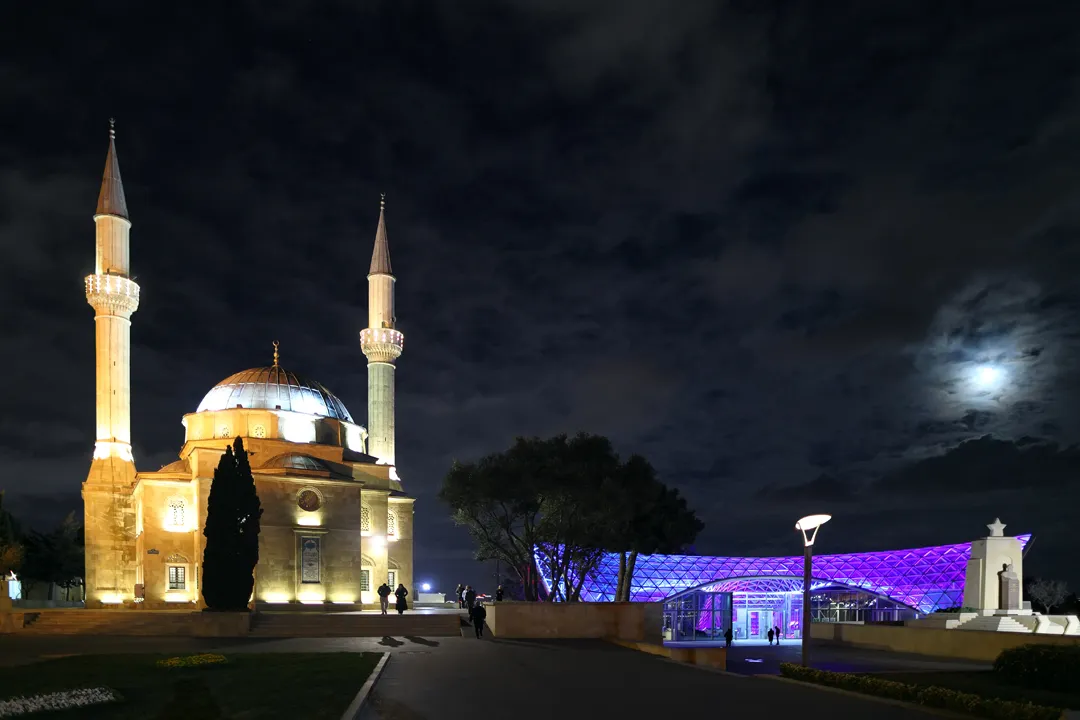
From here, the Flame Towers are just across the street. The lights alternately display a waving Azerbaijani flag and a fire animation. We only stayed there for the time needed to take photos, as the towers are not open to the public and it was extremely cold outside.
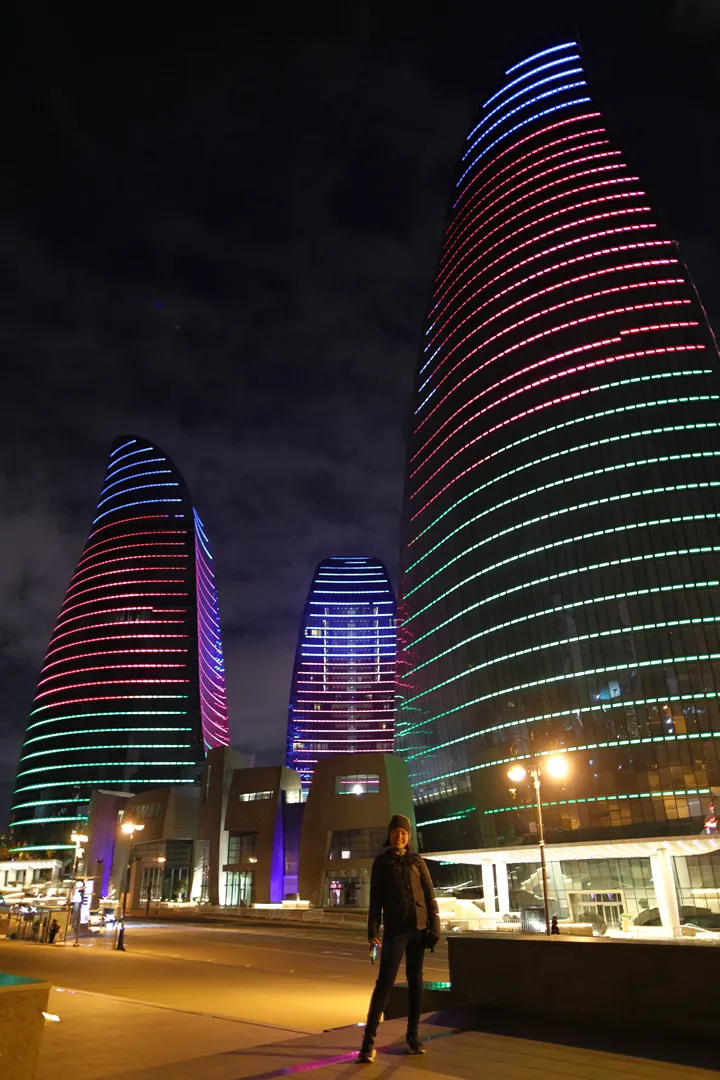
We rode the funicular again to go back down, and then searched for restaurants around Nizami Street, a throughfare named after the 12th century poet Nizami Ganjavi. The pedestrianized section in the central part of Baku is considered the city’s prime commercial area.
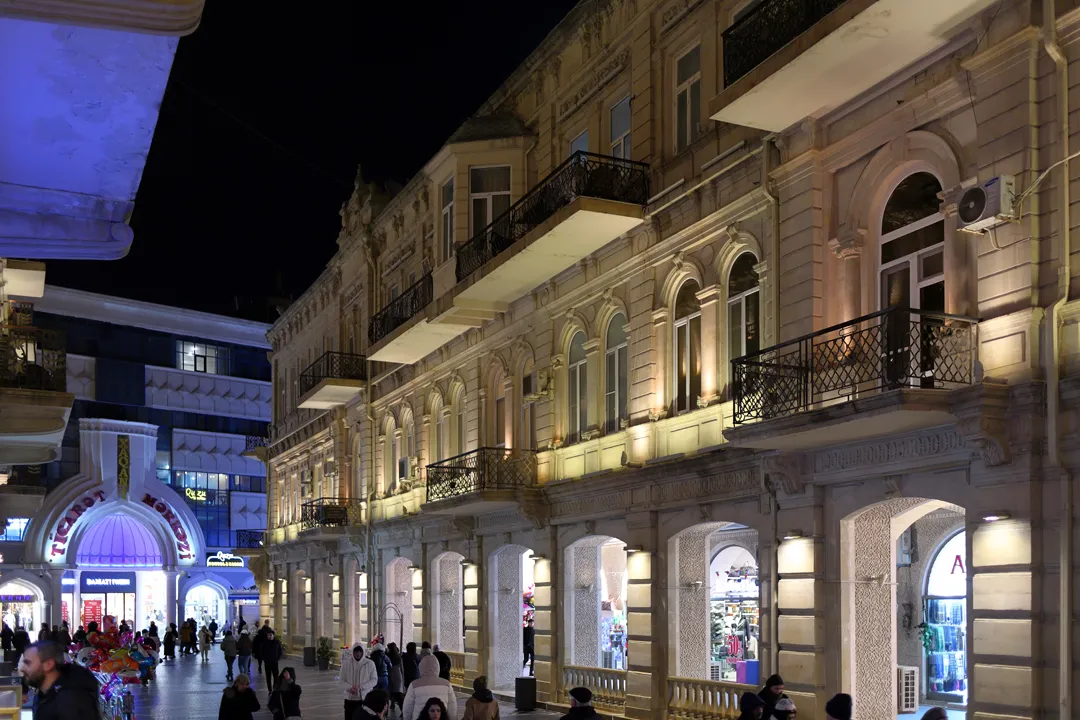
It is one of the busiest places in Baku, more so than the Old City because residents, not just tourists, go there to eat and shop. We were lucky that we could walk there from our hotel because the lack of parking forces drivers to use questionable methods.
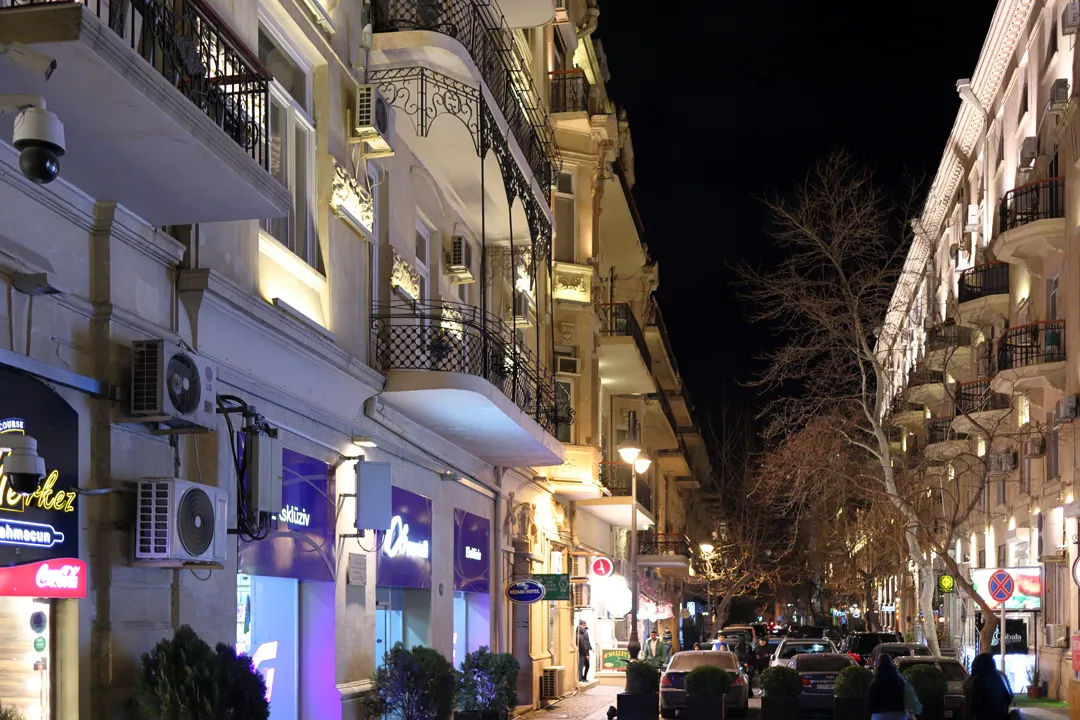
Most of the restaurants are international, which is another indication that the area is frequented by locals. We had to use some effort to find an Azerbaijani restaurant.
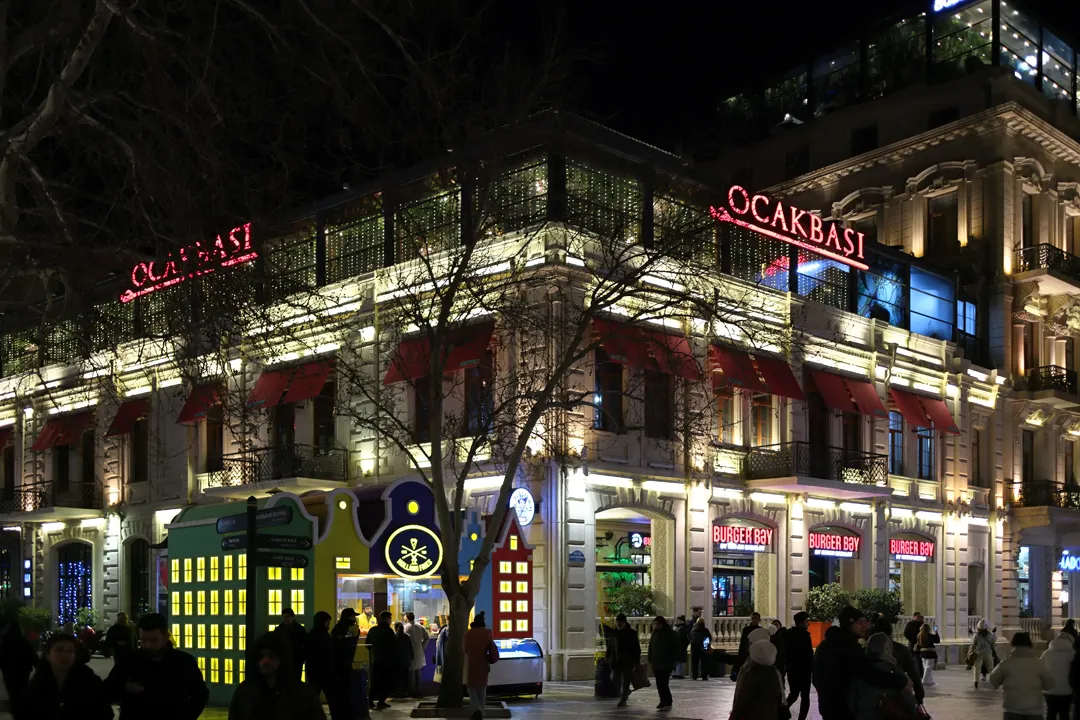
After walking around several blocks, we chose a restaurant located in a basement with a metro-like entrance outside. The food was quite good but we couldn’t finish because we ordered too much.
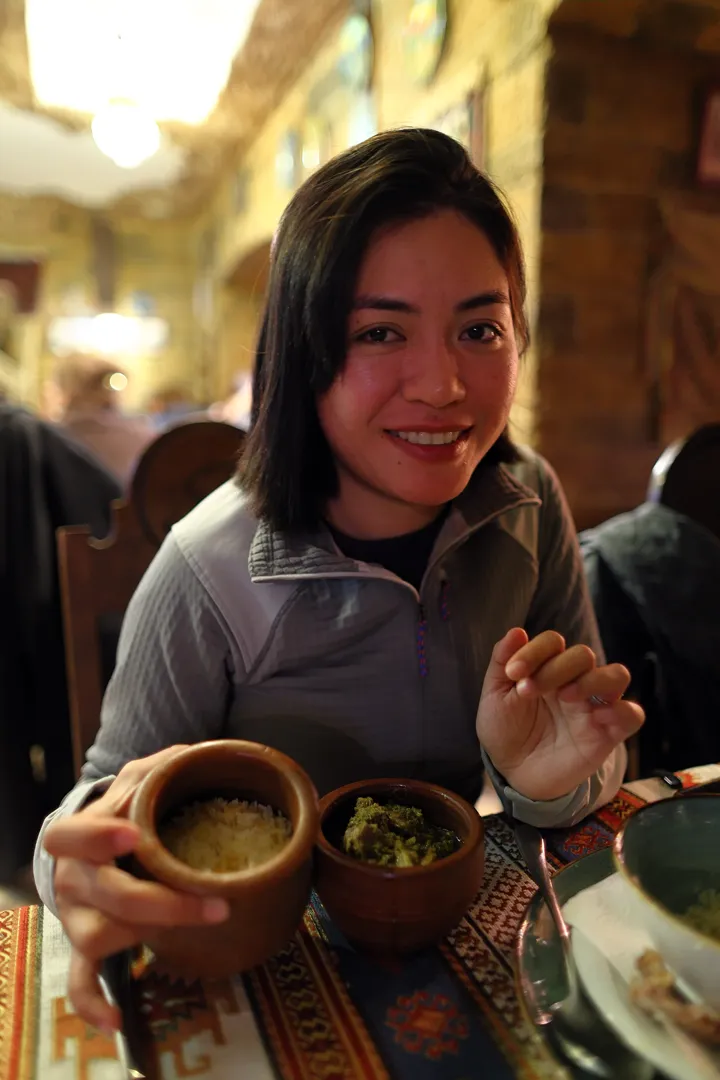
This marked the end of the first half of our trip to Azerbaijan. We had acquainted ourselves with the capital, but in order to see a different side of the country, we spent the next three days in the Nakhchivan Autonomous Republic, an isolated, seldom visited region which is geographically separate from the main part of Azerbaijan. The following post covers this in greater detail: The Undiscovered Beauty of Nakhchivan.
Museum of Modern Art and departure from Azerbaijan
We returned from Nakhchivan in the afternoon of the day before we were due to leave Azerbaijan, and our departing flight was scheduled for mid-morning, so the best option was to stay in the airport hotel for the last night. But still, we had a few more hours to spend in Baku, so we left our bags in the hotel and took the airport bus to the city again. Our plan was to visit the Baku Museum of Modern Art, which required us to ride the strange light green metro line with only two stations, Jafar Jabbarly and Khatai.
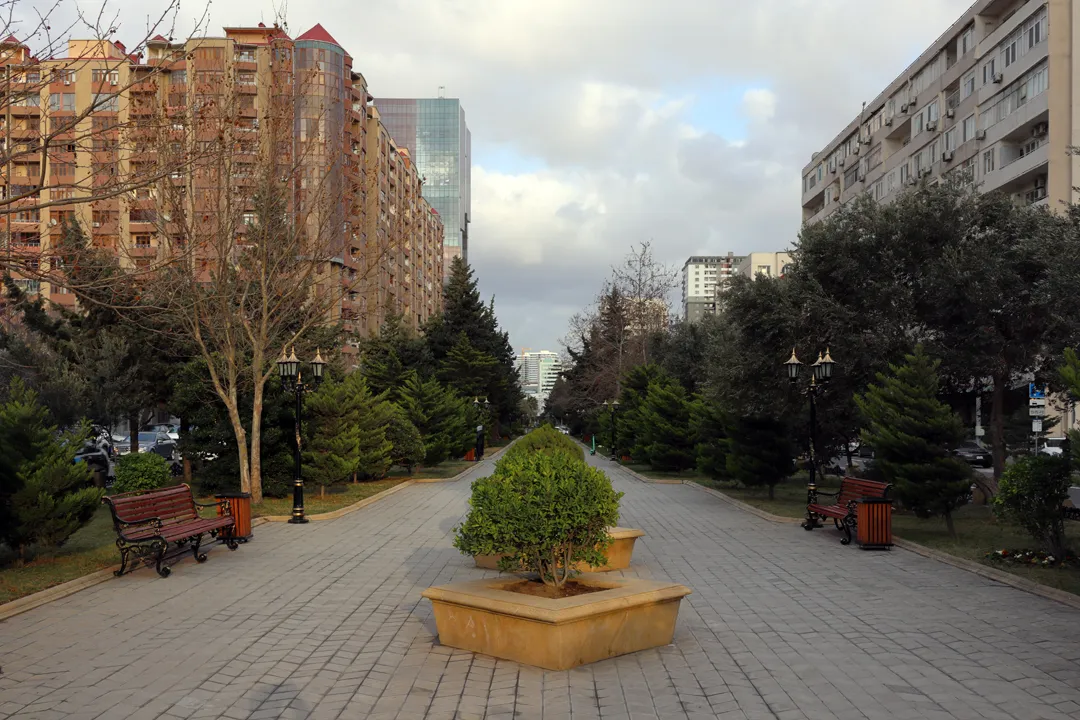
From the Khatai metro station, we had to walk for around 20 minutes to reach the museum.
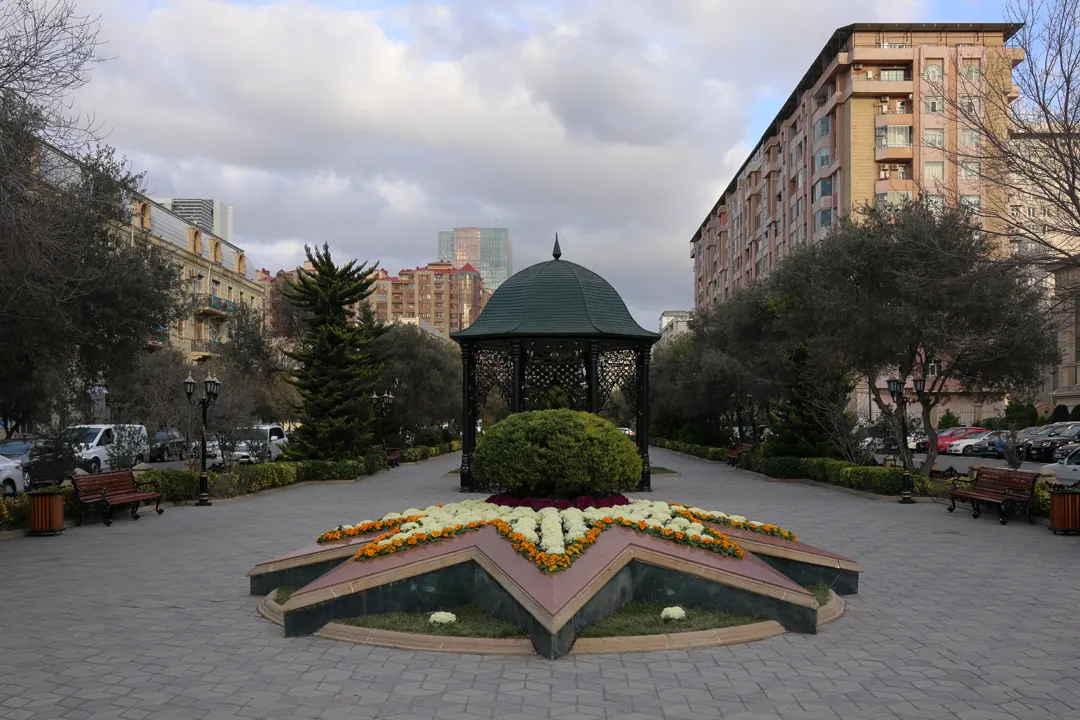
The museum occupies the bottom two floors of a residential building at a street corner near the eastern end of the Baku Boulevard. There are some sculptures outside, so it is impossible to miss.
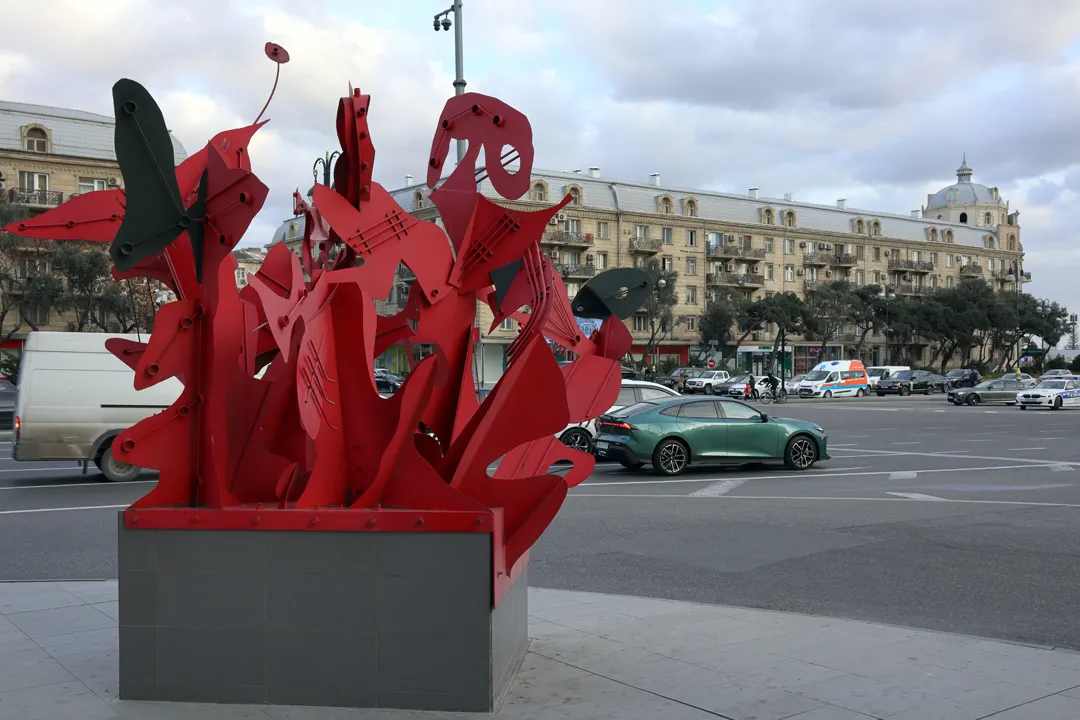
Entry to the museum costs only 5 manat, but to be honest, it is a rather subpar art museum. All available space on every wall is crammed with as many paintings as possible, and many of them are not even labelled, resulting in a chaotic and confusing viewing experience.
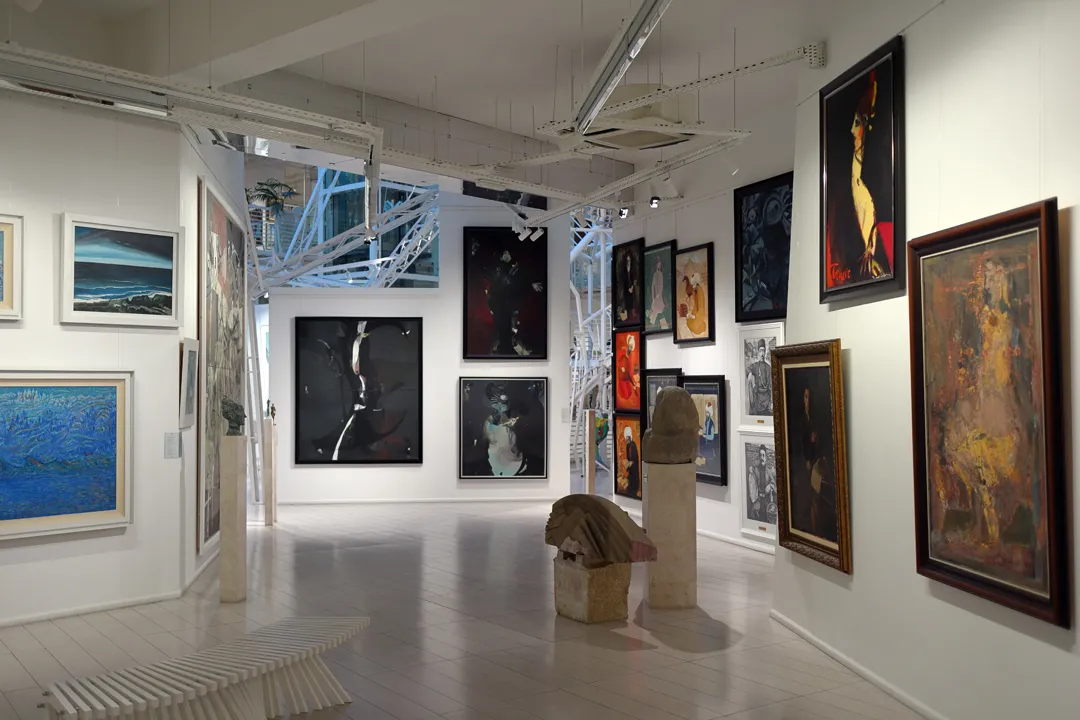
Moreover, the overwhelming majority of the artworks are of mediocre quality, and there are only a few standout pieces. In hindsight, we should have gone to the National Art Museum of Azerbaijan instead.
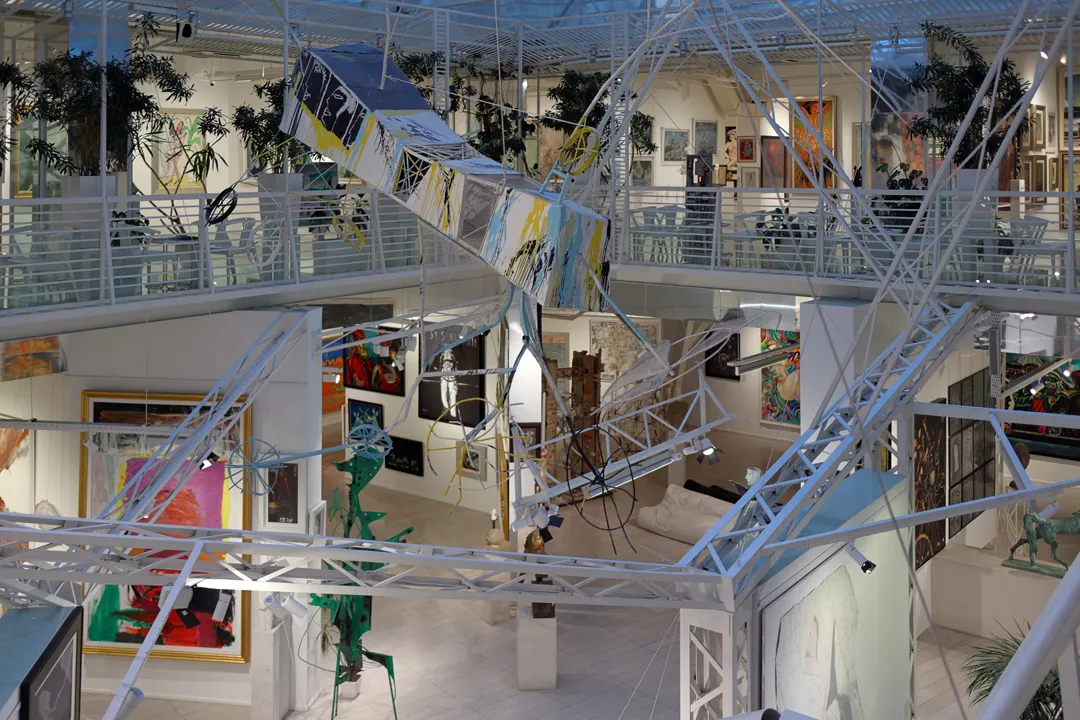
When we left the museum, it was almost sunset already. We rode a bus back to the metro station.
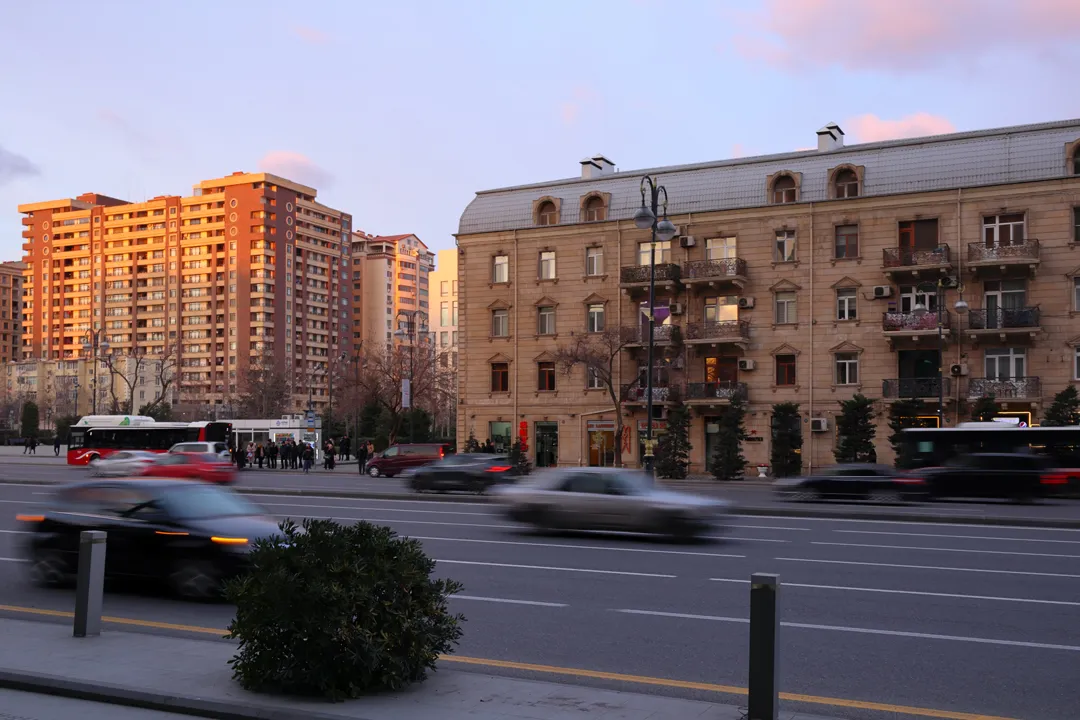
For dinner, we went to Nizami Street again and ate in a restaurant that we previously noticed but didn’t choose.
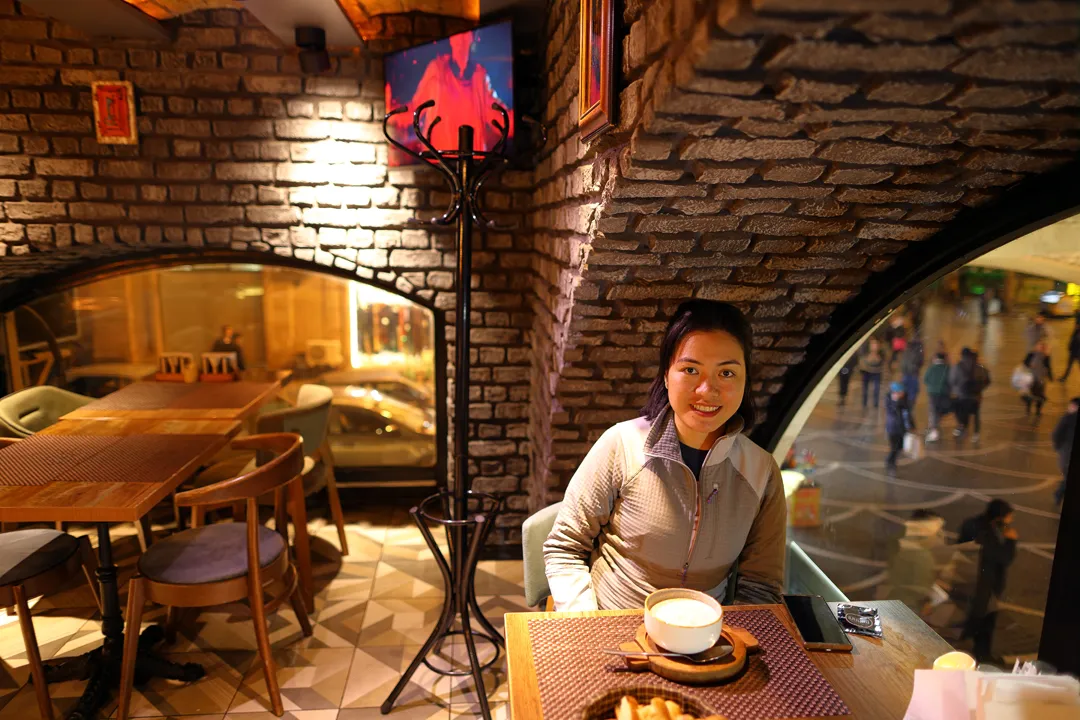
It was our last meal in Azerbaijan, so we ate a lot, having greatly enjoyed Azerbaijani food throughout our trip.
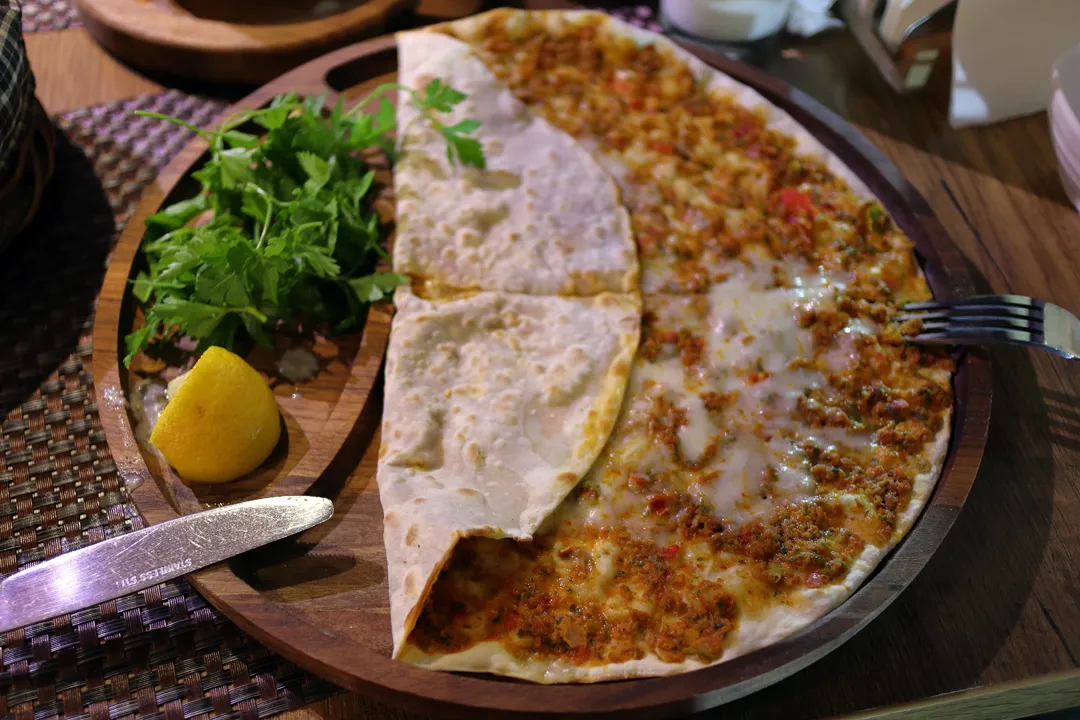
Our flight back to Dubai was at 10:00 the following morning. This time, the airline did not substitute the aircraft, so the seats were more comfortable than on our arriving flight.
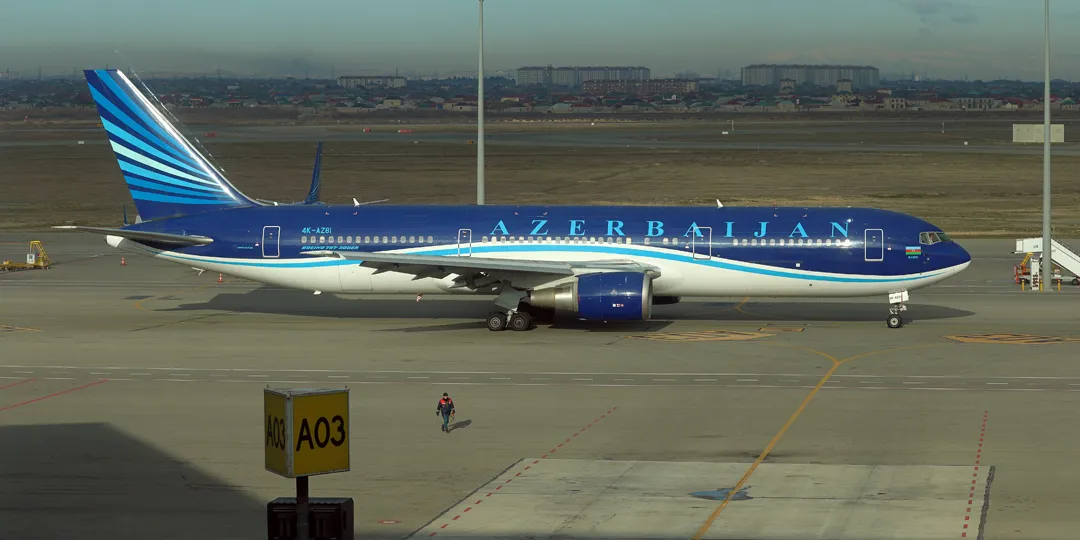
We were scheduled to have a layover of 1.5 hours in Dubai; then we would go onward to Saudi Arabia and after that, Singapore. Azerbaijan was incredibly fascinating and rewarding to visit, and hopefully we will go there again at some point.
